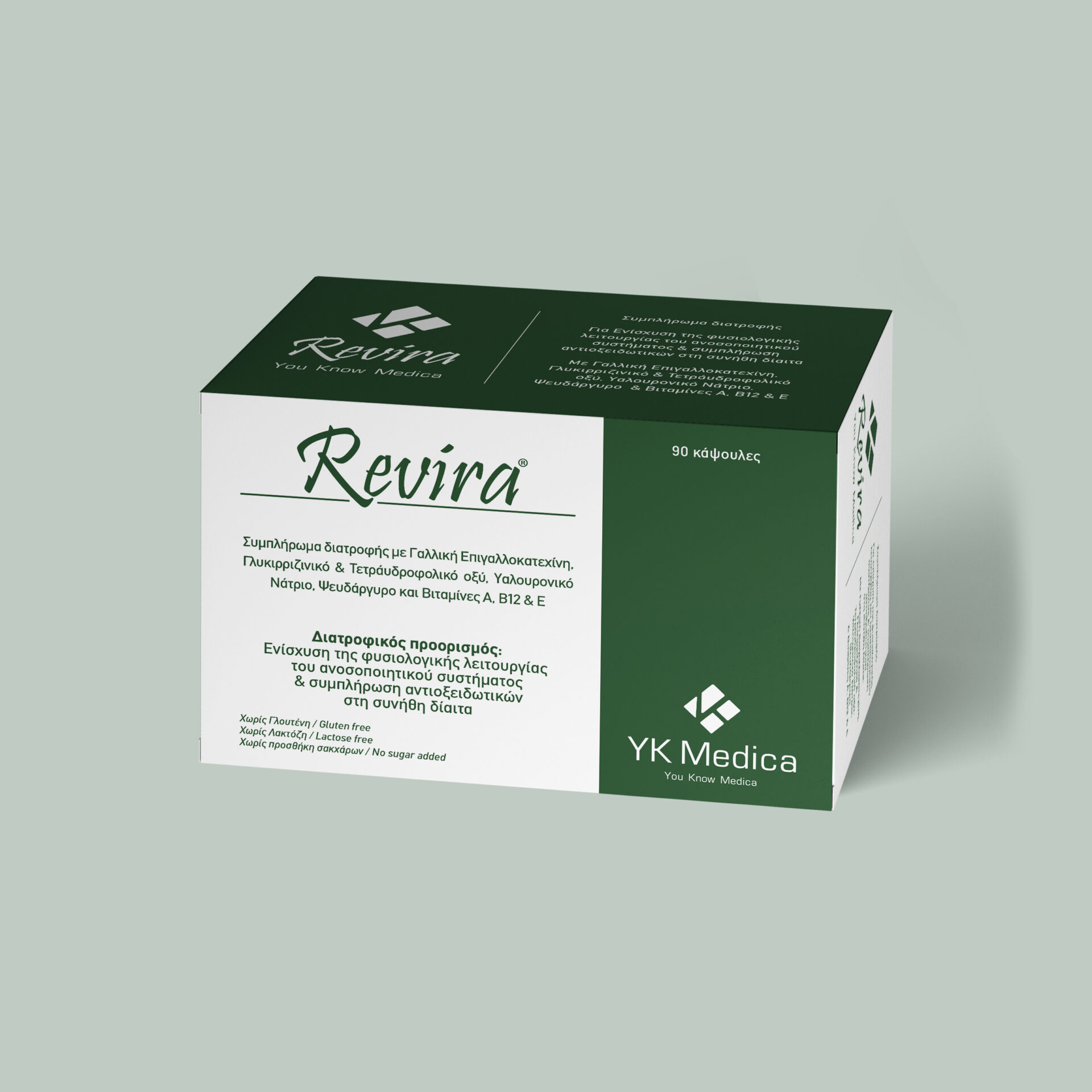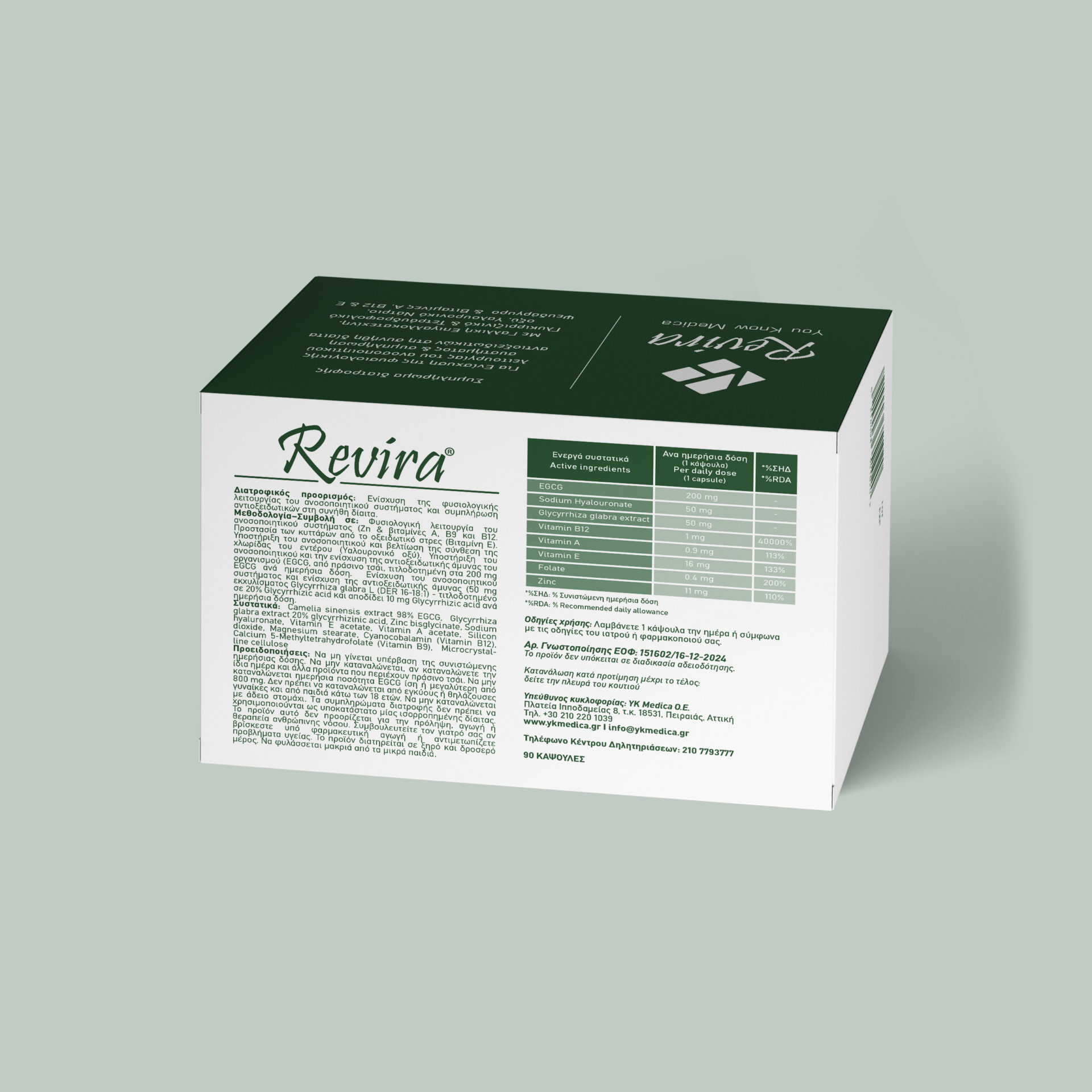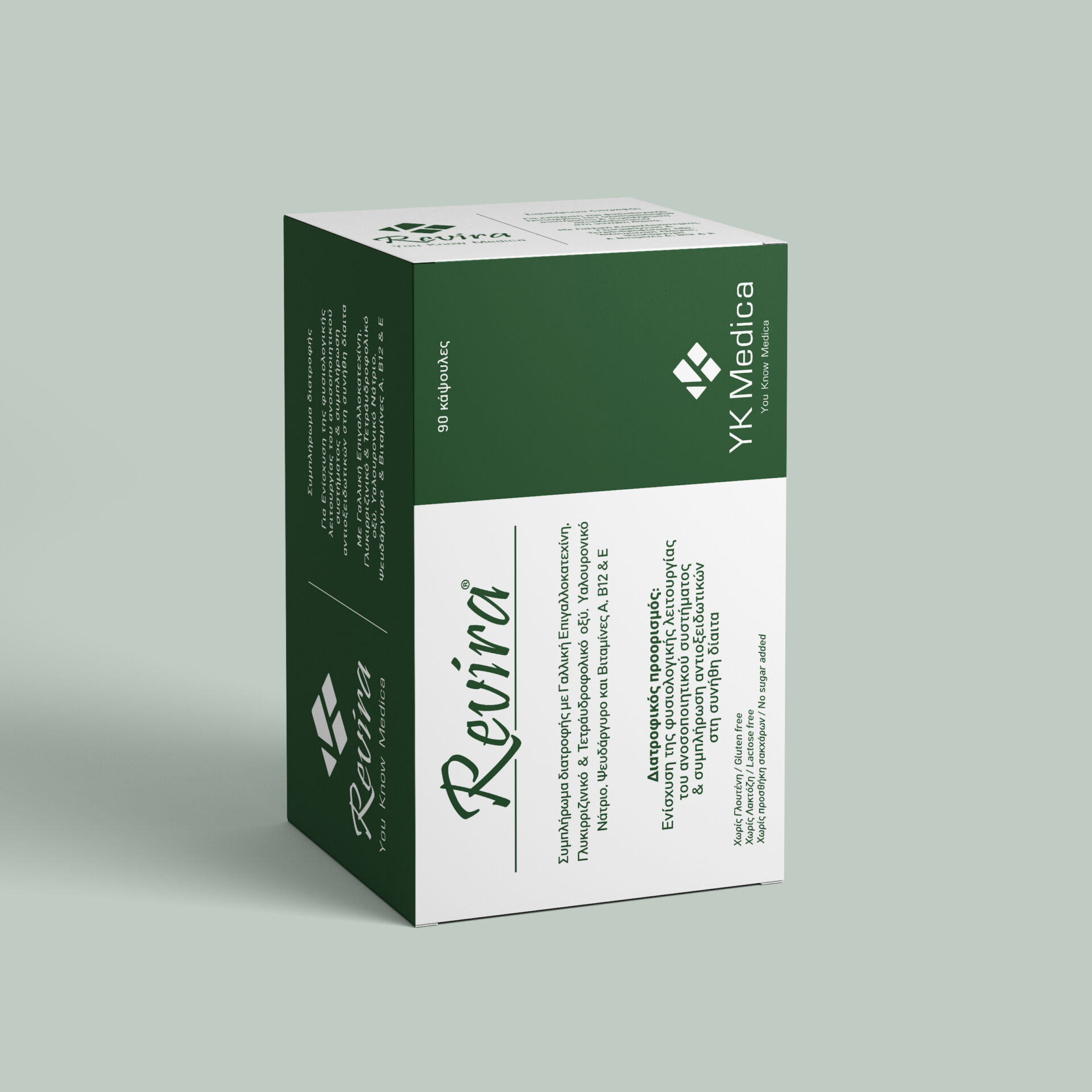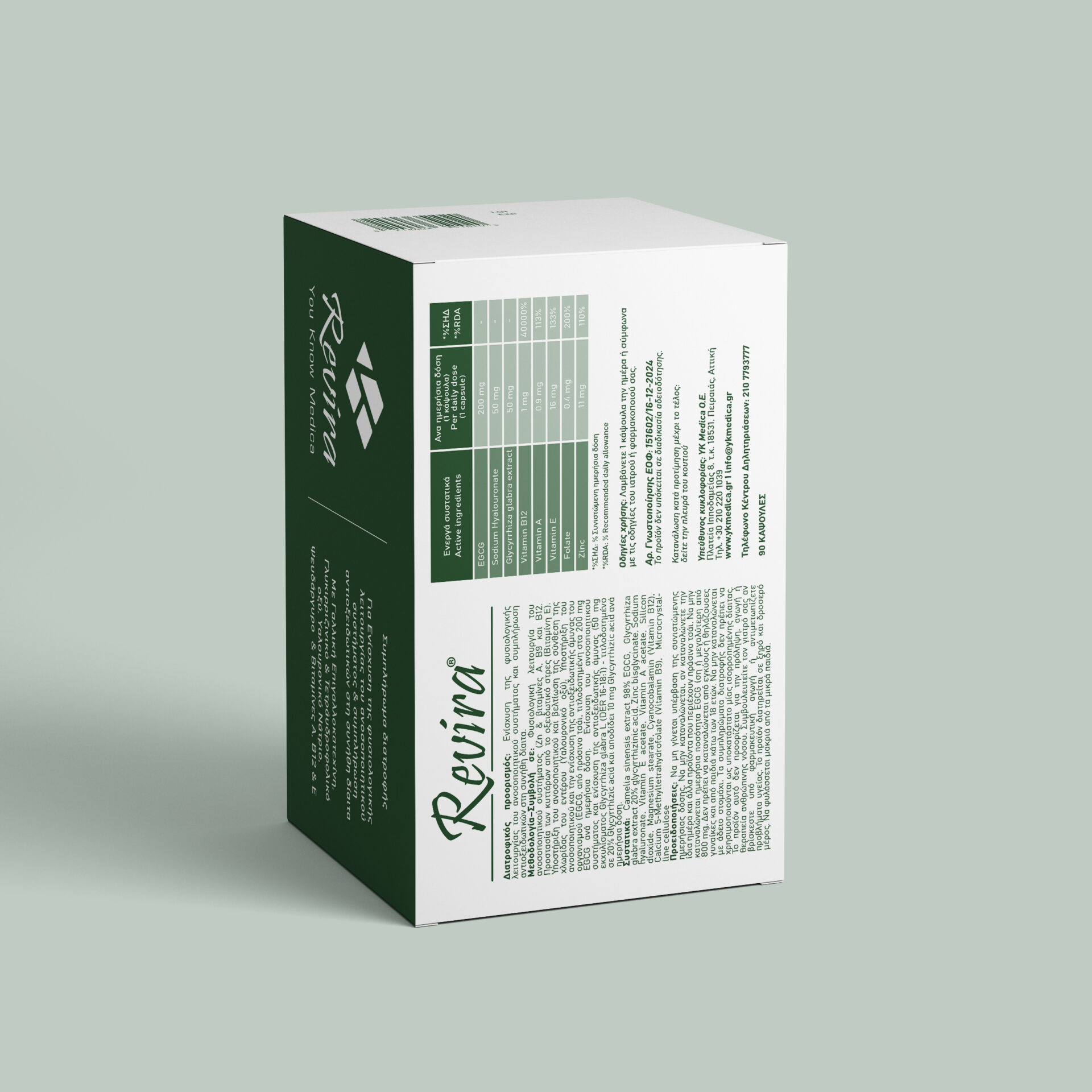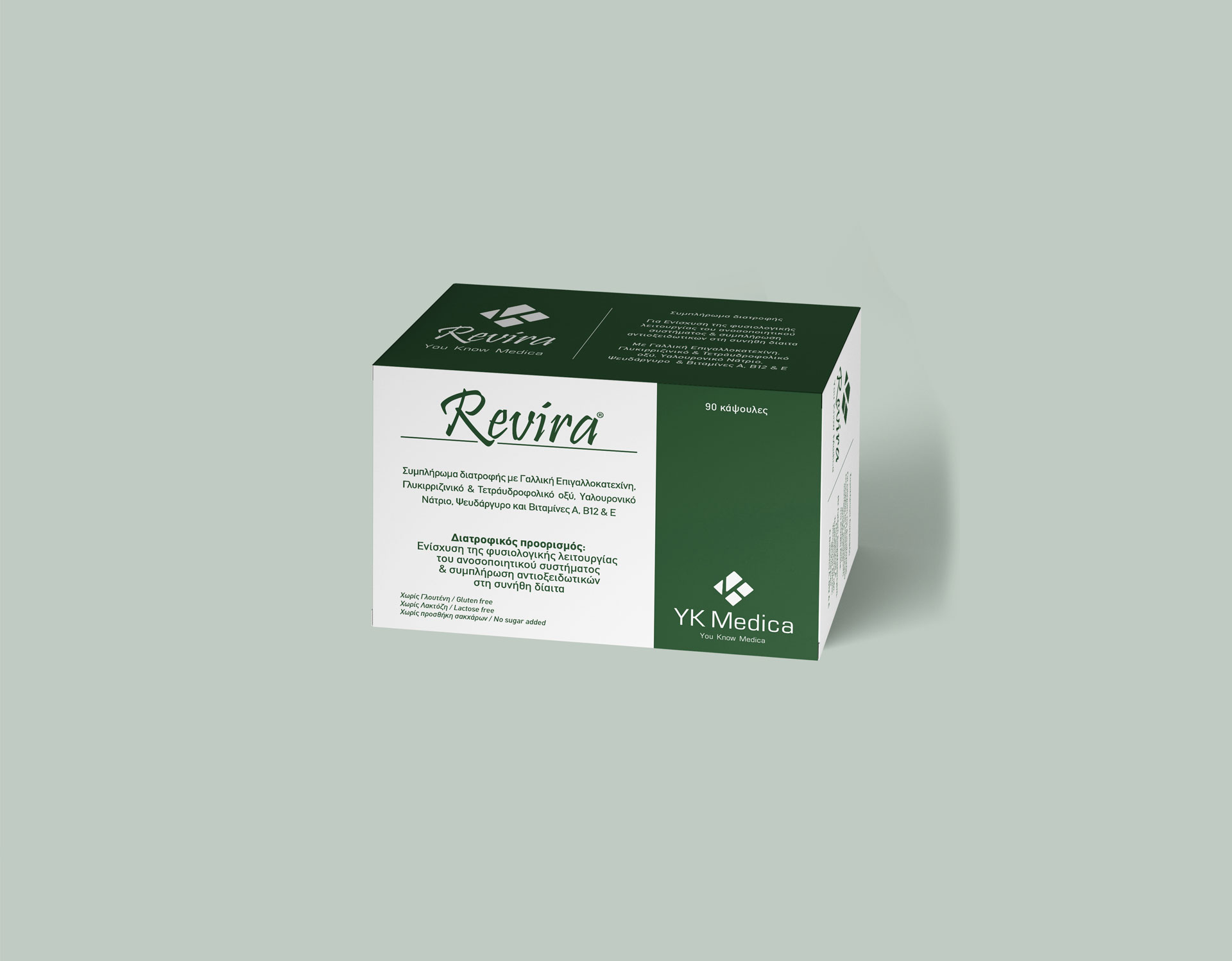Revira
149,90 €
Dietary supplement containing Epigallocatechin Gallate, Glycyrrhizinic & Tetrahydrofolic Acid, Sodium Hyaluronate, Zinc and Vitamins A, B12 & E
You will be able to add it to the checkout page.
Revira
What is Revira (90 caps)?
Revira is a health food supplement, designed to provide:
- Enhancement of the normal function of the immune system (Zn & vitamins A and B12)*
- Protection of cells from oxidative stress (Vitamin E)
- Support of the immune system and improvement of the composition of the intestinal flora (Hyaluronic acid)*
- Support of the immune system and strengthening of the body’s antioxidant defense (French Epigallocatechin EGCG, from green tea, titrated at 200 mg EGCG per daily dose)*
- Strengthening of the immune system and strengthening of antioxidant defense* (50 mg of Glycyrrhiza glabra L extract (DER 16-18:1) – titrated at 20% Glycyrrhizic acid – Glycyrrhizic acid and yields 10 mg Glycyrrhizic acid per daily dose) dose
Composition was inspired by published clinical studies*, which document the reported favorable (nutritional effects) of its selected ingredients, individually or in combination, in various control groups, but also specifically based on the nutritional needs of HPV virus carriers. Nutritional purpose (in summary):
«Enhancement of the normal function of the immune system and supplementation of antioxidants in the usual diet.»
What is not Revira (90 caps)?
Revira is not a medicine
What is the packaging of Revira?
Box of 90 capsules (6 x 15)
Why not less than 90 capsules (per box)?
Because in the literature, the benefits of nutritional management are measurable after at least 3 months
Why capsules and not another form?
Capsules were chosen to preserve the physicochemical characteristics of the ingredients and achieve the targeted daily intake & ease of taking (practical and organoleptic)
Who can take Revira and who cannot?
- Revira can be taken by anyone who wishes or needs (according to the instructions of health professionals) to strengthen the normal functioning of the immune system and supplement antioxidants in the usual diet
- Revira is designed with inspiration from the special nutritional needs of HPV virus carriers, but is not limited to them
- Regarding the exclusion from the use-consumption of Revira, you can consult the section “Warnings for taking Revira”
- In any case, it is recommended to consult your doctor if you are under medication or are facing specific health problems.
What is the composition of Revira?
Camelia sinensis extract 98% EGCG, Glycyrrhiza glabra extract 20% glycyrrhizinic acid, Zinc bisglycinate, Sodium hyaluronate, Vitamin E acetate, Vitamin A acetate, Silicon dioxide, Magnesium stearate, Cyanocobalamin (Vitamin B12), Microcrystalline cellulose
| Active ingredients | Per daily dose (1 capsule) | %RDA |
|---|---|---|
| EGCG | 200 mg | – |
| Sodium hyaluronate | 50mg | – |
| Glycyrrhiza glabra extract | 50 mg | – |
| Vitamin B12 | 1 mg | 40000% |
| Vitamin A | 0.9 mg | 113% |
| Vitamin E | 16 mg | 133% |
| Folate | 0.4 mg | 200% |
| Zinc | 11 mg | 110% |
*%RDA: % Recommended daily allowance
Dosage and duration of taking Revira
- One (1) capsule per day after meals, for at least 3-6 months
- The attending physician can individualize. However, it is recommended that you do not exceed four (4) capsules per day
Warnings for taking Revira
- Do not exceed the recommended daily dose
- Do not consume at the same time or in parallel (on the same day) with other products containing green tea
- Do not consume a daily amount of EGCG equal to or greater than 800 mg
- Not to be consumed by pregnant or lactating women and by children under 18 years of age
- Do not consume on an empty stomach
- As a dietary supplement, it should not be used as a substitute for a balanced diet
- Not intended for the prevention, treatment or cure of human disease
- Gluten free
- Lactose free
- No sugar added
- Consult your doctor if you are on medication or have health problems
- Keep in a dry and cool place
- Keep out of reach of small children
- (Hellenic) Poisoning Care Line Telephone: +30 210 7793777
Is Revira licensed by the Hellenic Food and Drug Administration (EOF)?
As a health food supplement, Revira is not subject to a licensing process.
151602/16-12-2024
Who is responsible for marketing Revira?
YK Medica G.P.
Ippodameias Square 8, p.c. 8531, Piraeus, Attica
Tel. +30 210 220 1039
www.ykmedica.gr | info@ykmedica.gr
Barcode: 5 214003 351020

The inspiration for creating Revira
Nutritional management needs (indicatively in HPV carriers)
HPV Facts
Human papillomavirus (HPV) infection is a common sexually transmitted infection worldwide.
The infection often has no symptoms and goes away on its own, but if it persists, it can lead to cancer in both men and women.
Vaccination is the main way to prevent HPV, but not all types of HPV are covered by vaccines.
What are the treatment approaches for HPV?
- “Wait and See” (hope the virus goes away on its own)
- Rx/OTC creams (warts) Minimally invasive procedures (precancerous cervical cancer)
- Surgery, Chemotherapy, Radiation (cancer)
- Nutritional management (increasingly reported in the literature and practiced in primary care)
- Gene therapies (very promising, but not yet practical)
There is no cure for HPV
While there are various symptomatic treatments for manifestations due to HPV, including genital warts, cervical precancer and cancer, and other HPV-related cancers, there are no FDA-approved treatments for the virus itself.
Development into cancer is rare, however uncertainty exists due to the inability to predict & identify infections that may progress to cancer.
Concerns about HPV persistence
«Persistence» is defined as the detection of the same virus strain affecting a patient at two separate times.
The time interval between the two tests shifts from nine months to two years.
The phenomenon of persistence is important as it is a risk factor for the integration of viral DNA into the host genome.
The persistence of HPV infection is a risk factor for the integration of viral DNA into the host genome, leading to transformative events (e.g. neoplastic processes).
The inadequacy of existing treatments against persistent HPV infections reveals an unmet medical need.
Description of the Need
HPV is not treated holistically, with some invasive approach.
The Physician needs to manage:
- The adequacy of nutrients, which induce a strong immune response
- The reduction (or even elimination) of the viral load
- The enhancement of the existing antioxidant activity
- The pursuit-enhancement of the rejection of the virus by the host cells
- The pursuit of the above with safety and ease, for a medium or long period
Scientific documentation of Revira’s composition
Data and/or Conclusions (indicative) from published Scientific studies, regarding the ingredients of Revira (individually or in combination) & additional bibliography
EGCG
«In conclusion, we have demonstrated that EGCG inhibits the growth of premalignant HPV18-positive keratinocytes by stimulating E6 and E7 viral oncoproteins’ turnover through the ubiquitin–proteasome pathway… Our Phase II clinical trial (EPIVIN), which evaluated the use of topical EGCG ointment for the treatment with uVIN has revealed promising results.»
«EGCG inhibited HPV-16 oncoprotein-induced angiogenesis conferred by NSCLC through the inhibition of HIF-1α protein expression and HIF-1α-dependent expression of VEGF, IL-8, and CD31 as well as activation of Akt, suggesting that HIF-1α may be a potential target of EGCG against HPV-related NSCLC angiogenesis.»
EGCG, Hyaluronic
«In this work, we developed novel nanogels based on selfassembly of hyaluronic acid (HA)-(-)-epigallocatechin-3- gallate (EGCG) conjugates, linear polyethylenemine (PEI) and the cytotoxic protein Granzyme B (GzmB) for the intracellular delivery of GzmB for cancer therapy. HA was exploited for its ability to target CD44 which are overexpressed in many types of cancer cells, while EGCG, the main component of green tea catechins, was chosen for its ability to bind to proteins. Characterization studies showed that EGCG facilitated protein complexation through physical interactions and led to the formation of stable nanogels. HA-EGCG nanogels were able to achieve CD44 targeted killing of HCT-116 cancer cells by delivering GzmB into the cytosol of these cells. We believe that the applications of the HA-EGCG nanogels can be expanded to the intracellular delivery of other cytotoxic protein drugs for cancer therapy»
EGCG, Glycyrrhizinic
«GTE and EGCG can remarkably inhibit the HPV-16 oncoproteins-induced expression of HIF-1alpha protein, and VEGF protein and mRNA in human cervical carcinoma cells Moreover, GTE and EGCG decrease the VEGF protein expression dose-dependently»
Vitamin A, Vitamin E, Folate
«Although HPV plays a pivotal role in cancer development, certain protective elements, including fruits, vegetables, vitamins C and E, as well as α and β-carotene, along with lycopene, have been recognized for their potential in mitigating cervical cancer… Higher folate levels are linked to improved HPV clearance and decreased persistent HPV infections… Adequate intake of Vit A, B1, C, D, and K will reduce the risk of high-risk HPV infection… Alcohol and tobacco consumption can suppress or alter immune response to HPV infection, potentially aiding the virus in evading immune detection which can contribute to its associated cancer development.»
EGCG, Hyaluronic, Vitamin B12, Folate
«Human Papillomavirus (HPV) infection represents a global health concern. HPV infects the mucosa, particularly in the uterine cervix, where it may establish a persistent infection, exposing women to a risk of developing cancer. The available treatments include surgery or topic solutions, while a systemic treatment is still unavailable. In recent years, natural molecules such as epigallocatechin gallate (EGCG), folic acid (FA), vitamin B12, and hyaluronic acid (HA) gained importance as innovative therapies for HPV. We enrolled 163 women with a positive HPV DNA test or previous history of HPV infections, and a PAP test indicating LSIL/AGUS/ASCUS cytology. The patients in the treatment group (n = 86) received an oral combination of EGCG 200 mg, FA 400 µg, vitamin B12 1 mg, and HA 50 mg (1 cps/day) for 3 months (T1), while the control group (n = 77) underwent standard clinical surveillance. Both groups repeated a PAP test and an HPV DNA test after 3 (T1) months, and another PAP test after 6 months (T2) as a follow up. The treatment group experienced a significant reduction in HPV positivity at T1 compared to the control group. Moreover, the treatment group exhibited an improvement in cervical lesions either at T1 (p < 0,0001) or T2 (p < 0,00001). »
«The management of HPV infections remains a critical topic among physicians, especially considering the persistence of the virus with its evolutionary success. To date, current strategies only act on preventing HPV infections through vaccines and screening programs or on targeting the clinical manifestations, such as cervical lesions and condylomas. Specific treatments that counteract the viral resistance, eradicating the virus, are still lacking. In this clinical case, the eight-week oral supplementation, containing EGCG, vitamin B12, folic acid, and HA, restored the high-grade cervical lesions, thus relenting or delaying the surgery of hysterectomy in a fertile patient. In addition, the six-month follow up after the beginning of the oral assumption, corroborated the initial beneficial outcomes. The negativity of the HPV DNA test and the improved colposcopy examination, along with the objective gynecological exam, open the possibility of considering such results not casual but relative to the treatment. Overall, in light of these results and considering (i) the antiproliferative and proapoptotic activities of EGCG, (ii) the preventive effect of vitamin B12 and (iii) folic acid against viral integration, and (iv) the re-epithelizing property of HA, the combination of these molecules provides a promising tool in the management of HPV infection. »
«The management of HPV infection and its persistence remains a critical topic in clinical practice. These five clinical cases evidenced the positive effects of the above-mentioned combined natural molecules—EGCG, folic acid, vitamin B12 and HA—to treat HPV DNA positivity both at the anal and cervical regions. These data are in line with previous preclinical and clinical evidence supporting the clinical use of such dietary supplements to counteract HPV persistence. Indeed, to date, physicians have vaccines and screening programs for preventing infections and local approaches for targeting manifestations such as cervical lesions and condylomas, but the persistence of the infection still remains an unsolved problem. The obtained results corroborate the recent existing evidence for the clinical use of these natural molecules, extending their efficacy also to the anal region. In this way, they further support the possibility of considering this dietary supplement as an effective and promising approach in the management of HPV infection and its persistence »
through Dietary Supplementation of EGCG, Folic Acid, Vitamin B12 and Hyaluronic Acid: Clinical Case Reports. J. Clin. Med. 2024, 13, 3597. https://doi.org/10.3390/jcm13123597
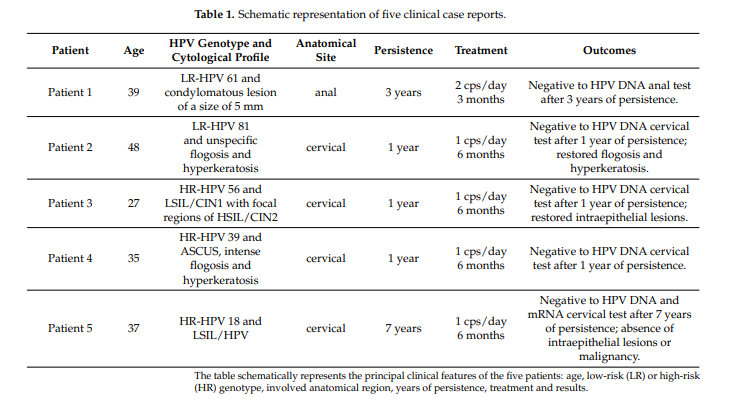
«… combination of EGCG, FA, vitamin B12, and HA may exert preventive effects against the progression from mild dysplasia to a more severe stage of cervical neoplasia»
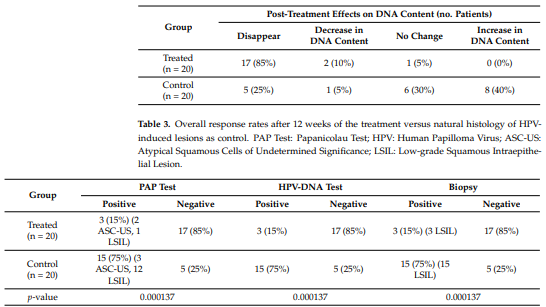
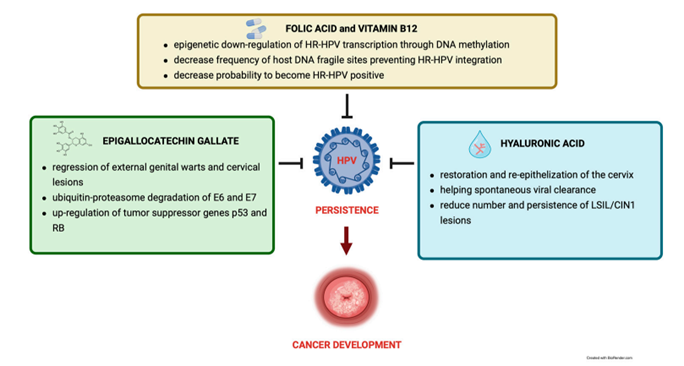
––
«RESULTS: The association of EGCG + FA + B12 + HA induced a significant increase of apoptosis and p53 gene expression with a concomitant decrease of E6/E7 gene expression, a marker of HPV infection.
CONCLUSIONS: This study provides for the first-time evidence on the potential additive activity of EGCG + FA + B12 + HA in counteracting HPV infection, by increasing apoptosis and p53 expression in HPV-infected cervical HeLa cells»
Vitamin B12, Folate
«In the process of progression to cancer from atypical squamous cells of undetermined significance (ASCUS), mostly Human Papilloma Virus (HPV) is responsible. Additionally, patients with cell cycle disorders are thought to be at risk. The aim of this prospective cohort trial was to analyze the association between presence of ASCUS and HPV persistence with folate and vitamin B12 levels. 200 patients who had Papanicolaou (PAP) smear test were divided into a ASCUS group (n:100) and control group (n:100). Control group consisted of women who did not have intraepithelial neoplasia, based on PAP smear results. HPV testing was also done in study group. Serum vitamin B12 and folate levels in ASCUS (+) HPV (+) patients were significantly lower than that of ASCUS (−) or ASCUS (+) HPV (−) patients (p <0.01). In our study, there was no statistically significant difference between folate levels in patients with different types of HPV (p > 0.05), however vitamin B12 levels of patients with other high-risk HPV types were significantly lower than patients with positive HPV16–18 (p = 0.01). The positivity of HPV in women with ASCUS is associated with low serum vitamin B12 and folate levels. »
Glycyrrhizinic
«The scientific evidence reviewed on glycyrrhizinic acid highlights its broad-spectrum action as an antiviral and anticancer agent and defines the mechanisms and specifics observed against HPV and HPV-derived oncogenic processes. At the same time, glycyrrhizinic acid is proposed as a potential therapeutic agent against HPV infections and lesions »
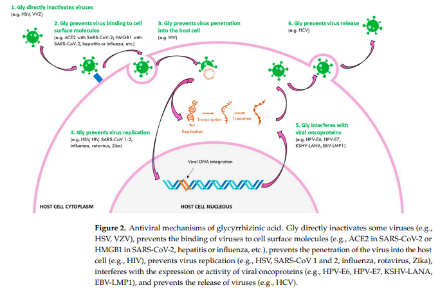
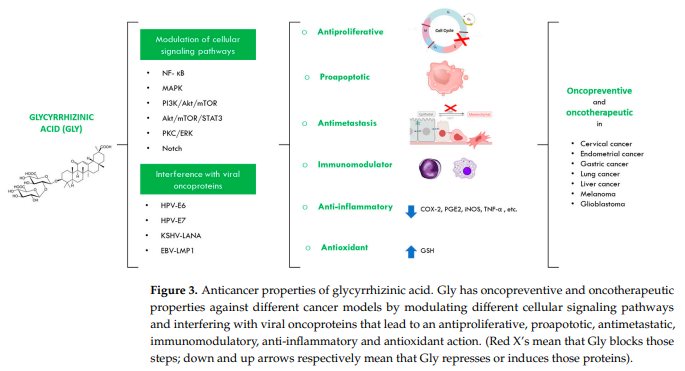
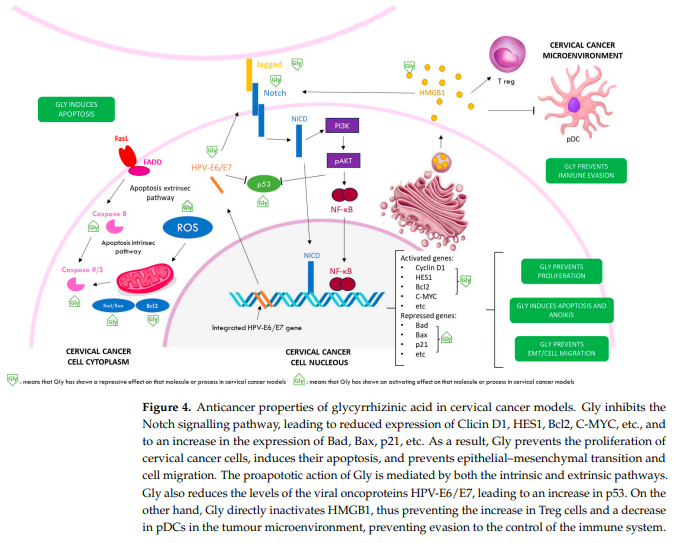
«…increasing literature have demonstrated that GL shows inhibitory effects on various cancers by inhibiting cell proliferation, inducing apoptosis and resulting in cell cycle arrest through multitudinous mechanisms…»
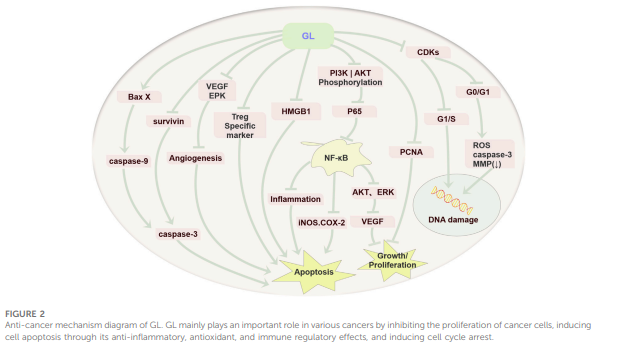
«Liquorice is a traditional medicine. Triterpenoids such as glycyrrhizin and glycyrrhizinic acid are the main active constituents of liquorice. Studies have revealed that these compounds exert inhibitory effects on several viruses, including SARS-CoV-2. The main mechanisms of action of these compounds include inhibition of virus replication, direct inactivation of viruses, inhibition of inflammation mediated by HMGB1/TLR4, inhibition of β-chemokines, reduction in the binding of HMGB1 to DNA to weaken the activity of viruses, and inhibition of reactive oxygen species formation. We herein review the research progress on the antiviral effects of glycyrrhizin and its derivatives. In addition, we emphasize the significance of exploring unknown antiviral mechanisms, structural modifications, and drug combinations in future studies»
Vitamin B12, Vitamin A, Vitamin E, Folate
«In the current study, we reported that different micronutrients might show a potential protective role against CC by intervening in different stages of the natural history of HPV infection, development of cervical dysplasia, and invasive disease. Therefore, considering the design of included studies, we may speculate on the possible association. Still, the mechanisms through which micronutrients influence the infective and carcinogenic processes remain unclear, as well as concluding that the supplementation of specific micronutrients is effective against HPV-persistent infection or pre-neoplastic lesion progression is impossible. Moreover, studies in the literature did not allow us to compare the impact of dietary intake on serum levels, often reporting discordant results. Based on the available evidence concerning the role of micronutrients, vitamins, and minerals on HPV infection and its progression to invasive CC, healthcare providers should be aware of the literature evidence and incorporate it in the counseling with other habit indications. However, further research … is mandatory to provide better evidence, and would clarify the biological mechanisms through which micronutrients may be protective against HPV infection and demonstrate if specific supplementations are effective. »
Vitamin E
«In conclusion, our study demonstrated inverse linear relationships between dietary vitamin E intake and overall high- and low-risk HPV infection. For both men and women, vitamin E may have a preventive effect on genital high-risk HPV infection. The findings of this study highlight the link between diet-related vitamin E consumption and HPV infection. Future well-designed longitudinal studies are still required to validate the impact of vitamin E on HPV carcinogenesis. »
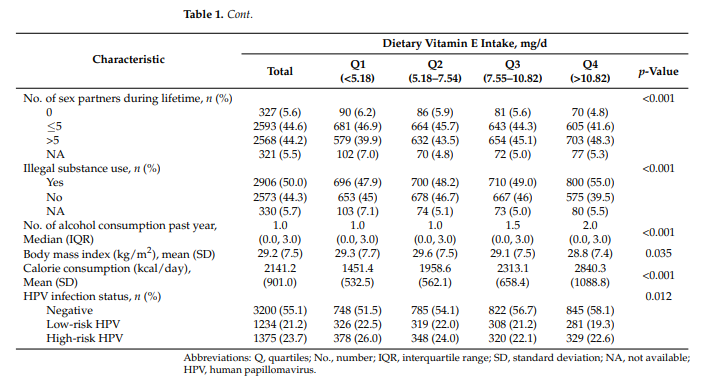
Zinc
«Aim: Human Papilloma virus is one of the most crucial infectious disease in gynecology disease. To assess the efficacy of supplemental zinc treatment in clearance of HPV infection.
Methods: Eighty zinc-sufficient women between 21-55 years, with positive HPV DNA testing, and abnormal cervical cytology in Pap test (ASCUS or LISL) were randomly divided to case (n=40) and control group (n=40). Case group received oral tablets of zinc sulfate twice a day for 3 months while control group received no placebo. During follow-up patients underwent repeat HPV DNA test and PAP test and were evaluated for clearance/persistence of HPV infection and regression/progression in the lesion grading.
Results: As far as demographics, serum zinc levels and the relevant risk factors for persistence of HPV were concerned, there was no significant difference between two groups, except for the frequency distribution of HR-HPV which was significantly higher in case group. Zinc treatment for 3 months reduced the risk of persistence of HPV infection and progression from baseline cytology (OR = 0.130) (CI 95% 0.04-0.381; p <0.001) and 0.301 (95% CI 0.777-0.116; p = 0.012) respectively. Age, initial cytology, HPV type, and contraceptive method were not related to persistence of HPV. Serum zinc levels increased in the casr group as a result of oral zinc consumption for 3-month period, though without any statistical significance (p = 0.407).
Conclusion: The results of the following study suggested that oral intake of zinc sulfate supplement for 3 months increases the rates of HPV clearance and resolution of pre-existing cervical lesion.»
«Cervical cancer is among the different types of cancers affecting women worldwide with significant morbidity and mortality. Trace elements though present in minute amount within the body, play a significant role in execution of biochemical pathways of cancer. The biological role of trace elements, particularly Cu, Zn, Se, Fe, As, Cd, and Mn, influence occurrence, incidence, proliferation, and mitigation of tumors. Fluctuations in the intracellular and extracellular levels of trace elements make them a viable option in diagnosis and therapy of cervical cancer. The incorporation of trace elements and minerals within the nanoparticulate systems provides an attractive strategy for the management of invasive cancers. Besides, supplementing trace elements during the occurrence of cervical cancer will effectively counteract tumor development. Trace elements have shown to exhibit great potential and hence will broaden the new therapeutic approaches for diagnosis and treatment of cervical cancer caused by both HPV and non-HPV induced cervical cancer. »
HPV – FAQs (plus some rarer questions)
Why is it important to know about HPV?
HPV is the main causative agent of cervical cancer.
HPV is responsible for 5.2% of all cancers worldwide.
HPV is related to 10% of cancers in women.
HPV is responsible for more than 15% of cancers in developing or underdeveloped countries.
How many types of HPV are there?
More than 200 types of the virus exist in nature.
About 190 have been isolated in the laboratory.
110 types are associated with the appearance of papillomas in mammals and birds.
120 types of the virus affect humans.
70 of them are associated with warts, i.e. the familiar warts.
About 50 types of the virus are sexually transmitted and affect the genitals and oropharynx.
About 20 types can cause cancer in humans.
Historical review
Papillomaviruses in mammals
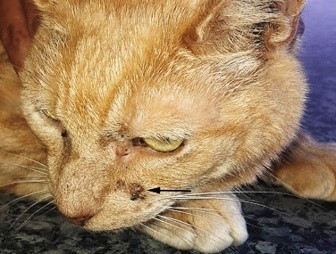
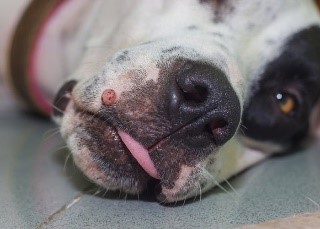
Papillomaviruses in birds
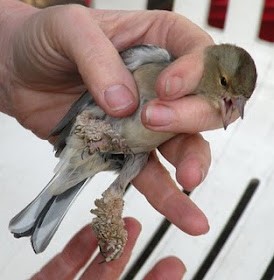

Warts
- Common warts (hands, feet, knees, shins) HPV 2, 4, 1, 26, 29.
- Smooth warts (chin, cheeks, face, calves) HPV 3, 10, 26, 29, 41.
- Plantar warts (heel, lateral surfaces of the soles) HPV 1, 4.
- Benign skin lesions. The virus is easily transmitted to the feet and hands by contact with pool tiles, public baths, beaches
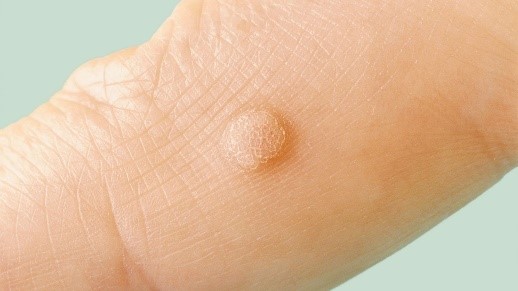
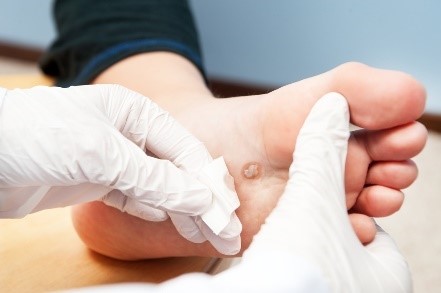
Sexually transmitted types of HPV:
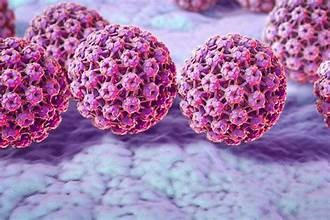
What do sexually transmitted (genital types) of HPV cause?
- Subclinical transient inflammatory lesions in the epithelium
- Genital warts
- Laryngeal papillomatosis
- Precancerous lesions
- Genital and oropharyngeal cancer
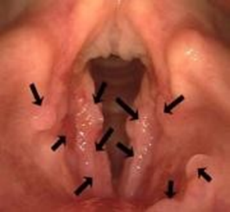
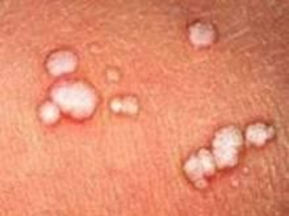
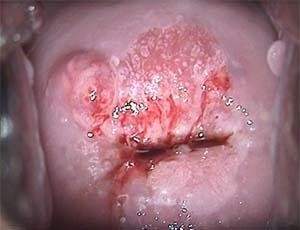
Does it matter which type of virus I have?
There are 2 types of sexually transmitted HPV:
- Low-risk subtypes: 6, 11, 40, 42, 43, 44, 55, 61, 70, 72, 81, 83, 84, 89
- High-risk subtypes: 16, 18, 31, 33, 35, 39, 45, 51, 52, 53, 56, 58, 59, 66, 68, 70, 73, 82, 85
What do low-risk types cause?
They cause benign conditions, namely mild changes in the cells of the cervix and genital warts (skin rashes) in 1 – 3% of the population that appear on the vulva, vagina, anus, cervix, skin around the vagina, perineum, pubis, penis and fortunately very rarely in the mouth and as recurrent respiratory papillomatosis)
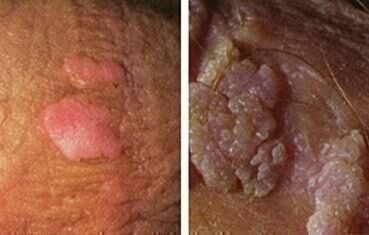
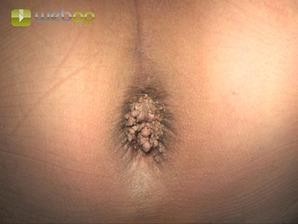
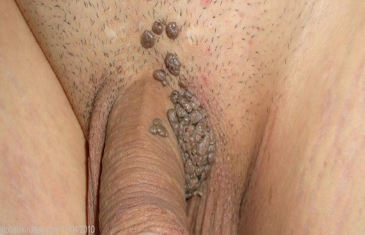
What do the high-risk types cause?
These types of the virus are the ones that are of most interest because they cause cervical cancer, vulvar cancer, vaginal cancer, anal cancer, penile cancer, and oropharyngeal cancer.
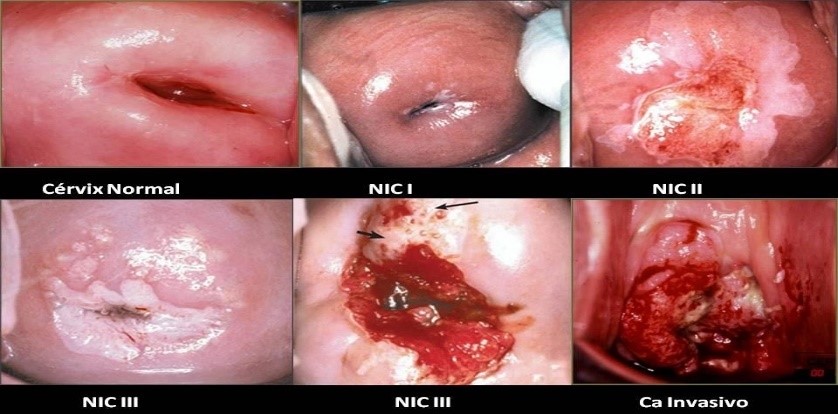
Who is at risk of HPV?
Related factors:
- Alcohol consumption
- Smoking
- Contraception pills (> 5 years)
- Not using a condom
- Frequent change of sexual partners
- Number of sexual partners that our sexual partner has had in the past
Risk groups:
- Young women under 25 years of age
- Homosexuals.
- Immunocompromised patients.
High-risk groups are meaningless today
HPV INFECTION IS A PANDEMIC
Almost all people, men and women (90% probability) will at some point come into contact with one of the sexually transmitted HPV viruses.
How is the virus transmitted
Skin-to-skin contact or inflamed mucosa is required
- Sexual transmission
- Vaginal contact
- Anal contact
- Oral contact
- Skin-to-skin contact (non-penis penetration)
- Sex toys (vibrators used directly by another person).
- Self-inoculation, mainly by scratching or shaving.
- Vertical transmission from mother to newborn during childbirth (very rare).
Can I get HPV from toilets, doorknobs, bus handles or towels?
NO, practically this possibility is infinitesimal
Does HPV live in the environment?
NO, The virus dies in the environment in a maximum of 6 hours.
It cannot multiply away from human cells.
It integrates into the DNA of our cells and uses their mechanisms to reproduce.
What symptoms does HPV infection cause?
- When it comes to acute warts, the patient presents with skin lesions visible to the naked eye
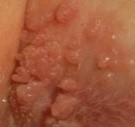
- Subclinical infections from the virus and the precancerous stages of cervical cancer DO NOT SHOW ANY SYMPTOMS.
- Symptoms (blood, pain) are only seen in advanced invasive cervical cancer.
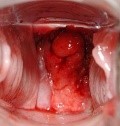
How long after my contact with HPV can I develop an infection?
- The incubation period for HPV infection to begin is from 15 days to 8 months after the patient’s contact with the virus.
- Many times, however, the virus has been present for years in our cells and simply lies dormant until it finds our body’s defenses weak and reawakens.
Can I determine exactly when I got the virus and from which partner?
NO, It is not possible & has no practical value.
Does HPV infection confer immunity?
NO, Natural infection does not confer immunity.
Can I get warts in my anus without ever having had anal sex?
The virus has the ability, when it infects some cells, to spread to neighboring cells either on its own or by rubbing, scratching, or shaving the area.
That’s why we often find it far from the point of entry
If I have warts or cervical lesions on my PAP test, what should my partner do?
- For anything visible to the eye (penile warts), he should see a urologist or dermatologist and apply topical treatment
- Subclinical lesions (HPV infection) that are not visible and do not cause symptoms do not require any treatment
If I use a condom, am I at risk of HPV?
YES
A condom prevents the transmission of HPV by about 85% but not 100%. This is because the condom does not cover the entire surface of the penis. The condom often breaks during intercourse. The virus is transmitted by skin-to-skin friction during sexual intercourse and can be transmitted even without penetration of the penis
Since condoms do not protect me 100%, is it useful?
YES
- Avoiding unwanted pregnancy
- Reducing the risk of transmitting other sexually transmitted diseases (hepatitis, syphilis, AIDS, chlamydia)
- Reduces the viral load (i.e. the number of viruses that enter our cells) and therefore the risk of resurgence of an older or new HPV infection
If I get infected with HPV, will I ever get cancer?
It is the most common sexually transmitted disease worldwide. HPV infects us, parasitizes in our cells but is usually suppressed by our body’s defenses and does not cause cancer.
How long after HPV infection can cancer develop?
The time it takes for a woman to develop cervical cancer due to persistent HPV infection is between 10 and 30 years.
After treatment of warts or surgical removal of cervical lesions, does the virus remain?
If the lesion has been completely removed or the warts have been destroyed, then the virus requires 6 – 12 months to completely disappear.
How can I protect myself from HPV?
- Get vaccinated against HPV
- Women, visit your gynecologist once a year
- Use a condom, especially at a younger age when you are more exposed and susceptible to the virus
Conclusions
- Infection with the sexually transmitted virus HPV is very common
- Cervical cancer is rare and can be diagnosed and treated in precancerous stages
- Revira
- What is Revira (90 caps)?
- What is not Revira (90 caps)?
- What is the packaging of Revira?
- Why not less than 90 capsules (per box)?
- Why capsules and not another form?
- Who can take Revira and who cannot?
- What is the composition of Revira?
- Dosage and duration of taking Revira
- Warnings for taking Revira
- Is Revira licensed by the Hellenic Food and Drug Administration (EOF)?
- Who is responsible for marketing Revira?
- The inspiration for creating Revira
- Scientific documentation of Revira’s composition
- HPV – FAQs (plus some rarer questions)
- Why is it important to know about HPV?
- How many types of HPV are there?
- Historical review
- Papillomaviruses in mammals
- Papillomaviruses in birds
- Warts
- Sexually transmitted types of HPV:
- What do sexually transmitted (genital types) of HPV cause?
- Does it matter which type of virus I have?
- What do low-risk types cause?
- What do the high-risk types cause?
- Who is at risk of HPV?
- High-risk groups are meaningless today
- How is the virus transmitted
- Can I get HPV from toilets, doorknobs, bus handles or towels?
- Does HPV live in the environment?
- What symptoms does HPV infection cause?
- How long after my contact with HPV can I develop an infection?
- Can I determine exactly when I got the virus and from which partner?
- Does HPV infection confer immunity?
- Can I get warts in my anus without ever having had anal sex?
- If I have warts or cervical lesions on my PAP test, what should my partner do?
- If I use a condom, am I at risk of HPV?
- If I get infected with HPV, will I ever get cancer?
- How long after HPV infection can cancer develop?
- After treatment of warts or surgical removal of cervical lesions, does the virus remain?
- How can I protect myself from HPV?
- Conclusions
- Bibliography
Bibliography
| # | Bibliography / References |
|---|---|
| 1 | A. Frega, C. Gentili, S. Proietti, E. Lepore, V. Unfer, A. Fuso (2023), Epigallocatechin gallate, folic acid, vitamin B12, and hyaluronic acid significantly increase apoptosis and p53 expression in HeLa cells, Eur Rev Med Pharmacol Sci 2023; 27 (11): 5240-5245 DOI: 10.26355/eurrev_202306_32642 |
| 2 | Abboodi F, Buckhaults P, Altomare D, Liu C, Hosseinipour M, Banister CE, et al. HPV-inactive cell populations arise from HPV16-transformed human keratinocytes after p53 knockout. Virology (2021) 554:9–16. doi: 10.1016/j.virol.2020.12.005 |
| 3 | Abike, F.; Engin, A.B.; Dunder, I.; Tapisiz, O.L.; Aslan, C.; Kutluay, L. Human papilloma virus persistence and neopterin, folate and homocysteine levels in cervical dysplasias. Arch. Gynecol. Obstet. 2011, 284, 209–214. |
| 4 | Aggarwal, S.; Agarwal, P.; Gupta, N. A comprehensive narrative review of challenges and facilitators in the implementation of various HPV vaccination program worldwide. Cancer Med. 2024, 13, e6862. |
| 5 | Aghamiri S, Talaei S, Roshanzamiri S, Zandsalimi F, Fazeli E, Aliyu M, et al. Delivery of genome editing tools: A promising strategy for HPV-related cervical malignancy therapy. Expert Opin Drug Delivery (2020) 17(6):753–66. doi: 10.1080/ 17425247.2020.1747429 |
| 6 | Ahmad, A.; Tiwari, R.K.; Mishra, P.; Alkhathami, A.G.; Almeleebia, T.M.; Alshahrani, M.Y.; Ahmad, I.; Asiri, R.A.; Alabdullah, N.M.; Hussien, M.; et al. Antiproliferative and apoptotic potential of Glycyrrhizin against HPV16+ Caski cervical cancer cells: A plausible association with downreguation of HPV E6 and E7 oncogenes and Notch signaling pathway. Saudi J. Biol. Sci. 2022, 29, 3264–3275. |
| 7 | Ahmad, A.; Tiwari, R.K.; Saeed, M.; Ahmad, I.; Ansari, I.A. Glycyrrhizin Mediates Downregulation of Notch Pathway Resulting in Initiation of Apoptosis and Disruption in the Cell Cycle Progression in Cervical Cancer Cells. Nutr. Cancer 2022, 74, 622–639. |
| 8 | Ahn, W.S.; Yoo, J.; Huh, S.W.; Kim, C.K.; Lee, J.M.; Namkoong, S.E.; Bae, S.M.; Lee, I.P. Protective effects of green tea extracts (polyphenon E and EGCG) on human cervical lesions. Eur. J. Cancer Prev. 2003, 12, 383–390. |
| 9 | Ajiro M, Zheng ZM. E6^E7, a novel splice isoform protein of human papillomavirus 16, stabilizes viral E6 and E7 oncoproteins via HSP90 and GRP78. mBio (2015) 6(1):e02068–14. doi: 10.1128/mBio.02068-14 |
| 10 | Alemany, L.; Cubilla, A.; Halec, G.; Kasamatsu, E.; Quiros, B.; Masferrer, E.; Tous, S.; Lloveras, B.; Hernandez-Suarez, G.; Lonsdale, R.; et al. Role of Human Papillomavirus in Penile Carcinomas Worldwide. Eur. Urol. 2016, 69, 953–961. |
| 11 | Alemany, L.; Saunier, M.; Alvarado-Cabrero, I.; Quiros, B.; Salmeron, J.; Shin, H.R.; Pirog, E.C.; Guimera, N.; Hernandez-Suarez, G.; Felix, A.; et al. Human papillomavirus DNA prevalence and type distribution in anal carcinomas worldwide. Int. J. Cancer 2015, 136, 98–107. |
| 12 | Al-Hazzani, A.A.; Alshatwi, A.A. Catechin hydrate inhibits proliferation and mediates apoptosis of SiHa human cervical cancer cells. Food Chem. Toxicol. 2011, 49, 3281–3286. |
| 13 | Allameh T, Moghim S, Farahbod F (2012). Reviewing the prevalence of human papillomavirus (HPV) in married women aged 18-60 years with normal pap smear referring to gynecology clinics in Hospitals Affiliated to Isfahan University of Medical Sciences, Iran J Isfahan Med Sch, 29. |
| 14 | Almánzar, L.A. Efectividad del Ácido Glicirricínico como nueva terapia de inactivación del virus del Papiloma humano en las lesiones del cuello uterino mediante pruebas de ADN. In Virus del Papiloma Humano (VPH) y Prevención del Cáncer de Cuello Uterino, 1st ed.; Legal Deposit No. 0007181. Book 15-2011; Editorial Médica Panamericana: San Francisco de Macorís, Dominican Republic, 2011; pp. 1–19. |
| 15 | Alsbeih G. HPV infection in cervical and other cancers in Saudi Arabia: Implication for prevention and vaccination. Front Oncol (2014) 4:65. doi: 10.3389/ fonc.2014.00065 |
| 16 | Alwhaibi, M.; Malik, S.B.; Alswailem, L.; Alruthia, Y. Self-medication among adults with chronic health conditions: A population based cross-sectional survey in Saudi Arabia. BMJ Open 2023, 13, e069206. |
| 17 | Andrea Tinelli, Sarah Gustapane, Martina Licchelli, Anna Chiara Coluccia, Gaetano Panese, Sara Proietti, Riccardo Gambioli (2024), Treatment with Epigallocatechin Gallate, Folic Acid, Vitamin B12 and Hyaluronic Acid Decreases HPV Positivity in Women Attending Regional Screening in Puglia, Microorganisms 2024, 12, 1897. https://doi.org/10.3390/microorganisms12091897 |
| 18 | Anne Boyina Sravani1, Vivek Ghate, Shaila Lewis (2021), Human papillomavirus infection, cervical cancer and the less explored role of trace elements, Biological Trace Element Research (2023) 201:1026–1050 https://doi.org/10.1007/s12011-022-03226- |
| 19 | Antonio Simone Laganà, Vito Chiantera, Sandro Gerli, Sara Proietti, Elisa Lepore, Vittorio Unfer, Jose Carugno, Alessandro Favilli (2023), Preventing Persistence of HPV Infection with Natural Molecules Pathogens 2023, 12, 416. https://doi.org/10.3390/pathogens12030416 |
| 20 | Aragona, C.; Bezerra Espinola, M.S.; Bilotta, G.; Porcaro, G.; Calcagno, M. Evaluating the Efficacy of Pervistop((R)), a New Combination Based on EGCG, Folic Acid, Vitamin B12 and Hyaluronic Acid on Patients with Human Papilloma Virus (HPV) Persistent Infections and Cervical Lesions: A Pilot Study. J. Clin. Med. 2023, 12, 2171. |
| 21 | Arash Letafati, Tannaz Sakhavarz, Mohammad Mahdi Khosravinia, Omid Salahi Ardekani, Samira Sadeghifar, Mehdi Norouzi, Mona Naseri, Azam Ghaziasadi, Seyed Mohammad Jazayeri (2023),Joint FAO/WHO Expert Committee on Food Additives (2004: Geneva, Switzerland), Evaluation of certain food additives: sixty-third report of the Joint FAO/WHO Expert, Committee on Food Additives (WHO technical report series; 928). Exploring the correlation between progression of human papillomavirus infection towards carcinogenesis and nutrition, Microbial Pathogenesis, Volume 183, October 2023, 106302, https://doi.org/10.1016/j.micpath.2023.106302 |
| 22 | Arbyn M, Redman CWE, Verdoodt F, Kyrgiou M, Tzafetas M, Ghaem-Maghami S, et al. Incomplete excision of cervical precancer as a predictor of treatment failure: a systematic review and meta-analysis. Lancet Oncol. (2017) 18:1665–79. doi: 10.1016/S1470-2045(17)30700-3 |
| 23 | Arbyn M, Weiderpass E, Bruni L, et al (2020). Estimates of incidence and mortality of cervical cancer in 2018: a worldwide analysis. Lancet Glob. Health, 8, 191-203. |
| 24 | Arbyn M, Xu L. Efficacy and safety of prophylactic HPV vaccines. A Cochrane review of randomized trials. Expert Rev Vaccines. (2018) 17:1085–91. doi: 10.1080/14760584.2018.1548282 |
| 25 | Arens M, Travis S (2000). Zinc salts inactivate clinical isolates of herpes simplex virus in vitro. J Clin Microbiol, 38, 1758-62. Atoe K, Peter O (2019). Serum antioxidant status and some selected trace metal levels in patients with cervical intraepithelial neoplasm in Benin City, Nigeria. J Appl SCI Environ Manag, 23, 1483-9. |
| 26 | Asiaf, Asiaa, Ahmad, Shiekh, Mohammad, Sheikh O, Zargar, Mohammad (2014) Review of the current knowledge on the epidemiology, pathogenesis, and prevention of human papillomavirus infection, European Journal of Cancer Prevention 23(3):p 206-224, May 2014. | DOI: 10.1097/CEJ.0b013e328364f273 |
| 27 | Attou, R., Redant, S., Honore, P. M., Preseau, T., Hantson, P., and De Bels, D. (2020). Liquorice Intoxication Can Lead to Cardiac Arrest!. Case Rep. Emerg. Med. 2020, 1–3. doi:10.1155/2020/3727682 |
| 28 | Baba, M.; Shigeta, S. Antiviral activity of glycyrrhizin against varicella-zoster virus in vitro. Antivir. Res. 1987, 7, 99–107. |
| 29 | Bachtiary B, Obermair A, Dreier B, Birner P, Breitenecker G, Knocke TH, et al. Impact of multiple HPV infection on response to treatment and survival in patients receiving radical radiotherapy for cervical cancer. Int J Cancer (2002) 102 (3):237–43. doi: 10.1002/ijc.10708 |
| 30 | Badal V, Chuang LS, Tan EH, Badal S, Villa LL, Wheeler CM, et al. CpG methylation of human papillomavirus type 16 DNA in cervical cancer cell lines and in clinical specimens: genomic hypomethylation correlates with carcinogenic progression. J Virol. 2003; 77:6227–6234. [PubMed: 12743279] |
| 31 | Bae SN, Lee KH, Kim JH, et al (2017). Zinc induces apoptosis on cervical carcinoma cells by p53-dependent and-independent pathway. Biochem Biophys Res Commun, 484, 218-23. |
| 32 | Bagarazzi ML, Yan J, Morrow MP, Shen X, Parker RL, Lee JC, et al. Immunotherapy against HPV16/18 generates potent TH1 and cytotoxic cellular immune responses. Sci Transl Med. (2012) 4:155ra138. doi: 10.1126/scitranslmed.3004414 |
| 33 | Bailey, L.B.; Gregory, J.F., 3rd. Folate metabolism and requirements. J. Nutr. 1999, 129, 779–782 |
| 34 | Bailly, C., and Vergoten, G. (2020). Glycyrrhizin: An Alternative Drug for the Treatment of COVID-19 Infection and the Associated Respiratory Syndrome?. Pharmacol. Ther. 214, 107618. doi:10.1016/j.pharmthera.2020.107618 |
| 35 | Baltina, L. A., Tasi, Y.-T., Huang, S.-H., Lai, H.-C., Baltina, L. A., Petrova, S. F., et al. (2019). Glycyrrhizic Acid Derivatives as Dengue Virus Inhibitors. Bioorg. Med. Chem. Lett. 29 (20), 126645. doi:10.1016/j.bmcl.2019.126645 |
| 36 | Baltina, L.A.; Hour, M.J.; Liu, Y.C.; Chang, Y.S.; Huang, S.H.; Lai, H.C.; Kondratenko, R.M.; Petrova, S.F.; Yunusov, M.S.; Lin, C.W. Antiviral activity of glycyrrhizic acid conjugates with amino acid esters against Zika virus. Virus Res. 2021, 294, 198290. |
| 37 | Barchitta M, Maugeri A, La Mastra C, et al (2020). Dietary antioxidant intake and human papillomavirus infection: Evidence from a Cross-Sectional Study in Italy. Nutrients, 12, 1384. Borges BES, Brito EBd, Fuzii HT, et al (2018). Human papillomavirus infection and cervical cancer precursor lesions in women living by Amazon rivers: investigation of relations with markers of oxidative stress. Einstein (Sao Paulo), 16 |
| 38 | Barchitta, M.; Maugeri, A.; La Mastra, C.; Rosa, M.C.; Favara, G.; Lio, R.M.S.; Agodi, A. Dietary Antioxidant Intake and Human Papillomavirus Infection: Evidence from a Cross-Sectional Study in Italy. Nutrients 2020, 12, 1384. |
| 39 | Barchitta, M.; Maugeri, A.; Quattrocchi, A.; Agrifoglio, O.; Scalisi, A.; Agodi, A. The Association of Dietary Patterns with High-Risk Human Papillomavirus Infection and Cervical Cancer: A Cross-Sectional Study in Italy. Nutrients 2018, 10, 469. |
| 40 | Batista AC, Pacheco LGC. Detecting pathogens with zinc-finger, TALE and CRISPR- based programmable nucleic acid binding proteins. J Microbiol Methods (2018) 152:98–104. doi: 10.1016/j.mimet.2018.07.024 |
| 41 | Beachler DC, Jenkins G, Safaeian M, Kreimer AR, Wentzensen N. Natural acquired immunity against subsequent genital human papillomavirus infection: a systematic review and meta-analysis. J Infect Dis. (2016) 213:1444–54. doi: 10.1093/infdis/jiv753 |
| 42 | Beachler DC, Viscidi R, Sugar EA, Minkoff H, Strickler HD, Cranston RD, et al. A longitudinal study of human papillomavirus 16 L1, e6 and e7 seropositivity and oral human papillomavirus 16 infection. Sex Transm Dis. (2015) 42:93–7. doi: 10.1097/OLQ.0000000000000236 |
| 43 | Bedell MA, Hudson JB, Golub TR, Turyk ME, Hosken M, Wilbanks GD, et al. Amplification of human papillomavirus genomes in vitro is dependent on epithelial differentiation. J Virol. (1991) 65:2254–60. doi: 10.1128/JVI.65.5.2254-2260.1991 |
| 44 | Beerheide W, Bernard HU, Tan YJ, Ganesan A, Rice WG, Ting AE. Potential drugs against cervical cancer: zinc-ejecting inhibitors of the human papillomavirus type 16 E6 oncoprotein. J Natl Cancer Inst (1999) 91(14):1211– 20. doi: 10.1093/jnci/91.14.1211 |
| 45 | Beerheide W, Sim MM, Tan YJ, Bernard HU, Ting AE. Inactivation of the human papillomavirus-16 E6 oncoprotein by organic disulfides. Bioorg Med Chem (2000) 8(11):2549–60. doi: 10.1016/s0968-0896(00)00193-0 |
| 46 | Benevolo, M.; Latini, A.; Rollo, F.; Giuliani, M.; Giglio, A.; Giuliani, E.; Cristaudo, A.; Morrone, A.; Dona, M.G. Incidence of abnormal anal cytology in HIV-infected and HIV-uninfected men who have sex with men. Cancer Cytopathol. 2023, 131, 262–270. |
| 47 | Bennadi, D. Self-medication: A current challenge. J. Basic. Clin. Pharm. 2013, 5, 19–23 |
| 48 | Bentz, G.L.; Lowrey, A.J.; Horne, D.C.; Nguyen, V.; Satterfield, A.R.; Ross, T.D.; Harrod, A.E.; Uchakina, O.N.; McKallip, R.J. Using glycyrrhizic acid to target sumoylation processes during Epstein-Barr virus latency. PLoS ONE 2019, 14, e0217578. |
| 49 | Bernard HU. Gene expression of genital human papillomaviruses and considerations on potential antiviral approaches. Antivir Ther. 2002; 7:219–237. [PubMed: 12553476] |
| 50 | Bhattacharjee B, Sengupta S. CpG methylation of HPV 16 LCR at E2 binding site proximal to P97 is associated with cervical cancer in presence of intact E2. Virology. 2006; 354:280–285. [PubMed: 16905170] |
| 51 | Boardman, L.A.; Kennedy, C.M. Management of atypical squamous cells, low-grade squamous intraepithelial lesions, and cervical intraepithelial neoplasia 1. Obstet. Gynecol. Clin. N. Am. 2008, 35, 599–614. |
| 52 | Bogani, G.; DI Donato, V.; Sopracordevole, F.; Ciavattini, A.; Ghelardi, A.; Lopez, S.; Simoncini, T.; Plotti, F.; Casarin, J.; Serati, M.; et al. Recurrence rate after loop electrosurgical excision procedure (LEEP) and laser Conization: A 5-year follow-up study. Gynecol. Oncol. 2020, 159, 636–641. |
| 53 | Bogani, G.; Di Donato, V.; Sopracordevole, F.; Ciavattini, A.; Ghelardi, A.; Lopez, S.; Simoncini, T.; Plotti, F.; Casarin, J.; Serati, M.; et al. Recurrence rate after loop electrosurgical excision procedure (LEEP) and laser Conization: A 5-year follow-up study. Gynecol. Oncol. 2020, 159, 636–641. |
| 54 | Bortnik V, Wu M, Julcher B, Salinas A, Nikolic I, Simpson KJ, et al. Loss of HPV type 16 E7 restores cGAS-STING responses in human papilloma virus[1]positive oropharyngeal squamous cell carcinomas cells. J Microbiol Immunol Infect (2021) 54(4):733–9. doi: 10.1016/j.jmii.2020.07.010 |
| 55 | Bosch FX, Broker TR, Forman D, Moscicki AB, Gillison ML, Doorbar J, et al. Comprehensive control of human papillomavirus Frontiers in Immunology | www.frontiersin.org 10 February 2020 | Volume 11 | Article 188 |
| 56 | Bradley, H., Markowitz, L. E., Gibson, T., and McQuillan, G. M. (2014). Seroprevalence of Herpes Simplex Virus Types 1 and 2–United States, 1999-2010. J. Infect. Dis. 209 (3), 325–333. doi:10.1093/infdis/jit458 |
| 57 | Brianti, P.; De Flammineis, E.; Mercuri, S.R. Review of HPV-related diseases and cancers. New Microbiol. 2017, 40, 80–85. |
| 58 | Broutian TR, Jiang B, Li J, Akagi K, Gui S, Zhou Z, et al. Human papillomavirus insertions identify the PIM family of serine/threonine kinases as targetable driver genes in head and neck squamous cell carcinoma. Cancer Lett (2020) 476:23–33. doi: 10.1016/j.canlet.2020.01.012 |
| 59 | Buder, F.; Selejan, S.R.; Hohl, M.; Kindermann, M.; Herr, C.; Lepper, P.M.; Bals, R.; Salzberger, B.; Mahfoud, F.; Böhm, M. Glycyrrhizin through liquorice intake modulates ACE2 and HMGB1 levels-A pilot study in healthy individuals with implications for COVID-19 and ARDS. PLoS ONE 2022, 17, e0275181. |
| 60 | Butz K, Denk C, Ullmann A, Scheffner M, Hoppe-Seyler F. Induction of apoptosis in human papillomaviruspositive cancer cells by peptide aptamers targeting the viral E6 oncoprotein. Proc Natl Acad Sci U.S.A. (2000) 97 (12):6693–7. doi: 10.1073/pnas.110538897 |
| 61 | Cáceres, S.O.; Fragoso, R.R.; Mena, C.C.; Álvarez, R.A.; Pavón, R.N.; Vació, M.C.; Cuairán, R.V. Focal multiepithelial hyperplasia: Comparative treatment, glycyrrhizinic acid versus liquid nitrogen. Rev. Odont. Mex. 2015, 19, 101–105. |
| 62 | Cain JM, Howett MK. Preventing cervical cancer. Science (2000) 288 (5472):1753–5. doi: 10.1126/science.288.5472.1753 |
| 63 | Calcagno, M.; Incocciati, B.; Di Fraia, L.; Unfer, V. Counteracting HPV Cervical and Anal Infection through Dietary Supplementation of EGCG, Folic Acid, Vitamin B12 and Hyaluronic Acid: Clinical Case Reports. J. Clin. Med. 2024, 13, 3597. https://doi.org/10.3390/jcm13123597 |
| 64 | Carter JJ, Koutsky LA, Hughes JP, Lee SK, Kuypers J, Kiviat N, et al. Comparison of human papillomavirus types 16, 18, and 6 capsid antibody responses following incident infection. J Infect Dis. (2000) 181:1911–9. doi: 10.1086/315498 |
| 65 | Carter JJ, Koutsky LA, Wipf GC, Christensen ND, Lee SK, Kuypers J, et al. The natural history of human papillomavirus type 16 capsid antibodies among a cohort of university women. J Infect Dis. (1996) 174:927–36. doi: 10.1093/infdis/174.5.927 |
| 66 | Carter JJ, Madeleine MM, Shera K, Schwartz SM, Cushing-Haugen KL, Wipf GC, et al. Human papillomavirus 16 and 18 L1 serology compared across anogenital cancer sites. Cancer Res. (2001) 61:1934–40. |
| 67 | Carvalho, N.S.; Ferreira, A.M.; Bueno, C.C. HPV infection and intraepithelial lesions from the anal region: How to diagnose? Braz. J. Infect. Dis. 2011, 15, 473–477. |
| 68 | Castellsagué X, Naud P, Chow SN, Wheeler CM, Germar MJ, Lehtinen M, et al. Risk of newly detected infections and cervical abnormalities in women seropositive for naturally acquired human papillomavirus type 16/18 antibodies: analysis of the control arm of PATRICIA. J Infect Dis. (2014) 210:517–34. doi: 10.1093/infdis/jiu139 |
| 69 | Castellsague, X.; Alemany, L.; Quer, M.; Halec, G.; Quiros, B.; Tous, S.; Clavero, O.; Alos, L.; Biegner, T.; Szafarowski, T.; et al. HPV Involvement in Head and Neck Cancers: Comprehensive Assessment of Biomarkers in 3680 Patients. J. Natl. Cancer Inst. 2016, 108, djv403. |
| 70 | Cesare Aragona, Maria Salomè Bezerra Espinola, Gabriele Bilotta, Giuseppina Porcaro, Marco Calcagno (2023), Evaluating the Efficacy of Pervistop®, a New Combination Based on EGCG, Folic Acid, Vitamin B12 and Hyaluronic Acid on Patients with Human Papilloma Virus (HPV) Persistent Infections and Cervical Lesions: A Pilot Study, J. Clin. Med. 2023, 12, 2171. https://doi.org/10.3390/jcm12062171 |
| 71 | Chabeda A, Yanez RJR, Lamprecht R, Meyers AE, Rybicki EP, Hitzeroth II. Therapeutic vaccines for high-risk HPV-associated diseases. Papillomavirus Res. (2018) 5:46–58. doi: 10.1016/j.pvr.2017.12.006 |
| 72 | Chayavichitsilp, P., Buckwalter, J. V., Krakowski, A. C., and Friedlander, S. F. (2009). Herpes Simplex. Pediatr. Rev. 30 (4), 119–130. doi:10.1542/pir.30-4-119 Chen, F., Chan, K. H., Jiang, Y., Kao, R. Y. T., Lu, H. T., Fan, K. W., et al. (2004). In Vitro susceptibility of 10 Clinical Isolates of SARS Coronavirus to Selected Antiviral Compounds. J. Clin. Virol. 31 (1), 69–75. doi:10.1016/ j.jcv.2004.03.003 Chen, J., Li, W., Yao, H., and Xu, J. (2015a). Insights into Drug Discovery from Natural Products through Structural Modification. Fitoterapia 103, 231–241. doi:10.1016/j.fitote.2015.04.012 Chen, L., Hu, C., Hood, M., Zhang, X., Zhang, L., Kan, J., et al. (2020). A Novel Combination of Vitamin C, Curcumin and Glycyrrhizic Acid Potentially Regulates Immune and Inflammatory Response Associated with Coronavirus Infections: A Perspective from System Biology Analysis. Nutrients 12 (4), 1193. doi:10.3390/nu12041193 |
| 73 | Chen R, Huang H, Liu H, Xi J, Ning J, Zeng W, et al. Friend or foe? evidence indicates endogenous exosomes can deliver functional gRNA and Cas9 protein. Small (2019) 15(38):e1902686. doi: 10.1002/smll.201902686 |
| 74 | Chen, Q., Chen, H., Wang, W., Liu, J., Liu, W., Ni, P., et al. (2017). Glycyrrhetic Acid, but Not Glycyrrhizic Acid, Strengthened Entecavir Activity by Promoting its Subcellular Distribution in the Liver via Efflux Inhibition. Eur. J. Pharm. Sci. 106, 313–327. doi:10.1016/j.ejps.2017.06.015 |
| 75 | Chen, X. X., Zhou, H. X., Qi, W. B., Ning, Z. Y., Ma, Y. J., Li, Y. L., et al. (2015b). Antiviral Effects of the Combination of Glycyrrhizin and Ribavirin against Influenza A H1N1 Virus Infection In Vivo. Yao Xue Xue Bao 50 (8), 966–972. |
| 76 | Cheng YX, Chen GT, Yang X, Wang YQ, Hong L. Effects of HPV pseudotype virus in cutting E6 gene selectively in SiHa cells. Curr Med Sci (2018) 38(2):212–21. doi: 10.1007/s11596-018-1868-3 |
| 77 | Chiang C, Pauli EK, Biryukov J, Feister KF, Meng M, White EA, et al. The human papillomavirus E6 oncoprotein targets USP15 and TRIM25 to suppress RIG-I-Mediated innate immune signaling. J Virol (2018) 92(6). doi: 10.1128/ jvi.01737-17 |
| 78 | Chih, H.J.; Lee, A.H.; Colville, L.; Binns, C.W.; Xu, D. A review of dietary prevention of human papillomavirus-related infection of the cervix and cervical intraepithelial neoplasia. Nutr. Cancer 2013, 65, 317–328. |
| 79 | Cho, H.W.; Ouh, Y.T.; Hong, J.H.; Min, K.J.; So, K.A.; Kim, T.J.; Paik, E.S.; Lee, J.W.; Moon, J.H.; Lee, J.K. Comparison of urine, self-collected vaginal swab, and cervical swab samples for detecting human papillomavirus (HPV) with Roche Cobas, HPV, Anyplex, II HPV, and RealTime HR-S HPV assay. J. Virol. Methods 2019, 269, 77–82. |
| 80 | Choi J-H, Lee Y-S, Jung C-K, et al (2006). A case of treatment of cervical adenocarcinoma associated with pregnancy by zinc-citrate compound (SeLava circledR}). Obstet Gynecol Sci, 49, 2613-20. |
| 81 | Choi JH, Shin M, Yang L, Conley B, Yoon J, Lee SN, et al. Clustered regularly interspaced short palindromic repeats-mediated amplification-free detection of viral DNAs using surface-enhanced raman spectroscopy-active nanoarray. ACS Nano (2021) 15: 13475–85. doi: 10.1021/acsnano.1c03975 |
| 82 | Chrzanowski, J., Chrzanowska, A., and Grabon, W. (2021). Glycyrrhizin: An Old ´ Weapon against a Novel Coronavirus. Phytotherapy Res. 35 (2), 629–636. doi:10.1002/ptr.6852 |
| 83 | Chu, C.; Deng, J.; Man, Y.; Qu, Y. Green Tea Extracts Epigallocatechin-3-gallate for Different Treatments. BioMed Res. Int. 2017, 2017, 5615647. |
| 84 | Ciccarese, G.; Drago, F.; Copello, F.; Bodini, G.; Rebora, A.; Parodi, A. Study on the impact of sexually transmitted infections on Quality of Life, mood and sexual function. Ital. J. Dermatol. Venerol. 2021, 156, 686–691 |
| 85 | Ciccarese, G.; Herzum, A.; Pastorino, A.; Dezzana, M.; Casazza, S.; Mavilia, M.G.; Copello, F.; Parodi, A.; Drago, F. Prevalence of genital HPV infection in STI and healthy populations and risk factors for viral persistence. Eur. J. Clin. Microbiol. Infect. Dis. 2021, 40, 885–888. |
| 86 | Cinatl, J., Morgenstern, B., Bauer, G., Chandra, P., Rabenau, H., and Doerr, H. (2003). Glycyrrhizin, an Active Component of Liquorice Roots, and Replication of SARS-Associated Coronavirus. The Lancet 361 (9374), 2045–2046. doi:10.1016/s0140-6736(03)13615-x |
| 87 | Cocchi, F., DeVico, A. L., Garzino-Demo, A., Cara, A., Gallo, R. C., and Lusso, P. (1996). The V3 Domain of the HIV-1 Gp120 Envelope Glycoprotein Is Critical for Chemokine-Mediated Blockade of Infection. Nat. Med. 2 (11), 1244–1247. doi:10.1038/nm1196-1244 |
| 88 | Cogliano, V.; Baan, R.; Straif, K.; Grosse, Y.; Secretan, B.; El Ghissassi, F. WHO International Agency for Research on Cancer. Carcinogenicity of human papillomaviruses. Lancet Oncol. 2005, 6, 204. |
| 89 | Coleman HN, Moscicki AB, Farhat SN, Gupta SK, Wang X, Nakagawa M. CD8 T-cell responses in incident and prevalent human papillomavirus types 16 and 18 infections. ISRN Obstet Gynecol. (2012) 2012:854237. doi: 10.5402/2012/854237 |
| 90 | Committee on Herbal Medicinal Products (HMPC) (2012) Community herbal monograph on Glycyrrhiza glabra L. and/or Glycyrrhiza inflata Bat. and/or Glycyrrhiza uralensis Fisch., radix, EMA/HMPC/571119/2010 |
| 91 | Coquette, A.; Vray, B.; Vanderpas, J. Role of vitamin E in the protection of the resident macrophage membrane against oxidative damage. Arch. Int. Physiol. Biochim. 1986, 94, S29–S34. |
| 92 | Crosbie EJ, Einstein MH, Franceschi S, Kitchener HC. Human papillomavirus and cervical cancer. Lancet. (2013) 382:889–99. doi: 10.1016/S0140-6736(13)60022-7 |
| 93 | Çuburu N, Kim R, Guittard GC, Thompson CD, Day PM, Hamm DE, et al. A prime-pull-amplify vaccination strategy to maximize induction of circulating and genital-resident intraepithelial CD8+ memory T cells. J Immunol. (2019) 202:1250–64. doi: 10.4049/jimmunol.1800219 |
| 94 | Cui Z, Liu H, Zhang H, Huang Z, Tian R, Li L, et al. The comparison of ZFNs, TALENs, and SpCas9 by GUIDE-seq in HPV-targeted gene therapy. Mol Ther Nucleic Acids (2021) 26:1466–78. doi: 10.1016/j.omtn.2021.08.008 |
| 95 | Cunzhi H, Jiexian J, Xianwen Z, et al (2003). Serum and tissue levels of six trace elements and copper/zinc ratio in patients with cervical cancer and uterine myoma. Biol Trace Elem. Res, 94, 113-22. |
| 96 | Curreli, F.; Friedman-Kien, A.E.; Flore, O. Glycyrrhizic acid alters Kaposi sarcoma-associated herpesvirus latency, triggering p53-mediated apoptosis in transformed B lymphocytes. J. Clin. Investig. 2005, 115, 642–652. |
| 97 | Cutts FT, Franceschi S, Goldie S, Castellsague X, de Sanjose S, Garnett G, et al. Human papillomavirus and HPV vaccines: a review. Bull World Health Organ. (2007) 85:719–26. doi: 10.2471/BLT.06.038414 |
| 98 | Daling JR, Madeleine MM, Schwartz SM, Shera KA, Carter JJ, McKnight B, et al. A population-based study of squamous cell vaginal cancer: HPV and cofactors. Gynecol Oncol. (2002) 84:263–70. doi: 10.1006/gyno.2001.6502 |
| 99 | Danial, N.N.; Korsmeyer, S.J. Cell death: Critical control points. Cell 2004, 116, 205–219. |
| 100 | Dargan, D. J., and Subak-Sharpe, J. H. (1986). The Antiviral Activity against Herpes Simplex Virus of the Triterpenoid Compounds Carbenoxolone Sodium and Cicloxolone Sodium. J. Antimicrob. Chemother. 18 (Suppl. B), 185–200. doi:10.1093/jac/18.supplement_b.185 |
| 101 | Darragh, T.M.; Colgan, T.J.; Thomas Cox, J.; Heller, D.S.; Henry, M.R.; Luff, R.D.; McCalmont, T.; Nayar, R.; Palefsky, J.M.; Stoler, M.H.; et al. The Lower Anogenital Squamous Terminology Standardization project for HPV-associated lesions: Background and consensus recommendations from the College of American Pathologists and the American Society for Colposcopy and Cervical Pathology. Int. J. Gynecol. Pathol. 2013, 32, 76–115. |
| 102 | Das D, Smith N, Wang X, Morgan IM. The deacetylase SIRT1 regulates the replication properties of human papillomavirus 16 E1 and E2. J Virol (2017) 91(10). doi: 10.1128/jvi.00102-17 |
| 103 | Das, J.K.; Salam, R.A.; Arshad, A.; Lassi, Z.S.; Bhutta, Z.A. Systematic Review and Meta-Analysis of Interventions to Improve Access and Coverage of Adolescent Immunizations. J. Adolesc. Health 2016, 59, S40–S48. |
| 104 | Das, P., Delost, M. D., Qureshi, M. H., Smith, D. T., and Njardarson, J. T. (2019). A Survey of the Structures of US FDA Approved Combination Drugs. J. Med. Chem. 62 (9), 4265–4311. doi:10.1021/acs.jmedchem.8b01610 |
| 105 | de Martel C, Plummer M, Vignat J, Franceschi S. Worldwide burden of cancer attributable to HPV by site, country and HPV type. Int J Cancer. (2017) 141:664–70. doi: 10.1002/ijc.30716 |
| 106 | de Sanjosé S, Alemany L, Ordi J, Tous S, Alejo M, Bigby SM, et al. Worldwide human papillomavirus genotype attribution in over 2000 cases of intraepithelial and invasive lesions of the vulva. Eur J Cancer. (2013) 49:3450–61. doi: 10.1016/j.ejca.2013.06.033 |
| 107 | de Sanjosé, S.; Brotons, M.; Pavón, M.A. The natural history of human papillomavirus infection. Best. Pract. Res. Clin. Obstet. Gynaecol. 2018, 47, 2–13. |
| 108 | De Vuyst, H.; Clifford, G.M.; Nascimento, M.C.; Madeleine, M.M.; Franceschi, S. Prevalence and type distribution of human papillomavirus in carcinoma and intraepithelial neoplasia of the vulva, vagina and anus: A meta-analysis. Int. J. Cancer 2009, 124, 1626–1636. |
| 109 | Demoulin, S.; Herfs, M.; Somja, J.; Roncarati, P.; Delvenne, P.; Hubert, P. HMGB1 secretion during cervical carcinogenesis promotes the acquisition of a tolerogenic functionality by plasmacytoid dendritic cells. Int. J. Cancer 2015, 137, 345–358. |
| 110 | Dempsey, A.F. Human papillomavirus: The usefulness of risk factors in determining who should get vaccinated. Rev. Obstet. Gynecol. 2008, 1, 122–128. 32. Itarat, Y.; Kietpeerakool, C.; Jampathong, N.; Chumworathayi, B.; Kleebkaow, P.; Aue-Aungkul, A.; Nhokaew, W. Sexual behavior and infection with cervical human papillomavirus types 16 and 18. Int. J. Womens Health 2019, 11, 489–494. |
| 111 | Deng, Q.-P., Wang, M.-J., Zeng, X., Chen, G. G., and Huang, R.-Y. (2017). Effects of Glycyrrhizin in a Mouse Model of Lung Adenocarcinoma. Cell Physiol. Biochem. 41 (4), 1383–1392. doi:10.1159/000467897 Ding, H., Deng, W., Ding, L., Ye, X., Yin, S., and Huang, W. (2020). Glycyrrhetinic Acid and its Derivatives as Potential Alternative Medicine to Relieve Symptoms in Nonhospitalized COVID-19 Patients. J. Med. Virol. 92, 2200–2204. doi:10.1002/jmv.26064 |
| 112 | Derkay CS, Darrow DH. Recurrent respiratory papillomatosis. Ann Otol Rhinol Laryngol. (2006) 115:1–11. doi: 10.1177/000348940611500101 |
| 113 | Di Donga , Yuejie Zhuc , Zufeiya Ailia , Zhifang Chena, Jianbing Dingb (2020), Bioinformatics analysis of HPV-68 E6 and E7 oncoproteins for designing a therapeutic epitope vaccine against HPV infection, Infection, Genetics and Evolution, Volume 81, July 2020, 104266 |
| 114 | Dickens P, Srivastava G, Loke SL, Larkin S. Human papillomavirus 6, 11, and 16 in laryngeal papillomas. J Pathol. (1991) 165:243–6. doi: 10.1002/path.1711650308 |
| 115 | Ding, T.; Li, L.; Duan, R.; Chen, Y.; Yang, B.; Xi, M. Risk factors analysis of recurrent disease after treatment with a loop electrosurgical excision procedure for high-grade cervical intraepithelial neoplasia. Int. J. Gynaecol. Obstet. 2023, 160, 538–547. |
| 116 | Dok R, Bamps M, Glorieux M, Zhao P, Sablina A, Nuyts S. Radiosensitization approaches for HPV-positive and HPV-negative head and neck squamous carcinomas. Int J Cancer (2020) 146(4):1075–85. doi: 10.1002/ijc.32558 |
| 117 | Domínguez-Gómez, J.; Daniel-Simón, R.; Abreu-Daniel, A.; Zelenkova, H. Effectiveness of Glycyrrhizinic Acid (Glizigen) and an Immunostimulant (Viusid) to Treat AnogenitalWarts. ISRN Dermatol. 2012, 2012, 863692. |
| 118 | Dragic, T., Litwin, V., Allaway, G. P., Martin, S. R., Huang, Y., Nagashima, K. A., et al. (1996). HIV-1 Entry into CD4+ Cells Is Mediated by the Chemokine Receptor CC-CKR-5. Nature 381 (6584), 667–673. doi:10.1038/381667a0 Drugs B.I. (2006). “Licorice,” in Drugs and Lactation Database (LactMed) (Bethesda, MD: National Library of Medicine). Frontiers in Pharmacology | www.frontiersin.org 7 July 2021 | Volume 12 | Article 680674 Huan et al. Antiviral Activity of Glycyrrhizin |
| 119 | Duan, E., Wang, D., Fang, L., Ma, J., Luo, J., Chen, H., et al. (2015). Suppression of Porcine Reproductive and Respiratory Syndrome Virus Proliferation by Glycyrrhizin. Antiviral Res. 120, 122–125. doi:10.1016/j.antiviral.2015.06.001 |
| 120 | Dudenkov DV, Yawn BP, Oberhelman SS, et al. Changing inci[1]dence of serum 25-hydroxyvitamin D values above 50 ng/mL: a 10 year population-based study. Mayo Clin Proc. 2015;90(5): 577-586 |
| 121 | Dunne EF, Nielson CM, Stone KM, Markowitz LE, Giuliano AR. Prevalence of HPV infection among men: a systematic review of the literature. J Infect Dis. (2006) 194:1044–57. doi: 10.1086/507432 |
| 122 | Dzundova, M.N.; Sehnal, B.; Zikan, M.; Kocian, R.; Dubova, O.; Hubka, P.; Dostalek, L.; Kabele, P.; Brtnicky, T.; Slama, J. Risk Factors for the Anal and Oral Human Papillomavirus (HPV) Infections among Women with Severe Cervical Lesions: A Prospective Case-Control Study. Biomedicines 2023, 11, 3183. |
| 123 | Ebisch RMF, Rutten DWE, IntHout J, Melchers WJG, Massuger LFAG, Bulten J, et al. Long-lasting increased risk of human papillomavirus-related carcinomas and premalignancies after cervical intraepithelial neoplasia grade 3: a population-based cohort study. J Clin Oncol. (2017) 35:2542–50. doi: 10.1200/JCO.2016.71.4543 |
| 124 | Ehrhardt A, Kay MA. A new adenoviral helper-dependent vector results in long-term therapeutic levels of human coagulation factor IX at low doses in vivo. Blood (2002) 99(11):3923–30. doi: 10.1182/blood.v99.11.3923 |
| 125 | Ehrke-Schulz E, Heinemann S, Schulte L, Schiwon M, Ehrhardt A. Adenoviral vectors armed with PAPILLOMAVIRUs oncogene specific CRISPR/ Cas9 kill human-Papillomavirus-Induced cervical cancer cells. Cancers (Basel) (2020) 12(7):1934. doi: 10.3390/cancers12071934 |
| 126 | Ehrke-Schulz E, Schiwon M, Leitner T, Dávid S, Bergmann T, Liu J, et al. CRISPR/Cas9 delivery with one single adenoviral vector devoid of all viral genes. Sci Rep (2017) 7(1):17113. doi: 10.1038/s41598-017-17180-w |
| 127 | Ejegod, D.M.; Junge, J.; Franzmann, M.; Kirschner, B.; Bottari, F.; Sideri, M.; Sandri, M.T.; Bonde, J. Clinical and analytical performance of the BD Onclarity™ HPV assay for detection of CIN2+ lesions on SurePath samples. Papillomavirus Res. 2016, 2, 31–37. |
| 128 | El-Senduny, F. F., Zidane, M. M., Youssef, M. M., and Badria, F. A. (2019). An Approach to Treatment of Liver Cancer by Novel Glycyrrhizin Derivative. Acamc 19 (15), 1863–1873. doi:10.2174/1871520619666190411114718 |
| 129 | Espinoza de los Monteros, J.A.; Álvarez, A.; Castillo, M.; Barragán, L.A. Clinical and endoscopic efficacy of activated glycyrrhizinic acid (Epigen) in the treatment of the infection due to human papillomavirus in the cervix. Rev. Clim. 2005, 8, 187–192. |
| 130 | Fadhil HY, Aufi IM, Aboud RS, et al (2017). Effect of oral zinc sulfate on local inflammatory cytokines level in Iraqi women infected with human papillomavirus (HPV). IOSR J Pharm Biol Sci, 12, 14-7. |
| 131 | Fang J, Zhang M, Li Q. Enhancer of zeste homolog 2 expression is associated with tumor cell proliferation and invasion in cervical cancer. Am J Med Sci (2011) 342(3):198–204. doi: 10.1097/MAJ.0b013e31821335a9 |
| 132 | Farooqui, A.; Khan, F.; Khan, I.; Ansari, I.A. Glycyrrhizin induces reactive oxygen species-dependent apoptosis and cell cycle arrest at G0/G1 in HPV18+ human cervical cancer HeLa cell line. Biomed. Pharmacother. 2018, 97, 752–764. |
| 133 | Femiano F, Gombos F, Scully C (2005). Recurrent herpes labialis: a pilot study of the efficacy of zinc therapy. J Oral Pathol Med, 34, 423-5. |
| 134 | Feng, Y., Broder, C. C., Kennedy, P. E., and Berger, E. A. (2011). Pillars Article: HIV-1 Entry Cofactor: Functional cDNA Cloning of a Seven-Transmembrane, G Protein-Coupled Receptor. Science. 1996. 272: 872-877. J. Immunol. 186 (11), 6076–6081. |
| 135 | Fenger, C.; Nielsen, V.T. Intraepithelial neoplasia in the anal canal. The appearance and relation to genital neoplasia. Acta Pathol. Microbiol. Immunol. Scand. A 1986, 94, 343–349. |
| 136 | Ferlay J, Colombet M, Soerjomataram I, Mathers C, Parkin DM, Piñeros M, et al. Estimating the global cancer incidence and mortality in 2018:GLOBOCAN sources and methods. Int J Cancer. (2019) 144:1941–53. doi: 10.1002/ijc.31937 |
| 137 | Ferrari, F.A.; Magni, F.; Bosco, M.; Biancotto, G.; Zorzato, P.C.; Laganà, A.S.; Chiantera, V.; Raffaelli, R.; Franchi, M.; Uccella, S.; et al. The Role of Micronutrients in Human Papillomavirus Infection, Cervical Dysplasia, and Neoplasm. Healthcare 2023, 11, 1652. https://doi.org/10.3390/healthcare1111165 |
| 138 | Flickinger JC Jr, Rodeck U, Snook AE. Listeria monocytogenes as a vector for cancer immunotherapy: current understanding and progress. Vaccines. (2018) 6:E48. doi: 10.3390/vaccines6030048 |
| 139 | Flore, O. (2005). Glycyrrhizic Acid Alters Kaposi Sarcoma-Associated Herpesvirus Latency, Triggering P53-Mediated Apoptosis in Transformed B Lymphocytes. J. Clin. Invest. 115 (3), 642–652. doi:10.1172/JCI2333410.1172/jci200523334 |
| 140 | Flores Robles, B. J., Hurtarte Sandoval, A. R., Penate Dardon, J. D., and Alonso Blas, C. (2013). Lethal Liquorice Lollies (Liquorice Abuse Causing Pseudohyperaldosteronism). Case Rep. 2013, bcr2013201007. doi:10.1136/ bcr-2013-201007 |
| 141 | Franceschi S, Baussano I. Naturally acquired immunity against human papillomavirus (HPV): why it matters in the HPV vaccine era. J Infect Dis. (2014) 210:507–9. doi: 10.1093/infdis/jiu143 |
| 142 | Frega, A.; Gentili, C.; Proietti, S.; Lepore, E.; Unfer, V.; Fuso, A. Epigallocatechin gallate, folic acid, vitamin B12, and hyaluronic acid significantly increase apoptosis and p53 expression in HeLa cells. Eur. Rev. Med. Pharmacol. Sci. 2023, 27, 5240–5245. |
| 143 | Fu Y, Foden JA, Khayter C, Maeder ML, Reyon D, Joung JK, et al. High frequency off-target mutagenesis induced by CRISPR-cas nucleases in human cells. Nat Biotechnol (2013) 31(9):822–6. doi: 10.1038/nbt.2623 |
| 144 | Fujisawa, K. (1991). Interferon Therapy in Hepatitis C Virus (HCV) Induced Chronic Hepatitis: Clinical Significance of Pretreatment with Glycyrhizine. Trop. Gastroenterol. 12 (4), 176–179. |
| 145 | Gallagher TQ, Derkay CS (2009). Pharmacotherapy of recurrent respiratory papillomatosis: an expert opinion. Expert Opin Pharmacother, 10, 645-55. |
| 146 | Gao C, Wu P, Yu L, Liu L, Liu H, Tan X, et al. The application of CRISPR/ Cas9 system in cervical carcinogenesis. Cancer Gene Ther (2021) 29(5):625–6 doi: 10.1038/s41417-021-00366-w |
| 147 | Gao J, Wu L, Yang D, Gong W, Wang J. A one-pot CRISPR/Cas9-typing PCR for DNA detection and genotyping. J Mol Diagn (2021) 23(1):46–60. doi: 10.1016/j.jmoldx.2020.10.004 |
| 148 | Gao X, Jin Z, Tan X, Zhang C, Zou C, Zhang W, et al. Hyperbranched poly (b-amino ester) based polyplex nanopaticles for delivery of CRISPR/Cas9 system and treatment of HPV infection associated cervical cancer. J Control Release (2020) 321:654–68. doi: 10.1016/j.jconrel.2020.02.045 |
| 149 | Gao, F.; Yang, C.X.; Mo, W.; Liu, Y.W.; He, Y.Q. Hyaluronan oligosaccharides are potential stimulators to angiogenesis via RHAMM mediated signal pathway in wound healing. Clin. Investig. Med. 2008, 31, E106–E116. |
| 150 | Gao, F.; Yang, C.X.; Mo, W.; Liu, Y.W.; He, Y.Q. Hyaluronan oligosaccharides are potential stimulators to angiogenesis via RHAMM mediated signal pathway in wound healing. Clin. Investig. Med. 2008, 31, E106–E116. |
| 151 | Gao, R., Zhang, Y., Kang, Y., Xu, W., Jiang, L., Guo, T., et al. (2020). Glycyrrhizin Inhibits PEDV Infection and Proinflammatory Cytokine Secretion via the HMGB1/TLR4-MAPK P38 Pathway. Int. J. Mol. Sci. 21 (8), 2961. doi:10.3390/ijms21082961 |
| 152 | Garbuglia AR, Gentile M, Del Nonno F, Lorenzini P, Lapa D, Lupi F, et al. An anal cancer screening program for MSM in Italy: prevalence of multiple HPV types and vaccine-targeted infections. J Clin Virol. (2015) 72:49–54. doi: 10.1016/j.jcv.2015.09.001 |
| 153 | Garbuglia et al. Prophylactic and Therapeutic Vaccines in Preventing HPV-Related Diseases infections and related diseases. Vaccine. (2013) 31 (Suppl. 7):H1–31. doi: 10.1016/j.vaccine.2013.07.026 |
| 154 | Garcia-Closas, R.; Castellsague, X.; Bosch, X.; Gonzalez, C.A. The role of diet and nutrition in cervical carcinogenesis: A review of recent evidence. Int. J. Cancer 2005, 117, 629–637. |
| 155 | García-Salazar, G.; Urbán-Morlán, Z.; Mendoza-Elvira, S.; Quintanar-Guerrero, D.; Mendoza, S. Broad Antiviral Spectrum of Glycyrrhizic Acid for Human and Veterinary Medicine: Reality or Fiction? Intervirology 2023, 66, 41–53. |
| 156 | Garland SM, Hernandez-Avila M, Wheeler CM, Perez G, Harper DM, Leodolter S, et al. Quadrivalent vaccine against human papillomavirus to prevent anogenital diseases. N Engl J Med. (2007) 356:1928–43. doi: 10.1056/NEJMoa061760 |
| 157 | Garutti, S.M.; Bazzan, E.; Tarabbia, C. Gender differences in the epidemiology and prevention of human papillomavirus (HPV) and HPV-related diseases. Ital. J. Gend.-Specif. Med. 2018, 4, 152–161. |
| 158 | Ghelardi A, Parazzini F, Martella F, Pieralli A, Bay P, Tonetti A, et al SPERANZA project: HPV vaccination after treatment for CIN2. Gynecol Oncol. (2018) 151:229–34. doi: 10.1016/j.ygyno.2018.08.033 |
| 159 | Ghosh DD, Bhattacharjee B, Sen S, Premi L, Mukhopadhyay I, Chowdhury RR, et al. Some Novel Insights on HPV16 Related Cervical Cancer Pathogenesis Based on Analyses of LCR Methylation, Viral Load, E7 and E2/E4 Expressions. PLoS ONE. 2012; 7:e44678. [PubMed: 22970286] |
| 160 | Gibbs S (2003). Zinc sulphate for viral warts. British J Dermatol, 148, 1082-3. Grail A, Norval M (1986). Copper and zinc levels in serum from patients with abnormalities of the uterine cervix. Acta Obstet Gynecol Scand , 65, 443-7. |
| 161 | Giuliano AR, Lazcano-Ponce E, Villa LL, et al. The Human Papillomavirus Infection in Men Study: Human Papillomavirus Prevalence and Type Distribution among Men Residing in Brazil, Mexico, and the United States. Cancer Epidemiol Biomarkers Prev 2008;17:2036–43. [PubMed: 18708396] |
| 162 | Giuliano AR, Palefsky JM, Goldstone S, Moreira ED Jr, Penny ME, Aranda C, et al. Efficacy of quadrivalent HPV vaccine against HPV Infection and disease in males. N Engl J Med. (2011) 364:401–11. doi: 10.1056/NEJMoa0909537 |
| 163 | Giuliano AR, Tortolero-Luna G, Ferrer E, Burchell AN, de Sanjose S, Kjaer SK, et al. Epidemiology of human papillomavirus infection in men, cancers other than cervical and benign conditions. Vaccine. (2008) 26 (Suppl.10):K17–28. doi: 10.1016/j.vaccine.2008.06.021 |
| 164 | Giuliano, A.R.; Harris, R.; Sedjo, R.L.; Baldwin, S.; Roe, D.; Papenfuss, M.R.; Abrahamsen, M.; Inserra, P.; Olvera, S.; Hatch, K. Incidence, prevalence, and clearance of type-specific human papillomavirus infections: The Young Women’s Health Study. J. Infect. Dis. 2002, 186, 462–469. |
| 165 | Giuliano, A.R.; Siegel, E.M.; Roe, D.J.; Ferreira, S.; Baggio, M.L.; Galan, L.; Duarte-Franco, E.; Villa, L.L.; Rohan, T.E.; Marshall, J.R.; et al. Dietary intake and risk of persistent human papillomavirus (HPV) infection: The Ludwig-McGill HPV Natural History Study. J. Infect. Dis. 2003, 188, 1508–1516. |
| 166 | GlaxoSmithKline Vaccine HPV-007 Study Group, Romanowski B, de Borba PC, Naud PS, Roteli-Martins CM, De Carvalho NS, et al. Sustained efficacy and immunogenicity of the human papillomavirus (HPV)-16/18 AS04-adjuvanted vaccine: analysis of a randomised placebo-controlled trial up to 6.4 years. Lancet. (2009) 374:1975–85. doi: 10.1016/S0140-6736(09)61567-1 |
| 167 | Gonçalves BC, Lopes Barbosa MG, Silva Olak AP, Belebecha Terezo N, Nishi L, Watanabe MA, et al. Antiviral therapies: advances and perspectives. Fundam Clin Pharmacol (2021) 35(2):305–20. doi: 10.1111/fcp.12609 |
| 168 | Goodman, M.T.; Shvetsov, Y.B.; McDuffie, K.; Wilkens, L.R.; Zhu, X.; Franke, A.A.; Bertram, C.C.; Kessel, B.; Bernice, M.; Sunoo, C.; et al. Hawaii cohort study of serum micronutrient concentrations and clearance of incident oncogenic human papillomavirus infection of the cervix. Cancer Res. 2007, 67, 5987–5996. |
| 169 | Gowda, P., Patrick, S., Joshi, S. D., Kumawat, R. K., and Sen, E. (2021). Glycyrrhizin Prevents SARS-CoV-2 S1 and Orf3a Induced High Mobility Group Box 1 (HMGB1) Release and Inhibits Viral Replication. Cytokine 142, 155496. doi:10.1016/j.cyto.2021.155496 |
| 170 | Grandi, G.; Botticelli, L.; Fraia, P.D.; Babalini, C.; Masini, M.; Unfer, V. The Association of Four Natural Molecules—EGCG, Folic Acid, Vitamin B12, and HA—To Counteract HPV Cervical Lesions: A Case Report. J. Pers. Med. 2023, 13, 567. https://doi.org/10.3390/ jpm13030567 |
| 171 | Groves IJ, Coleman N. Pathogenesis of human papillomavirus-associated mucosal disease. J Pathol. (2015) 235:527–38. doi: 10.1002/path.4496 |
| 172 | Guo CP, Liu KW, Luo HB, Chen HB, Zheng Y, Sun SN, et al. Potent antitumor effect generated by a novel human papillomavirus (HPV) antagonist peptide reactivating the pRb/E2F pathway. PloS One (2011) 6(3):e17734. doi: 10.1371/ journal.pone.0017734 |
| 173 | Haleh Ayatollahi, Elham Rajabi, Zahra Yekta , Zahra Jalali (2021), Efficacy of Oral Zinc Sulfate Supplementation on Clearance of Cervical Human Papillomavirus (HPV); A Randomized Controlled Clinical Trial, Asian Pac J Cancer Prev, 23 (4), 1285-1290, DOI:10.31557/APJCP.2022.23.4.1285 |
| 174 | Harada, S. (2005). The Broad Anti-viral Agent Glycyrrhizin Directly Modulates the Fluidity of Plasma Membrane and HIV-1 Envelope. Biochem. J. 392 (Pt 1), 191–199. doi:10.1042/BJ20051069 |
| 175 | Haraguchi Y, Sakurai H, Hussain S, et al (1999). Inhibition of HIV-1 infection by zinc group metal compounds. Antivir Res, 43, 123-33. |
| 176 | Hardy, M.E.; Hendricks, J.M.; Paulson, J.M.; Faunce, N.R. 18β-glycyrrhetinic acid inhibits rotavirus replication in culture. Virol. J. 2012, 9, 96–97. |
| 177 | Harris, S.G.; Padilla, J.; Koumas, L.; Ray, D.; Phipps, R.P. Prostaglandins as modulators of immunity. Trends Immunol. 2002, 23, 144–150. |
| 178 | Hatam, L.J.; Kayden, H.J. A high-performance liquid chromatographic method for the determination of tocopherol in plasma and cellular elements of the blood. J. Lipid Res. 1979, 20, 639–645. |
| 179 | Hatterschide J, Brantly AC, Grace M, Munger K. White EA. a conserved amino acid in the c terminus of human papillomavirus E7 mediates binding to PTPN14 and repression of epithelial differentiation. J Virol (2020) 94(17). doi: 10.1128/jvi.01024-20 |
| 180 | Hattori, T., Ikematsu, S., Koito, A., Matsushita, S., Maeda, Y., Hada, M., et al. (1989). Preliminary Evidence for Inhibitory Effect of Glycyrrhizin on HIV Replication in Patients with AIDS. Antivir. Res. 11 (5-6), 255–261. doi:10.1016/ 0166-3542(89)90035-1 |
| 181 | Hayek, M.G.; Mura, C.; Wu, D.; Beharka, A.A.; Han, S.N.; Paulson, K.E.; Hwang, D.; Meydani, S.N. Enhanced expression of inducible cyclooxygenase with age in murine macrophages. J. Immunol. 1997, 159, 2445–2451. |
| 182 | Herbert, V. The role of vitamin B12 and folate in carcinogenesis. Adv. Exp. Med. Biol. 1986, 206, 293–311. |
| 183 | Hernandez, B.Y.; McDuffie, K.; Zhu, X.; Wilkens, L.R.; Killeen, J.; Kessel, B.; Wakabayashi, M.T.; Bertram, C.C.; Easa, D.; Ning, L.; et al. Anal human papillomavirus infection in women and its relationship with cervical infection. Cancer Epidemiol. Biomark. Prev. 2005, 14, 2550–2556. |
| 184 | Hernández-Valencia, M.; Carrillo-Pacheco, A.; Hernández-Quijano, T.; Vargas Girón, A.; Vargas López, C. Clinical response to glycyrrhizinic acid in genital infection due to human papillomavirus and low-grade squamous intraepithelial lesion. Clin. Pract. 2011, 1, e93. |
| 185 | Herrero R, Quint W, Hildesheim A, Gonzalez P, Struijk L, Katki HA, et al. Reduced prevalence of oral human papillomavirus (HPV) 4 years after bivalent HPV vaccination in a randomized clinical trial in Costa Rica. PLoS ONE. (2013) 8:e68329. doi: 10.1371/journal.pone.0068329 |
| 186 | Hidaka, I., Hino, K., Korenaga, M., Gondo, T., Nishina, S., Ando, M., et al. (2007). Stronger Neo-Minophagen C?, a Glycyrrhizin-Containing Preparation, Protects Liver against Carbon Tetrachloride-Induced Oxidative Stress in Transgenic Mice Expressing the Hepatitis C Virus Polyprotein. Liver Int. 27 (6), 845–853. doi:10.1111/j.1478-3231.2007.01492.x |
| 187 | Hildesheim A, Gonzalez P, Kreimer AR, Wacholder S, Schussler J, Rodriguez AC, et al. Impact of human papillomavirus (HPV) 16 and 18 vaccination on prevalent infections and rates of cervical lesions after excisional treatment. Am J Obstet Gynecol. (2016) 215:212.e1–5. doi: 10.1016/j.ajog.2016.02.021 |
| 188 | Hildesheim A, Han CL, Brinton LA, Kurman RJ, Schiller JT. Human papillomavirus type 16 and risk of preinvasive and invasive vulvar cancer: results from a seroepidemiological case-control study. Obstet Gynecol. (1997) 90:748–54. doi: 10.1016/S0029-7844(97)00467-5 |
| 189 | Hildesheim A, Wacholder S, Catteau G, Struyf F, Dubin G, Herrero R, et al, Efficacy of the HPV-16/18 vaccine: final according to protocol results from the blinded phase of the randomized Costa Rica HPV-16/18 vaccine trial. Vaccine. (2014) 32:5087–97. doi: 10.1016/j.vaccine.2014.06.038 |
| 190 | Hirabayashi, K., Iwata, S., Matsumoto, H., Mori, T., Shibata, S., Baba, M., et al. (1991). Antiviral Activities of Glycyrrhizin and its Modified Compounds against Human Immunodeficiency Virus Type 1(HIV-1) and Herpes Simplex Virus Type 1(HSV-1) In Vitro. Chem. Pharm. Bull. 39 (1), 112–115. doi:10.1248/cpb.39.112 |
| 191 | Hoever, G., Baltina, L., Michaelis, M., Kondratenko, R., Baltina, L., Tolstikov, G. A., et al. (2005). Antiviral Activity of Glycyrrhizic Acid Derivatives against SARS−Coronavirus. J. Med. Chem. 48 (4), 1256–1259. doi:10.1021/jm0493008 |
| 192 | Hoffman SR, Le T, Lockhart A, Sanusi A, Dal Santo L, Davis M, et al. Patterns of persistent HPV infection after treatment for cervical intraepithelial neoplasia (CIN): a systematic review. Int J Cancer. (2017) 141:8–23. doi: 10.1002/ijc.30623 |
| 193 | Hong D, Ye F, Lu W, Hu Y, Wan X, Chen Y, et al. Methylation status of the long control region of HPV 16 in clinical cervical specimens. Mol Med Rep. 2008; 1:555–560. [PubMed: 21479449] |
| 194 | Hsu DS, Kornepati AV, Glover W, Kennedy EM, Cullen BR. Targeting HPV16 DNA using CRISPR/Cas inhibits anal cancer growth in vivo. Future Virol (2018) 13(7):475–82. doi: 10.2217/fvl-2018-0010 |
| 195 | Hu Z, Yu L, Zhu D, Ding W, Wang X, Zhang C, et al. Disruption of HPV16- E7 by CRISPR/Cas system induces apoptosis and growth inhibition in HPV16 positive human cervical cancer cells. BioMed Res Int (2014) 2014:612823. doi: 10.1155/2014/612823 |
| 196 | Hu, X.; Li, S.; Zhou, L.; Zhao, M.; Zhu, X. Effect of vitamin E supplementation on uterine cervical neoplasm: A meta-analysis of case-control studies. PLoS ONE 2017, 12, e0183395. |
| 197 | Huan C, Xu Y, Zhang W, Guo T, Pan H and Gao S (2021) Research Progress on the Antiviral Activity of Glycyrrhizin and its Derivatives in Liquorice. Front. Pharmacol. 12:680674. doi: 10.3389/fphar.2021.680674 |
| 198 | Huan, C., Chen, C., Xu, W., Guo, T., Pan, H., and Gao, S. (2020). Study on Antiviral Activities of Glycyrrhizin. Int. J. Biomed. Eng. Clin. Sci. 6 (4), 68–70. doi:10.11648/j.ijbecs.20200604.11 |
| 199 | Huan, C.; Xu, Y.; Zhang, W.; Guo, T.; Pan, H.; Gao, S. Research Progress on the Antiviral Activity of Glycyrrhizin and its Derivatives in Liquorice. Front. Pharmacol. 2021, 12, 680674. |
| 200 | Huan, C.-c., Wang, H.-x., Sheng, X.-x., Wang, R., Wang, X., and Mao, X. (2017). Glycyrrhizin Inhibits Porcine Epidemic Diarrhea Virus Infection and Attenuates the Proinflammatory Responses by Inhibition of High Mobility Group Box-1 Protein. Arch. Virol. 162 (6), 1467–1476. doi:10.1007/s00705-017- 3259-7 |
| 201 | Huang, W., Chen, X., Li, Q., Li, P., Zhao, G., Xu, M., et al. (2012). Inhibition of Intercellular Adhesion in Herpex Simplex Virus Infection by Glycyrrhizin. Cell Biochem Biophys. 62 (1), 137–140. doi:10.1007/s12013-011-9271-8 |
| 202 | Hubert, P.; Roncarati, P.; Demoulin, S.; Pilard, C.; Ancion, M.; Reynders, C.; Lerho, T.; Bruyere, D.; Lebeau, A.; Radermecker, C.; et al. Extracellular HMGB1 blockade inhibits tumor growth through profoundly remodeling immune microenvironment and enhances checkpoint inhibitor-based immunotherapy. J. Immunother. Cancer 2021, 9, e001966. |
| 203 | Hublarova P, Hrstka R, Rotterova P, Rotter L, Coupkova M, Badal V, et al. Prediction of human papillomavirus 16 e6 gene expression and cervical intraepithelial neoplasia progression by methylation status. Int J Gynecol Cancer. 2009; 19:321–325. [PubMed: 19407553] |
| 204 | Huh K, Zhou X, Hayakawa H, Cho JY, Libermann TA, Jin J, et al. Huma papillomavirus type 16 E7 oncoprotein associates with the cullin 2 ubiquitin ligase complex, which contributes to degradation of the retinoblastoma tumor suppressor. J Virol. (2007) 81:9737–47. doi: 10.1128/JVI.00881-07 |
| 205 | Hyakusoku H, Sano D, Takahashi H, Hatano T, Isono Y, Shimada S, et al. JunB promotes cell invasion, migration and distant metastasis of head and neck squamous cell carcinoma. J Exp Clin Cancer Res (2016) 35:6. doi: 10.1186/s13046- 016-0284-4 |
| 206 | Ide, T., Kumashiro, R., Kuwahara, R., Koga, H., Koga, Y., Hino, T., et al. (2005). Clinical Course of Patients with Chronic Hepatitis B with Viral Breakthrough during Long-Term Lamivudine Treatment. J. Gastroenterol. 40 (6), 625–630. doi:10.1007/s00535-005-1597-9 |
| 207 | Ikeda, T., Yokomizo, K., Okawa, M., Tsuchihashi, R., Kinjo, J., Nohara, T., et al. (2005). Anti-herpes Virus Type 1 Activity of Oleanane-type Triterpenoids. Biol. Pharm. Bull. 28 (9), 1779–1781. doi:10.1248/bpb.28.1779 |
| 208 | Imahorn E, Aushev M, Herms S, Hoffmann P, Cichon S, Reichelt J, et al. Gene expression is stable in a complete CIB1 knockout keratinocyte model. Sci Rep (2020) 10(1):14952. doi: 10.1038/s41598-020-71889-9 |
| 209 | Insinga RP, Dasbach EJ, Elbasha EH. Assessing the annual economic burden of preventing and treating anogenital human papillomavirus related disease in the US: analytic framework and review of the literature. Pharmacoeconomics. (2005) 23:1107–22. doi: 10.2165/00019053-200523110-00004 |
| 210 | Insinga RP, Dasbach EJ, Myers ER. The health and economic burden of genital warts in a set of private health plans in the United States. Clin Infect Dis. (2003) 36:1397–403. doi: 10.1086/375074 |
| 211 | Inturi R, Jemth P. CRISPR/Cas9-based inactivation of human papillomavirus oncogenes E6 or E7 induces senescence in cervical cancer cells. Virology (2021) 562:92–102. doi: 10.1016/j.virol.2021.07.005 |
| 212 | Isbrucker, R. A., and Burdock, G. A. (2006). Risk and Safety Assessment on the Consumption of Licorice Root (Glycyrrhiza sp.), its Extract and Powder as a Food Ingredient, with Emphasis on the Pharmacology and Toxicology of Glycyrrhizin. Regul. Toxicol. Pharmacol. 46 (3), 167–192. doi:10.1016/ j.yrtph.2006.06.002 |
| 213 | Ishida Y. PD-1: Its discovery, involvement in cancer immunotherapy, and beyond. Cells (2020) 9(6):1376. doi: 10.3390/cells9061376 86. Yang W, Song Y, Lu YL, Sun JZ, Wang HW. Increased expression of programmed death (PD)-1 and its ligand PD-L1 correlates with impaired cell mediated immunity in high-risk human papillomavirus-related cervical intraepithelial neoplasia. Immunology (2013) 139(4):513–22. doi: 10.1111/ imm.1210 |
| 214 | Ito, M., Nakashima, H., Baba, M., Pauwels, R., De Clercq, E., Shigeta, S., et al. (1987). Inhibitory Effect of Glycyrrhizin on the In Vitro Infectivity and Cytopathic Activity of the Human Immunodeficiency Virus [HIV (HTLV III/LAV)]. Antiviral Res. 7 (3), 127–137. doi:10.1016/0166-3542(87)90001-5 |
| 215 | Ito, M., Sato, A., Hirabayashi, K., Tanabe, F., Shigeta, S., Baba, M., et al. (1988). Mechanism of Inhibitory Effect of Glycyrrhizin on Replication of Human Immunodeficiency Virus (HIV). Antiviral Res. 10 (6), 289–298. doi:10.1016/ 0166-3542(88)90047-2 |
| 216 | Ito, M.; Sato, A.; Hirabayashi, K.; Tanabe, F.; Shigeta, S.; Baba, M.; De Clercq, E.; Nakashima, H.; Yamamoto, N. Mechanism of Inhibitory Effect of Glycyrrhizin on Replication of Human Immunodeficiency Virus (HIV). Antivir. Res. 1988, 10, 289–298. |
| 217 | J Clin Diagnostic Res, 13. Münger K, Baldwin A, Edwards KM, et al (2004). Mechanisms of human papillomavirus-induced oncogenesis. J virol, 78, 11451-60. |
| 218 | J.Y.; Han, J.H.; Song, Y.; Lee, J.H.; Choi, S.Y.; Park, Y.M. Epigallocatechin-3-gallate Can Prevent Type 2 Human Papillomavirus E7 from Suppressing Interferon-Stimulated Genes. Int. J. Mol. Sci. 2021, 22, 2418. |
| 219 | Jain, R.; Hussein, M.A.; Pierce, S.; Martens, C.; Shahagadkar, P.; Munirathinam, G. Oncopreventive and oncotherapeutic potential of licorice triterpenoid compound glycyrrhizin and its derivatives: Molecular insights. Pharmacol. Res. 2022, 178, 106138. |
| 220 | James CD, Das D, Morgan EL, Otoa R, Macdonald A, Morgan IM. Werner Syndrome protein (WRN) regulates cell proliferation and the human papillomavirus 16 life cycle during epithelial differentiation. mSphere (2020) 5 (5). doi: 10.1128/mSphere.00858-20 |
| 221 | James CD, Prabhakar AT, Otoa R, Evans MR, Wang X, Bristol ML, et al. SAMHD1 regulates human papillomavirus 16-induced cell proliferation and viral replication during differentiation of keratinocytes. mSphere (2019) 4(4). doi: 10.1128/mSphere.00448-19 |
| 222 | Jancar, N.; Rakar, S.; Poljak, M.; Fujs, K.; Kocjan, B.J.; Vrtacnik-Bokal, E. Efficiency of three surgical procedures in eliminating high-risk human papillomavirus infection in women with precancerous cervical lesions. Eur. J. Gynaecol. Oncol. 2006, 27, 239–242. |
| 223 | Jiang Y., Jiang Y., Li L., Liu X., Hou X., Wang W. High-Molecular-Weight Hyaluronic Acid Can be used as a Food Additive to Improve the Symptoms of Persistent Inflammation, Immunosuppression and Catabolism Syndrome (PICS). Biology 2024, 13, 319. https://doi.org/10.3390/biology13050319 |
| 224 | Jinek M, Chylinski K, Fonfara I, Hauer M, Doudna JA, Charpentier E. A programmable dual-RNA-guided DNA endonuclease in adaptive bacterial immunity. Science (2012) 337(6096):816–21. doi: 10.1126/science.1225829 |
| 225 | Jinek M, East A, Cheng A, Lin S, Ma E, Doudna J. RNA-Programmed genome editing in human cells. Elife (2013) 2:e00471. doi: 10.7554/eLife.00471 |
| 226 | Joshua Hatterschide, Paola Castagnino, Hee Won Kim, Steven M Sperry, Kathleen T Montone, Devraj Basu, Elizabeth A White (2021), YAP1 activation by human papillomavirus E7 promotes basal cell identity in squamous epithelia, eLIFE, Department of Otorhinolaryngology: Head and Neck Surgery, University of Pennsylvania Perelman School of Medicine, Philadelphia, United States; Department of Pathology and Laboratory Medicine, University of Pennsylvania Perelman School of Medicine, Philadelphia, United States |
| 227 | Joura EA, Giuliano AR, Iversen OE, Bouchard C, Mao C, Mehlsen J, et al. A 9-valent HPV vaccine against infection and intraepithelial neoplasia in women. N Engl J Med. (2015) 372:711–23. doi: 10.1056/NEJMoa1405044 |
| 228 | Jubair L, Fallaha S, McMillan NAJ. Systemic delivery of CRISPR/Cas9 targeting HPV oncogenes is effective at eliminating established tumors. Mol Ther (2019) 27(12):2091–9. doi: 10.1016/j.ymthe.2019.08.012 |
| 229 | Jubair L, Lam AK, Fallaha S, McMillan NAJ. CRISPR/Cas9-loaded stealth liposomes effectively cleared established HPV16-driven tumours in syngeneic mice. PloS One (2021) 16(1):e0223288. doi: 10.1371/ journal.pone.0223288 |
| 230 | Kalantari M, Calleja-Macias IE, Tewari D, Hagmar B, Lie K, Barrera-Saldana HA, et al. Conserved methylation patterns of human papillomavirus type 16 DNA in asymptomatic infection and cervical neoplasia. J Virol. 2004; 78:12762–12772. [PubMed: 15542628] |
| 231 | Kalinski, P. Regulation of immune responses by prostaglandin E2. J. Immunol. 2012, 188, 21–28. |
| 232 | Kanelleas A, Nicolaidou E (2015). Warts: Cutaneous and Anogenital. In ‘European Handbook of Dermatological Treatments’, Eds Springer, pp 1053-61. Kim JH, Bae SN, Lee CW, et al (2011). A pilot study to investigate the treatment of cervical human papillomavirus infection with zinc-citrate compound (CIZAR®). Gynecol Oncol, 122, 303-6. |
| 233 | Kang WD, Choi HS, Kim SM. Is vaccination with quadrivalent HPV vaccine after loop electrosurgical excision procedure effective in preventing recurrence in patients with high-grade cervical intraepithelial neoplasia (CIN2-3)? Gynecol Oncol. (2013) 130:264–8. doi: 10.1016/j.ygyno.2013.04.050 |
| 234 | Kang, H., and Lieberman, P. M. (2011). Mechanism of Glycyrrhizic Acid Inhibition of Kaposi’s Sarcoma-Associated Herpesvirus: Disruption of CTCF-Cohesin Mediated RNA Polymerase II Pausing and Sister Chromatid Cohesion. J. Virol. 85 (21), 11159–11169. doi:10.1128/JVI.00720-11 |
| 235 | Kantor A, McClements ME, MacLaren RE. CRISPR-Cas9 DNA base-editing and prime-editing. Int J Mol Sci (2020) 21(17):6240. doi: 10.3390/ijms21176240 |
| 236 | Karimian A, Azizian K, Parsian H, Rafieian S, Shafiei-Irannejad V, Kheyrollah M, et al. CRISPR/Cas9 technology as a potent molecular tool for gene therapy. J Cell Physiol (2019) 234(8):12267–77. doi: 10.1002/jcp.27972 |
| 237 | Kasukawa H, Howley PM, Benson JD. A fifteen-amino-acid peptide inhibits human papillomavirus E1-E2 interaction and human papillomavirus DNA replication in vitro. J Virol. (1998) 72:8166–73. doi: 10.1128/JVI.72.10.8166-8173.1998 |
| 238 | Kennedy EM, Kornepati AV, Goldstein M, Bogerd HP, Poling BC, Whisnant AW, et al. Inactivation of the human papillomavirus E6 or E7 gene in cervical carcinoma cells by using a bacterial CRISPR/Cas RNA-guided endonuclease. J Virol (2014) 88(20):11965–72. doi: 10.1128/jvi.01879-14 |
| 239 | Kim EJ, Kang KH, Ju JH. CRISPR-Cas9: a promising tool for gene editing on induced pluripotent stem cells. Korean J Internal Med (2017) 32(1):42–61. doi: 10.3904/kjim.2016.198 |
| 240 | Kim TJ, Jin HT, Hur SY, Yang HG, Seo YB, Hong SR, et al. Clearance of persistent HPV infection and cervical lesion by therapeutic DNA vaccine in CIN3 patients. Nat Commun. (2014) 5:5317. doi: 10.1038/ncomms6317 |
| 241 | Kjaer SK, Tran TN, Sparen P, Tryggvadottir L, Munk C, Dasbach E, et al. The burden of genital warts: a study of nearly 70,000 women from the general female population in the 4 Nordic countries. J Infect Dis. (2007) 196:1447–54. doi: 10.1086/522863 |
| 242 | Kleter B, Olgac S, et al (2000). Prevalence of human papillomavirus DNA in different histological subtypes of cervical adenocarcinoma. Am J Pathol, 157, 1055-62. Read SA, |
| 243 | Kolev, N.; Bakardzhiev, I.; Kovachev, E.; Ivanos, S.T. Glycyrrhizinic acid—An alternative method for treatment of condylomata acuminata. Akush. Ginekol. 2015, 54, 16–18. |
| 244 | Kombe Kombe, A.J.; Li, B.; Zahid, A.; Mengist, H.M.; Bounda, G.A.; Zhou, Y.; Jin, T. Epidemiology and Burden of Human Papillomavirus and Related Diseases, Molecular Pathogenesis, and Vaccine Evaluation. Front. Public. Health 2020, 8, 552028. |
| 245 | Komor AC, Kim YB, Packer MS, Zuris JA, Liu DR. Programmable editing of a target base in genomic DNA without double-stranded DNA cleavage. Nature (2016) 533(7603):420–4. doi: 10.1038/nature17946 |
| 246 | Korenaga, M., Hidaka, I., Nishina, S., Sakai, A., Shinozaki, A., Gondo, T., et al. (2011). A Glycyrrhizin-Containing Preparation Reduces Hepatic Steatosis Induced by Hepatitis C Virus Protein and Iron in Mice. Liver Int. 31 (4), 552–560. doi:10.1111/j.1478-3231.2011.02469.x |
| 247 | Koshiyama, M. The Effects of the Dietary and Nutrient Intake on Gynecologic Cancers. Healthcare 2019, 7, 88. |
| 248 | Kreimer AR, Clifford GM, Boyle P, Franceschi S. Human papillomavirus types in head and neck squamous cell carcinomas worldwide: a systematic review. Cancer Epidemiol Biomarkers Prev. (2005) 14:467–75. doi: 10.1158/1055-9965.EPI-04-0551 |
| 249 | Kreuter A, Waterboer T, Wieland U. Regression of cutaneous warts in a patient with WILD syndrome following recombinant quadrivalent human papillomavirus vaccination. Arch Dermatol. (2010) 146:1196–7. doi: 10.1001/archdermatol.2010.290 |
| 250 | Kusanagi Y, Kojima A, Mikami Y, Kiyokawa T, Sudo T, Yamaguchi S, et al. Absence of high-risk human papillomavirus (HPV) detection in endocervical adenocarcinoma with gastric morphology and phenotype. Am J Pathol. (2010) 177:2169–75. doi: 10.2353/ajpath.2010.100323 |
| 251 | Kwon, Y.-J., Son, D.-H., Chung, T.-H., and Lee, Y.-J. (2020). A Review of the Pharmacological Efficacy and Safety of Licorice Root from Corroborative Clinical Trial Findings. J. Med. Food 23 (1), 12–20. doi:10.1089/jmf.2019.4459 |
| 252 | Kyrgiou M, Athanasiou A, Paraskevaidi M, Mitra A, Kalliala I, Martin Hirsch P, et al. Adverse obstetric outcomes after local treatment for cervical preinvasive and early invasive disease according to cone depth: systematic review and meta-analysis. BMJ. (2016) 28: i3633. doi: 10.1097/01.ogx.0000508341.95858. |
| 253 | Laganà, A.S.; Chiantera, V.; Gerli, S.; Proietti, S.; Lepore, E.; Unfer, V.; Carugno, J.; Favilli, A. Preventing Persistence of HPV Infection with Natural Molecules. Pathogens 2023, 12, 416. |
| 254 | Lamos C, Mihaljevic C, Aulmann S, Bruckner T, Domschke C, Wallwiener M, et al. Detection of human papillomavirus infection in patients with vaginal intraepithelial neoplasia. PLoS ONE. (2016) 11:e0167386. doi: 10.1371/journal.pone.0167386 |
| 255 | Lao YH, Li M, Gao MA, Shao D, Chi CW, Huang D, et al. HPV oncogene manipulation using nonvirally delivered CRISPR/Cas9 or natronobacterium gregoryi argonaute. Adv Sci (Weinh) (2018) 5(7):1700540. doi: 10.1002/ advs.201700540 |
| 256 | Lee HJ, Kim JK, Kim DH, Yoon MS. Condyloma accuminatum treated with recombinant quadrivalent human papillomavirus vaccine (types 6, 11, 16, 18). J Am Acad Dermatol. (2011) 64: e130–2. doi: 10.1016/j.jaad.2010.12.032 |
| 257 | Lehtinen T, Söderlund-Strand A, Petäjä T, Eriksson T, Jokiranta S, Natunen K, et al. Human Papillomavirus (HPV) Prevalence in Male Adolescents 4 Years After HPV-16/18 Vaccination. J Infect Dis. (2017) 216:966–8. doi: 10.1093/infdis/jix415 |
| 258 | Letko, M., Marzi, A., and Munster, V. (2020). Functional Assessment of Cell Entry and Receptor Usage for SARS-CoV-2 and Other Lineage B Betacoronaviruses. Nat. Microbiol. 5 (4), 562–569. doi:10.1038/s41564-020-0688-y |
| 259 | Leung TH, Tang HW, Siu MK, Chan DW, Chan KK, Cheung AN, et al. CD71(+) population enriched by HPV-E6 protein promotes cancer aggressiveness and radioresistance in cervical cancer cells. Mol Cancer Res (2019) 17(9):1867–80. doi: 10.1158/1541-7786.Mcr-19-0068 |
| 260 | Leung TH, Tang HW, Siu MK, Chan DW, Chan KK, Cheung AN, et al. Human papillomavirus E6 protein enriches the CD55(+) population in cervical cancer cells, promoting radioresistance and cancer aggressiveness. J Pathol (2018) 244(2):151–63. doi: 10.1002/path.4991 |
| 261 | Lewis, E.D.; Meydani, S.N.; Wu, D. Regulatory role of vitamin E in the immune system and inflammation. IUBMB Life 2019, 71, 487–494. |
| 262 | Lewis, R.M.; Markowitz, L.E. Human papillomavirus vaccination coverage among females and males, National Health and Nutrition Examination Survey, United States, 2007–2016. Vaccine 2018, 36, 2567–2573. |
| 263 | Li He, Erying Zhang, Jingli Shi, Xiangyong Li, Keyuan Zhou, Qunzhou Zhang, Anh D. Le & Xudong Tang (2013) -Epigallocatechin-3- gallate inhibits human papillomavirus (HPV)-16 oncoprotein-induced angiogenesis in non-small cell lung cancer cells by targeting HIF-1α, Cancer Chemotherapy and Pharmacology, Volume 71, pages 713–725 |
| 264 | Li, J., Yin, J., Sui, X., Li, G., and Ren, X. (2009). Comparative Analysis of the Effect of Glycyrrhizin Diammonium and Lithium Chloride on Infectious Bronchitis Virus Infectionin Vitro. Avian Pathol. 38 (3), 215–221. doi:10.1080/ 03079450902912184 |
| 265 | Li, P., Zou, H., Ren, Y., Zarlenga, D. S., and Ren, X. (2014). Antiviral Effect of Diammonium Glycyrrhizinate on Cell Infection by Porcine Parvovirus. Curr. Microbiol. 69 (1), 82–87. doi:10.1007/s00284-014-0540-9 |
| 266 | Li, Q., Guan, X., Wu, P., Wang, X., Zhou, L., Tong, Y., et al. (2020). Early Transmission Dynamics in Wuhan, China, of Novel Coronavirus-Infected Pneumonia. N. Engl. J. Med. 382 (13), 1199–1207. doi:10.1056/ NEJMoa2001316 Li, X., Sun, R., and Liu, R. (2019). Natural Products in Licorice for the Therapy of Liver Diseases: Progress and Future Opportunities. Pharmacol. Res. 144, 210–226. doi:10.1016/j.phrs.2019.04.025 |
| 267 | Liang K, Ng S, Lee F, Lim J, Chung JE, Lee SS, Kurisawa M. (2016), Targeted intracellular protein delivery based on hyaluronic acid-green tea catechin nanogels, Acta Biomater. 2016 Mar;33:142-52. doi: 10.1016/j.actbio.2016.01.011. Epub 2016 Jan 16.PMID: 26785145 |
| 268 | Liaw KL, Hildesheim A, Burk RD, Gravitt P, Wacholder S, Manos MM, et al. A prospective study of human papillomavirus (HPV) type 16 DNA detection by polymerase chain reaction and its association with acquisition and persistence of other HPV types. J Infect Dis. (2001) 183:8–15. doi: 10.1086/317638 |
| 269 | Lin C, Franceschi S, Clifford GM. Human papillomavirus types from infection to cancer in the anus, according to sex and HIV status: a systematic review and meta-analysis. Lancet Infect Dis. (2018) 18:198–206. doi: 10.1016/S1473-3099(17)30653-913. Lin C, Slama J, Gonzalez P, Goodman MT, Xia N, Kreimer AR, et al. Cervical determinants of anal HPV infection and high-grade anal lesions in women: a collaborative pooled analysis. Lancet Infect Dis. (2019) 19:880–91. doi: 10.1016/S1473-3099(19)30164-1 |
| 270 | Lin Y, Wu J, Gu W, Huang Y, Tong Z, Huang L, et al. Exosome-liposome hybrid nanoparticles deliver CRISPR/Cas9 system in MSCs. Adv Sci (Weinh) (2018) 5(4):1700611. doi: 10.1002/advs.201700611 |
| 271 | Lin, H.Y.; Fu, Q.; Kao, Y.H.; Tseng, T.S.; Reiss, K.; Cameron, J.E.; Ronis, M.J.; Su, J.; Nair, N.; Chang, H.M.; et al. Antioxidants Associated with Oncogenic Human Papillomavirus Infection in Women. J. Infect. Dis. 2021, 224, 1520–1528. |
| 272 | Lin, J.-C. (2003). Mechanism of Action of Glycyrrhizic Acid in Inhibition of Epstein-Barr Virus Replication In Vitro. Antiviral Res. 59 (1), 41–47. doi:10.1016/s0166-3542(03)00030-5 |
| 273 | Lin, J.-C., Cherng, J.-M., Hung, M.-S., Baltina, L. A., Baltina, L., and Kondratenko, R. (2008). Inhibitory Effects of Some Derivatives of Glycyrrhizic Acid against Epstein-Barr Virus Infection: Structure-Activity Relationships. Antiviral Res. 79 (1), 6–11. doi:10.1016/j.antiviral.2008.01.160 |
| 274 | Ling K, Yang L, Yang N, Chen M, Wang Y, Liang S, et al. Gene targeting of HPV18 E6 and E7 synchronously by nonviral transfection of CRISPR/Cas9 system in cervical cancer. Hum Gene Ther (2020) 31(5-6):297–308. doi: 10.1089/ hum.2019.246 |
| 275 | List HJ, Patzel V, Zeidler U, Schopen A, Rühl G, Stollwerk J, et al. Methylation sensitivity of the enhancer from the human papillomavirus type 16. J Biol Chem. 1994; 269:11902–11911. [PubMed: 8163489] |
| 276 | Liu T, Soong SJ, Alvarez RD, et al (1995). A longitudinal analysis of human papillomavirus 16 infection, nutritional status, and cervical dysplasia progression. Cancer Epidemiol Biomarkers Prev, 4, 373-80. |
| 277 | Liu YC, Cai ZM, Zhang XJ. Reprogrammed CRISPR-Cas9 targeting the conserved regions of HPV6/11 E7 genes inhibits proliferation and induces apoptosis in E7-transformed keratinocytes. Asian J Androl (2016) 18(3):475–9. doi: 10.4103/1008-682x.157399 |
| 278 | Liu, H.; Wang, L.; Chen, C.; Dong, Z.; Yu, S. Association between Dietary Niacin Intake and Migraine among American Adults: National Health and Nutrition Examination Survey. Nutrients 2022, 14, 3052. |
| 279 | Liverani, C.A. The four steps in the prevention of human papillomavirus-associated neoplasia. Arch. Gynecol. Obstet. 2013, 288, 979–988. |
| 280 | Lopes, R.; Teixeira, J.A.; Marchioni, D.; Villa, L.L.; Giuliano, A.R.; Luiza Baggio, M.; Fisberg, R.M. Dietary intake of selected nutrients and persistence of HPV infection in men. Int. J. Cancer 2017, 141, 757–765. |
| 281 | Lu Y, Xue J, Deng T, Zhou X, Yu K, Deng L, et al. Safety and feasibility of CRISPR-edited T cells in patients with refractory non-small-cell lung cancer. Nat Med (2020) 26(5):732–40. doi: 10.1038/s41591-020-0840-5 |
| 282 | Lu, H. Y., Huo, N., Wang, G. F., Li, H. C., Nie, L. G., and Xu, X. Y. (2003). Clinical Observation of Therapeutic Effect of Compound Glycyrrhizin on SARS. China Pharm. (10), 34–36. Luo, P., Liu, D., and Li, J. (2020). Pharmacological Perspective: Glycyrrhizin May Be an Efficacious Therapeutic Agent for COVID-19. Int. J. Antimicrob. Agents 55 (6), 105995. doi:10.1016/j.ijantimicag.2020.105995 |
| 283 | Mahajan PM, Jadhav VH, Patki AH, et al (1994). Oral zinc therapy in recurrent erythema nodosum leprosum: a clinical study. Indian J Lepr, 66, 51-7. |
| 284 | Makarova KS, Wolf YI, Alkhnbashi OS, Costa F, Shah SA, Saunders SJ, et al. An updated evolutionary classification of CRISPR-cas systems. Nat Rev Microbiol (2015) 13(11):722–36. doi: 10.1038/nrmicro3569 |
| 285 | Marth C, Landoni F, Mahner S, McCormack M, Gonzalez-Martin A, Colombo N, et al. Cervical cancer: ESMO Clinical Practice Guidelines for diagnosis, treatment and follow-up. Ann Oncol. (2017) 28(Suppl. 4): iv72-iv83. doi: 10.1093/annonc/mdx220 |
| 286 | Martinelli, M.; Giubbi, C.; Sechi, I.; Bottari, F.; Iacobone, A.D.; Musumeci, R.; Perdoni, F.; Muresu, N.; Piana, A.; Fruscio, R.; et al. Evaluation of BD Onclarity™ HPV Assay on Self-Collected Vaginal and First-Void Urine Samples as Compared to Clinician-Collected Cervical Samples: A Pilot Study. Diagnostics 2022, 12, 3075. |
| 287 | Matsumoto, Y., Matsuura, T., Aoyagi, H., Matsuda, M., Hmwe, S. S., Date, T., et al. (2013). Antiviral Activity of Glycyrrhizin against Hepatitis C Virus In Vitro. PLoS One 8 (7), e68992. doi:10.1371/journal.pone.0068992 |
| 288 | Matsumoto, Y.; Matsuura, T.; Aoyagi, H.; Matsuda, M.; Hmwe, S.S.; Date, T.; Watanabe, N.; Watashi, K.; Suzuki, R.; Ichinose, S.; et al. Antiviral activity of glycyrrhizin against hepatitis C virus in vitro. PLoS ONE 2013, 8, e68992. |
| 289 | Matsuo, K., Takenaka, K., Shimomura, H., Fujii, N., Shinagawa, K., Kiura, K., et al. (2001). Lamivudine and Glycyrrhizin for Treatment of Chemotherapy-Induced Hepatitis B Virus (HBV) Hepatitis in a Chronic HBV Carrier with Non Hodgkin Lymphoma. Leuk. Lymphoma 41 (1-2), 191–195. doi:10.3109/ 10428190109057970 |
| 290 | Mazumder Indra D, Singh RK, Mitra S, Dutta S, Chakraborty C, Basu PS, et al. Genetic and epigenetic changes of HPV16 in cervical cancer differentially regulate E6/E7 expression and associate with disease progression. Gynecol Oncol. 2011; 123:597–604. [PubMed: 21911249] |
| 291 | McBride AA. Replication and partitioning of papillomavirus genomes. Adv |
| 292 | MeGhana G, Kalyani R, SuMathi M, et al (2019). Significance of copper, zinc, selenium and fluoride in squamous cell carcinoma of cervix-a pilot study. |
| 293 | Michaelis, M., Geiler, J., Naczk, P., Sithisarn, P., Leutz, A., Doerr, H. W., et al. (2011). Glycyrrhizin Exerts Antioxidative Effects in H5N1 Influenza A Virus[1]Infected Cells and Inhibits Virus Replication and Pro-inflammatory Gene Expression. PLoS One 6 (5), e19705. doi:10.1371/journal.pone.0019705 |
| 294 | Michaelis, M., Geiler, J., Naczk, P., Sithisarn, P., Ogbomo, H., Altenbrandt, B., et al. (2010). Glycyrrhizin Inhibits Highly Pathogenic H5N1 Influenza A Virus Induced Pro-inflammatory Cytokine and Chemokine Expression in Human Macrophages. Med. Microbiol. Immunol. 199 (4), 291–297. doi:10.1007/s00430- 010-0155-0 |
| 295 | Mingozzi F, High KA. Therapeutic in vivo gene transfer for genetic disease using AAV: progress and challenges. Nat Rev Genet (2011) 12(5):341–55. doi: 10.1038/nrg2988 |
| 296 | Minsart, C., Rorive, S., Lemmers, A., Quertinmont, E., and Gustot, T. (2020). N-acetylcysteine and Glycyrrhizin Combination: Benefit Outcome in a Murine Frontiers in Pharmacology | www.frontiersin.org 8 July 2021 | Volume 12 | Article 680674 Huan et al. Antiviral Activity of Glycyrrhizin Model of Acetaminophen-Induced Liver Failure. World J. Hepatol. 12 (9), 596–618. doi:10.4254/wjh.v12.i9.596 |
| 297 | Mirabello L, Schiffman M, Ghosh A, Rodriguez AC, Vasiljevic N, Wentzensen N, et al. Elevated methylation of HPV16 DNA is associated with the development of high grade cervical intraepithelial neoplasia. Int J Cancer. 2013; 132:1412–1422. [PubMed: 22847263] |
| 298 | Mirabello L, Sun C, Ghosh A, Rodriguez AC, Schiffman M, Wentzensen N, et al. Methylation of human papillomavirus type 16 genome and risk of cervical precancer in a Costa Rican population. J Natl Cancer Inst. 2012; 104:556–565. [PubMed: 22448030] |
| 299 | Mittal S, Banks L. Molecular mechanisms underlying human papillomavirus E6 and E7 oncoprotein-induced cell transformation. Mutat Res Rev Mutat Res (2017) 772:23–35. doi: 10.1016/j.mrrev.2016.08.001 |
| 300 | Moisy, D., Avilov, S. V., Jacob, Y., Laoide, B. M., Ge, X., Baudin, F., et al. (2012). HMGB1 Protein Binds to Influenza Virus Nucleoprotein and Promotes Viral Replication. J. Virol. 86 (17), 9122–9133. doi:10.1128/JVI.00789-12 |
| 301 | Moisy, D.; Avilov, S.V.; Jacob, Y.; Laoide, B.M.; Ge, X.; Baudin, F.; Naffakh, N.; Jestin, J.-L. HMGB1 Protein Binds to Influenza Virus Nucleoprotein and Promotes Viral Replication. J. Virol. 2012, 86, 9122–9133. |
| 302 | Moody CA, Laimins LA. Human papillomavirus oncoproteins: pathways to transformation. Nat Rev Cancer. (2010) 10:550–60. doi: 10.1038/nrc2886 |
| 303 | Mori, K., Sakai, H., Suzuki, S., Sugai, K., Akutsu, Y., Ishikawa, M., et al. (1989). Effects of Glycyrrhizin (SNMC: Stronger Neo-Minophagen C) in Hemophilia Patients with HIV Infection. Tohoku J. Exp. Med. 158 (1), 25–35. doi:10.1620/ tjem.158.25 Murck, H. (2020). Symptomatic Protective Action of Glycyrrhizin (Licorice) in COVID-19 Infection?. Front. Immunol. 11, 1239. doi:10.3389/ fimmu.2020.01239 |
| 304 | Moscato GM, Di Matteo G, Ciotti M, Di Bonito P, Andreoni M, Moschese V. Dual response to human papilloma virus vaccine in an immunodeficiency disorder: resolution of plantar warts and persistence of condylomas. J Eur Acad Dermatol Venereol. (2016) 30:1212–3. doi: 10.1111/jdv.13133 |
| 305 | Moscicki AB, Schiffman M, Kjaer S, Villa LL. Chapter 5: updating the natural history of HPV and anogenital cancer. Vaccine. (2006) 24 (Suppl.3):S3/42–51. doi: 10.1016/j.vaccine.2006.06.018 |
| 306 | Moscicki, A.B.; Ellenberg, J.H.; Crowley-Nowick, P.; Darragh, T.M.; Xu, J.; Fahrat, S. Risk of high-grade squamous intraepithelial lesion in HIV-infected adolescents. J. Infect. Dis. 2004, 190, 1413–1421. |
| 307 | Münger K, Phelps WC, Bubb V, Howley PM, Schlegel R. The E6 and E7 genes of the human papillomavirus type 16 together are necessary and sufficient for transformation of primary human keratinocytes. J Virol (989) 63(10):4417–21. doi: 10.1128/jvi.63.10.4417-4421.1989 |
| 308 | Münger, K.; Scheffner, M.; Huibregtse, J.M.; Howley, P.M. Interactions of HPV E6 and E7 oncoproteins with tumour suppressor gene products. Cancer Surv. 1992, 12, 197–217. |
| 309 | Muñoz N, Bosch FX, De Sanjosé S, et al (2003). Epidemiologic classification of human papillomavirus types associated with 1290 Asian Pacific Journal of Cancer Prevention, Vol 23 This work is licensed under a Creative Commons Attribution Non Commercial 4.0 International License. cervical cancer. |
| 310 | Muñoz, N.; Bosch, F.X.; De Sanjosé, S.; Herrero, R.; Castellsagué, X.; Shah, K.V.; Snijders, P.J.F.; Meijer, C.J.L.M. Epidemiologic Classification of Human Papillomavirus Types Associated with Cervical Cancer. N. Engl. J. Med. 2003, 348, 518–527. |
| 311 | Murphy, S. C., Agger, S., and Rainey, P. M. (2009). Too Much of a Good Thing: a Woman with Hypertension and Hypokalemia. Clin. Chem. 55 (12), 2093–2096. doi:10.1373/clinchem.2009.127506 |
| 312 | N Engl J Med, 348, 518-27. Naidu MSK, Suryakar AN, Swami SC, et al (2007). Oxidative stress and antioxidant status in cervical cancer patients. Indian J Clin Biochem, 22, 140-4. |
| 313 | National Center for Health Statistics. National Health and Nutrition Examination Survey. Available online: https://www.cdc. gov/nchs/nhanes/index.htm (accessed on 1 March 2023). 29. National Health and Nutrition Examination Survey. Measuring Guides for the Dietary Recall Interview. Available online: https://www.cdc.gov/nchs/nhanes/measuring_guides_dri/measuringguides.htm (accessed on 1 March 2023). |
| 314 | Nefise Nazlı Yenigul, Fatma Yazıcı Yılmaz & Isıl Ayhan (2021), Can Serum Vitamin B12 and Folate Levels Predict HPV Penetration in Patients with ASCUS?, Nutrition and Cancer, Volume 73, 2021 – Issue 4 |
| 315 | Nielson CM, Flores R, Harris RB, Abrahamsen M, Papenfuss MR, Dunne EF, et al. Human papillomavirus prevalence and type distribution in male anogenital sites and semen. Cancer Epidemiol Biomarkers Prev. (2007) 16:1107–14. doi: 10.1158/1055-9965.EPI-06-0997 |
| 316 | Nielson CM, Harris RB, Dunne EF, Abrahamsen M, Papenfuss MR, Flores R, et al. Risk factors for anogenital human papillomavirus infection in men. J Infect Dis. (2007) 196:1137–45. doi: 10.1086/521632 |
| 317 | Niloofar Khairkhah, Azam Bolhassani, Reza Najafipouρ (2022), Current and future direction in treatment of HPV‑related cervical disease, Journal of Molecular Medicine (2022) 100:829–845 |
| 318 | Noroozi Z, Shamsara M, Valipour E, Esfandyari S, Ehghaghi A, Monfaredan A, et al. Antiproliferative effects of AAV-delivered CRISPR/Cas9-based degradation of the HPV18-E6 gene in HeLa cells. Sci Rep (2022) 12(1):2224. doi: 10.1038/s41598-022-06025-w |
| 319 | Nose, M., Tada, M., Kojima, R., Nagata, K., Hisaka, S., Masada, S., et al. (2017). Comparison of Glycyrrhizin Content in 25 Major Kinds of Kampo Extracts Containing Glycyrrhizae Radix Used Clinically in Japan. J. Nat. Med. 71 (4), 711–722. doi:10.1007/s11418-017-1101-x |
| 320 | Nuñez JK, Kranzusch PJ, Noeske J, Wright AV, Davies CW, Doudna JA. Cas1-Cas2 complex formation mediates spacer acquisition during CRISPR-cas adaptive immunity. Nat Struct Mol Biol (2014) 21(6):528–34. doi: 10.1038/ nsmb.2820 |
| 321 | Nuovo, J.; Melnikow, J.; Willan, A.; Chan, B. Treatment outcomes for squamous intraepithelial lesions. Int. J. Gynecol. Obstet. 2000, 68, 25–33. |
| 322 | Nyman, E.; Henricson, J.; Ghafouri, B.; Anderson, C.D.; Kratz, G. Hyaluronic Acid Accelerates Re-epithelialization and Alters Protein Expression in a Human Wound Model. Plast. Reconstr. Surg. Glob. Open 2019, 7, e2221. |
| 323 | Obeid S, Ahlenstiel C, et al (2019). The role of zinc in antiviral immunity. Adv Nutr, 10, 696-710. |
| 324 | Obhielo E, Ezeanochie M, Oghenefegor Olokor O, et al (2019). The relationship between the serum level of selenium and cervical intraepithelial neoplasia: a comparative study in a population of Nigerian women. Asian Pac J Cancer Prev, 20, 1433. |
| 325 | Okda, F. A., Yassein, S., Ahmed, A. R., Soufy, H., and Nasr, S. M. (2013). Some Haematological and Biochemical Investigations on Duck Virus Hepatitis Following Administration of Glycyrrhizin. ISRN Pharmacol. 2013, 1–10. doi:10.1155/2013/849412 |
| 326 | Okonko, I., and Cookey, T. (2015). Seropositivity and Determinants of Immunoglobulin-G (IgG) Antibodies against Herpes Simplex Virus (HSV) Types -1 and -2 in Pregnant Women in Port Harcourt, Nigeria. Afr. Health. Sci. 15 (3), 737–747. doi:10.4314/ahs.v15i3.6 |
| 327 | Okunade KS, Dawodu OO, Salako O, et al (2018). Comparative analysis of serum trace element levels in women with invasive cervical cancer in Lagos, Nigeria. Pan Afr Med J, 31. Pirog EC, |
| 328 | Ong JJ, Walker S, Grulich A, Hoy J, Read TRH, Bradshaw C, et al. Incidence, clearance, and persistence of anal human papillomavirus in men who have sex with men living with human immunodeficiency virus: implications for human papillomavirus vaccination. Sex Transm Dis. (2019) 46:229–33. doi: 10.1097/OLQ.0000000000000958 |
| 329 | Ono, A.; Koshiyama, M.; Nakagawa, M.; Watanabe, Y.; Ikuta, E.; Seki, K.; Oowaki, M. The Preventive Effect of Dietary Antioxidants on Cervical Cancer Development. Medicina 2020, 56, 604. |
| 330 | Ouh, Y.-T.; Cho, H.W.; Kim, S.M.; Min, K.-J.; Lee, S.-H.; Song, J.-Y.; Lee, J.-K.; Lee, N.W.; Hong, J.H. Risk factors for type-specific persistence of high-risk human papillomavirus and residual/recurrent cervical intraepithelial neoplasia after surgical treatment. Obstet. Gynecol. Sci. 2020, 63, 631–642. |
| 331 | Pal, A.; Kundu, R. Human Papillomavirus E6 and E7: The Cervical Cancer Hallmarks and Targets for Therapy. Front. Microbiol. 2019, 10, 3116. |
| 332 | Palefsky JM, Giuliano AR, Goldstone S, Moreira ED Jr, Aranda C, Jessen H, et al. HPV vaccine against anal HPV infection and anal intraepithelial neoplasia. N Engl J Med. (2011) 365:1576–85. doi: 10.1056/NEJMoa1010971 |
| 333 | Parish JL, Bean AM, Park RB, Androphy EJ. ChlR1 is required for loading papillomavirus E2 onto mitotic chromosomes and viral genome maintenance. Mol Cell. (2006) 24:867–76. doi: 10.1016/j.molcel.2006.11.005 |
| 334 | Park KJ, Kiyokawa T, Soslow RA, Lamb CA, Oliva E, Zivanovic O, et al. Unusual endocervical adenocarcinomas: an immunohistochemical analysis with molecular detection of human papillomavirus. Am J Surg Pathol. (2011) 35:633–46. doi: 10.1097/PAS.0b013e31821534b9 |
| 335 | Parkin DM, Bray F. Chapter 2: The burden of HPV-related cancers. Vaccine. (2006) 24 (Suppl. 3):S3/11–25. doi: 10.1016/j.vaccine.2006.05.111 |
| 336 | Pastorino, G., Cornara, L., Soares, S., Rodrigues, F., and Oliveira, M. B. P. P. (2018). Liquorice (Glycyrrhiza Glabra ): A Phytochemical and Pharmacological Review. Phytotherapy Res. 32 (12), 2323–2339. doi:10.1002/ptr.6178 |
| 337 | Paudel, Y. N., Angelopoulou, E., Semple, B., Piperi, C., Othman, I., and Shaikh, M. F. (2020). Potential Neuroprotective Effect of the HMGB1 Inhibitor Glycyrrhizin in Neurological Disorders. ACS Chem. Neurosci. 11 (4), 485–500. doi:10.1021/acschemneuro.9b00640 |
| 338 | Pérez-Benavente B, Garcıa JL, Rodr ́ ıguez MS, Pineda-Lucena A, Piechaczyk ́ M, Font de Mora J, et al. GSK3-SCF(FBXW7) targets JunB for degradation in G2 to preserve chromatid cohesion before anaphase. Oncogene (2013) 32(17):2189–99. doi: 10.1038/onc.2012.235 |
| 339 | Pedersen C, Petaja T, Strauss G, Rumke HC, Poder A, Richardus JH, et al. Immunization of early adolescent females with human papillomavirus type 16 and 18 L1 virus-like particle vaccine containing AS04 adjuvant. J Adolesc Health. (2007) 40:564–71. doi: 10.1016/j.jadohealth.2007.02.015 |
| 340 | Peralta-Zaragoza, O.; Deas, J.; Gómez-Cerón, C.; García-Suastegui, W.A.; Fierros-Zárate, G.D.S.; Jacobo-Herrera, N.J. HPV-Based Screening, Triage, Treatment, and Followup Strategies in the Management of Cervical Intraepithelial Neoplasia. Obstet. Gynecol. Int. 2013, 2013, 912780. |
| 341 | Peterhans, E. Oxidants and antioxidants in viral diseases: Disease mechanisms and metabolic regulation. J. Nutr. 1997, 127 (Suppl. 5), 962S–965S. |
| 342 | Peterson, C.E.; Sedjo, R.L.; Davis, F.G.; Beam, C.A.; Giuliano, A.R. Combined antioxidant carotenoids and the risk of persistent human papillomavirus infection. Nutr. Cancer 2010, 62, 728–733. |
| 343 | Petramfar, P., Hajari, F., Yousefi, G., Azadi, S., and Hamedi, A. (2020). Efficacy of Oral Administration of Licorice as an Adjunct Therapy on Improving the Symptoms of Patients with Parkinson’s Disease, A Randomized Double Blinded Clinical Trial. J. Ethnopharmacology 247, 112226. doi:10.1016/j.jep.2019.112226 |
| 344 | Petry KU, Bollaerts K, Bonanni P, Stanley M, Drury R, Joura E, et al. Estimation of the individual residual risk of cervical cancer after vaccination with the nonavalent HPV vaccine. Hum Vaccin Immunother. (2018) 14:1800–6. doi: 10.1080/21645515.2018.1450125 |
| 345 | Petry KU, Liebrich C, Luyten A, Zander M, Iftner T. Surgical staging identified false HPV-negative cases in a large series of invasive cervical cancers. Papillomavirus Res. (2017) 4:85–9. doi: 10.1016/j.pvr.2017.10.003 |
| 346 | Pett M, Coleman N. Integration of high-risk human papillomavirus: a key event in cervical carcinogenesis? J Pathol. (2007) 212:356–67. doi: 10.1002/path.2192 |
| 347 | Piersma, S.J. Immunosuppressive Tumor Microenvironment in Cervical Cancer Patients. Cancer Microenviron. 2011, 4, 361–375. |
| 348 | Pinar Aksoy, Elinor Y. Gottschalk, and Patricio I. Meneses Department of Biological Sciences, Fordham University, Bronx, NY USA (2017), HPV entry into cells, Mutat Res. 2017 ; 772: 13–22. doi:10.1016/j.mrrev.2016.09.004. |
| 349 | Pintos J, Black MJ, Sadeghi N, Ghadirian P, Zeitouni AG, Viscidi RP, et al. Human papillomavirus infection and oral cancer: a case-control study in Montreal, Canada. Oral Oncol. (2008) 44:242–50. doi: 10.1016/j.oraloncology.2007.02.005 |
| 350 | Pirog EC. Cervical adenocarcinoma: diagnosis of human papillomavirus positive and human papillomavirus-negative tumors. Arch Frontiers in Immunology | www.frontiersin.org 13 February 2020 | Volume 11 | Article 188 Garbuglia et al. Prophylactic and Therapeutic Vaccines in Preventing HPV-Related Diseases Pathol Lab Med. (2017) 141:1653–67. doi: 10.5858/arpa.2016-0356-RA |
| 351 | Pirouzfar M, Amiri F, Dianatpour M, Takhshid MA. CRISPR/Cas9- mediated knockout of MLL5 enhances apoptotic effect of cisplatin in HeLa cells in vitro. Excli J (2020) 19:170–82. doi: 10.17179/excli2019-1957 |
| 352 | Piyathilake CJ, Macaluso M, Alvarez RD, Bell WC, Heimburger DC, Partridge EE. Lower risk of cervical intraepithelial neoplasia in women with high plasma folate and sufficient vitamin B12 in the post-folic acid fortification era. Cancer Prev Res (Phila). 2009; 2:658–664. [PubMed: 19542191] |
| 353 | Piyathilake CJ, Macaluso M, Alvarez RD, Chen M, Badiga S, Edberg JC, et al. A higher degree of methylation of the HPV 16 E6 gene is associated with a lower likelihood of being diagnosed with cervical intraepithelial neoplasia. Cancer. 2011; 117:957–963. [PubMed: 20945322] |
| 354 | Piyathilake CJ, Macaluso M, Hine RJ, Richards EW, Krumdieck CL. Local and systemic effects of cigarette smoking on folate and vitamin B12. Am J Clin Nutr. 1994; 60:559–566. [PubMed: 8092091] Piyathilake et al. Page 10 Cancer Prev Res (Phila). Author manuscript; available in PMC 2016 January 13. Author Manuscript Author Manuscript Author Manuscript Author Manuscript |
| 355 | Piyathilake, C.J.; Badiga, S.; Paul, P.; Vijayaraghavan, K.; Vedantham, H.; Sudula, M.; Sowjanya, P.; Ramakrishna, G.; Shah, K.V.; Partridge, E.E.; et al. Indian women with higher serum concentrations of folate and vitamin B12 are significantly less likely to be infected with carcinogenic or high-risk (HR) types of human papillomaviruses (HPVs). Int. J. Womens Health 2010, 2, 7–12. |
| 356 | Piyathilake, C.J.; Henao, O.L.; Macaluso, M.; Cornwell, P.E.; Meleth, S.; Heimburger, D.C.; Partridge, E.E. Folate is associated with the natural history of high-risk human papillomaviruses. Cancer Res. 2004, 64, 8788–8793. |
| 357 | Piyathilake, C.J.; Macaluso, M.; Chambers, M.M.; Badiga, S.; Siddiqui, N.R.; Bell, W.C.; Edberg, J.C.; Partridge, E.E.; Alvarez, R.D.; Johanning, G.L. Folate and Vitamin B12 May Play a Critical Role in Lowering the HPV 16 Methylation–Associated Risk of Developing Higher Grades of CIN. Cancer Prev. Res. 2014, 7, 1128–1137. |
| 358 | Plummer M, de Martel C, Vignat J, Ferlay J, Bray F, Franceschi S. Global burden of cancers attributable to infections in 2012: a synthetic analysis. Lancet Glob Health. (2016) 4:e609–16. doi: 10.1016/S2214-109X(16)30143-7 |
| 359 | Pompei, R., Flore, O., Marccialis, M. A., Pani, A., and Loddo, B. (1979). Glycyrrhizic Acid Inhibits Virus Growth and Inactivates Virus Particles. Nature 281 (5733), 689–690. doi:10.1038/281689a0 |
| 360 | Pompei, R., Paghi, L., Ingianni, A., and Uccheddu, P. (1983). Glycyrrhizic Acid Inhibits Influenza Virus Growth in Embryonated Eggs. Microbiologica 6 (3), 247–250. |
| 361 | Pompei, R.; Paghi, L.; Ingianni, A.; Uccheddu, P. Glycyrrhizic Acid Inhibits Influenza Virus Growth in Embryonated Eggs. Microbiologica 1983, 6, 247–250. |
| 362 | Potischman N, Brinton LA, Nutrition and cervical neoplasia. Cancer Causes Control 1996;7:113–26. [PubMed: 8850440 |
| 363 | Poynten IM, Tabrizi SN, Jin F, Templeton DJ, Machalek DA, Cornall A, et al. Vaccine-preventable anal human papillomavirus in Australian gay and bisexual men. Papillomavirus Res. (2017) 3:80–4. doi: 10.1016/j.pvr.2017.02.003 |
| 364 | Prentice, R.L.; Mossavar-Rahmani, Y.; Huang, Y.; Van Horn, L.; Beresford, S.A.; Caan, B.; Tinker, L.; Schoeller, D.; Bingham, S.; Eaton, C.B.; et al. Evaluation and comparison of food records, recalls, and frequencies for energy and protein assessment by using recovery biomarkers. Am. J. Epidemiol. 2011, 174, 591–603. |
| 365 | Pu, J. Y., He, L., Wu, S. Y., Zhang, P., and Huang, X. (2013). Anti-virus Research of Triterpenoids in Licorice. Bing Du Xue Bao 29 (6), 673–679. Reward, E. E., Muo, S. O., Orabueze, I. N. A., and Ike, A. C. (2019). Seroprevalence of Herpes Simplex Virus Types 1 and 2 in Nigeria: a Systematic Review and Meta-Analyses. Pathog. Glob. Health 113 (5), 229–237. doi:10.1080/ 20477724.2019.1678938 |
| 366 | Rajeevan MS, Swan DC, Duncan K, Lee DR, Limor JR, Unger ER. Quantitation of site-specific HPV 16 DNA methylation by pyrosequencing. J Virol Methods. 2006; 138:170–176. [PubMed: 17045346] |
| 367 | Ramamoorthy, S.; Liu, Y.T.; Luo, L.; Miyai, K.; Lu, Q.; Carethers, J.M. Detection of multiple human papillomavirus genotypes in anal carcinoma. Infect. Agent. Cancer 2010, 5, 17. |
| 368 | Ratan ZA, Son YJ, Haidere MF, Uddin BMM, Yusuf MA, Haidere SB, et al. CRISPR-Cas9: a promising genetic engineering approach in cancer research. Ther Adv Med Oncol (2018) 10:1758834018755089. doi: 10.1177/1758834018755089 |
| 369 | Rathod, P.; Sharma, S.; Ukey, U.; Sonpimpale, B.; Ughade, S.; Narlawar, U.; Gaikwad, S.; Nair, P.; Masram, P.; Pandey, S. Prevalence, Pattern, and Reasons for Self-Medication: A Community-Based Cross-Sectional Study from Central India. Cureus 2023, 15, e33917. |
| 370 | Reddy L, Odhav B, Bhoola KD, Natural products for cancer prevention: a global perspective. Pharmacol Ther 2003;99:1–13. [PubMed: 12804695] |
| 371 | Reich O, Regauer S, Marth C, Schmidt D, Horn LC, Dannecker C, et al. Precancerous lesions of the cervix, vulva and vagina according to the 2014 WHO classification of tumors of the female genital tract. Geburtshilfe Frauenheilkd. (2015) 75:1018–20. doi: 10.1055/s-0035-1558052 |
| 372 | Riemma, G.; Schettino, M.T.; Munno, G.M.; Fasulo, D.D.; Sandullo, L.; Amabile, E.; La Verde, M.; Torella, M. Echinacea angustifolia and Echinacea purpurea Supplementation Combined with Vaginal Hyaluronic Acid to Boost the Remission of Cervical Low-Grade Squamous Intraepithelial Lesions (L-SILs): A Randomized Controlled Trial. Medicina 2022, 58, 646. |
| 373 | Roberts, J.R.; Siekas, L.L.; Kaz, A.M. Anal intraepithelial neoplasia: A review of diagnosis and management. World J. Gastrointest. Oncol. 2017, 9, 50–61. |
| 374 | Rocca, B.; FitzGerald, G.A. Cyclooxygenases and prostaglandins: Shaping up the immune response. Int. Immunopharmacol. 2002, 2, 603–630. |
| 375 | Roden RB, Hubbert NL, Kirnbauer R, Breitburd F, Lowy DR, Schiller JT. Papillomavirus L1 capsids agglutinate mouse erythrocytes through a proteinaceous receptor. J Virol. (1995) 69:5147–51. doi: 10.1128/JVI.69.8.5147-5151.1995 |
| 376 | Rodrigues, C.; Joy, L.R.; Sachithanandan, S.P.; Krishna, S. Notch signalling in cervical cancer. Exp. Cell Res. 2019, 385, 111682. |
| 377 | Rodriguez, A.C.; Schiffman, M.; Herrero, R.; Wacholder, S.; Hildesheim, A.; Castle, P.E.; Solomon, D.; Burk, R.; On behalf of the Proyecto Epidemiológico Guanacaste Group. Rapid clearance of human papillomavirus and implications for clinical focus on persistent infections. J. Natl. Cancer Inst. 2008, 100, 513–517. |
| 378 | Rodrıguez-Rodr ́ ıguez DR, Ram ́ ırez-Sol ́ ıs R, Garza-Elizondo MA, Garza- ́ Rodrıguez ML, Barrera-Saldaña HA. Genome editing: A perspective on the ́ application of CRISPR/Cas9 to study human diseases (Review). Int J Mol Med (2019) 43(4):1559–74. doi: 10.3892/ijmm.2019.4112 |
| 379 | Rojas, M.A.; Bautista, M.M. Comparison of Acid Glycyrrhizinic vs Imiquimod Treatment of Persistent and Multifocal LSIL by HPH; Data on File; Hospital de Betaina: Mexico City, México, 2013. |
| 380 | Romero, M. R., Efferth, T., Serrano, M. A., Castaño, B., Macias, R. I. R., Briz, O., et al. (2005). Effect of Artemisinin/artesunate as Inhibitors of Hepatitis B Virus Production in an “In Vitro” Replicative System. Antiviral Res. 68 (2), 75–83. doi:10.1016/j.antiviral.2005.07.005 |
| 381 | Romo, E.M.; Fundora, F.P.; Ramirez, C.R.; Rodriguez, A.Y.; Hana, Z. Effectiveness of glycyrrhizinic acid and an immunostimulant to treat genital warts in the pediatric patient population. Int. J. Med. Health Sci. 2013, 3, 88–93. |
| 382 | Rosales R, López-Contreras M, Rosales C, Magallanes-Molina JR, Gonzalez Vergara R, Arroyo-Cazarez JM, et al. Regression of human papillomavirus intraepithelial lesions is induced by MVA E2 therapeutic vaccine. Hum Gene Ther. (2014) 25:1035–49. doi: 10.1089/hum.2014.024 |
| 383 | Russo, S., Mastropasqua, M., Mosetti, M. A., Persegani, C., and Paggi, A. (2000). Low Doses of Liquorice Can Induce Hypertension Encephalopathy. Am. J. Nephrol. 20 (2), 145–148. doi:10.1159/000013572 |
| 384 | Safaeian M, Porras C, Schiffman M, Rodriguez AC, Wacholder S, Gonzalez P, et al. Epidemiological study of anti-HPV16/18 seropositivity and subsequent risk of HPV16 and−18 infections. J Natl Cancer Inst. (2010) 102:1653–62. doi: 10.1093/jnci/djq384 |
| 385 | Safaeian M, van Doorslaer K, Schiffman M, Chen Z, Rodriguez AC, Herrero R, et al. Lack of heterogeneity of HPV16 E7 sequence compared with HPV31 and HPV73 may be related to its unique carcinogenic properties. Arch Virol. (2010) 155:367–70. doi: 10.1007/s00705-009-0579-2 |
| 386 | Sakai-Sugino, K., Uematsu, J., Kamada, M., Taniguchi, H., Suzuki, S., Yoshimi, Y., et al. (2017). Glycyrrhizin Inhibits Human Parainfluenza Virus Type 2 Replication by the Inhibition of Genome RNA, mRNA and Protein Syntheses. Drug Discov. Ther. 11 (5), 246–252. doi:10.5582/ddt.2017.01048 |
| 387 | Sakaniia, L.R.; Gurguliia, A.A.; Korsunskaia, I.M. Preparing for childbirth in HPV-compromised women. Gynecology 2020, 22, 108–110. |
| 388 | Samuels S, Marijne Heeren A, Zijlmans HJMAA, Welters MJP, van den Berg JH, Philips D, et al. HPV16 E7 DNA tattooing: safety, immunogenicity, and clinical response in patients with HPV-positive vulvar intraepithelial neoplasia. Cancer Immunol Immunother. (2017) 66:1163–73. doi: 10.1007/s00262-017-2006-y |
| 389 | Sankaranarayanan R, Ferlay J. Worldwide burden of gynaecological cancer: the size of the problem. Best Pract Res Clin Obstet Gynaecol. (2006) 20:207–25. doi: 10.1016/j.bpobgyn.2005.10.007 |
| 390 | Sasaki, H., Takei, M., Kobayashi, M., Pollard, R. B., and Suzuki, F. (2002). Effect of Glycyrrhizin, an Active Component of Licorice Roots, on HIV Replication in Cultures of Peripheral Blood Mononuclear Cells from HIV-Seropositive Patients. Pathobiology 70 (4), 229–236. doi:10.1159/000069334 |
| 391 | Sato, H., Goto, W., Yamamura, J., Kurokawa, M., Kageyama, S., Takahara, T., et al. (1996). Therapeutic Basis of Glycyrrhizin on Chronic Hepatitis B. Antivir. Res. 30 (2-3), 171–177. doi:10.1016/0166-3542(96)00942-4 |
| 392 | Saville, M.; Hawkes, D.; Keung, M.; Ip, E.; Silvers, J.; Sultana, F.; Malloy, M.J.; Velentzis, L.S.; Canfel, L.K.; Wrede, C.D.; et al. Analytical performance of HPV assays on vaginal self-collected vs practitioner-collected cervical samples: The SCoPE study. J. Clin. Virol. 2020, 127, 104375. |
| 393 | Schiffman, M.; Doorbar, J.; Wentzensen, N.; de Sanjosé, S.; Fakhry, C.; Monk, B.J.; Stanley, M.A.; Franceschi, S. Carcinogenic human papillomavirus infection. Nat. Rev. Dis. Prim. 2016, 2, 16086. |
| 394 | Schwartz S. Papillomavirus transcripts and post-transcriptional regulation. Virology. (2013) 445:187–96. doi: 10.1016/j.virol.2013.04.034 |
| 395 | Schwarz TF, Galaj A, Spaczynski M, Wysocki J, Kaufmann AM, Poncelet S, et al. Ten-year immune persistence and safety of the HPV-16/18 AS04- adjuvanted vaccine in females vaccinated at 15-55 years of age. Cancer Med. (2017) 6:2723–31. doi: 10.1002/cam4.1155 |
| 396 | Scirpa P, Scambia G, Masciullo V, et al (1999). [A zinc sulfate and usnic acid preparation used as post-surgical adjuvant therapy in genital lesions by Human Papillomavirus]. Minerva Ginecol, 51, 255-60. |
| 397 | Sedjo RL, Inserra P, Abrahamsen M, et al. Human Papillomavirus Persistence and Nutrients Involved in the Methylation Pathway among a Cohort of Young Women. Cancer Epidemiol Biomarkers Prev 2002;11:353–9. [PubMed: 11927495] |
| 398 | Sekizawa, T., Yanagi, K., and Itoyama, Y. (2001). Glycyrrhizin Increases Survival of Mice with Herpes Simplex Encephalitis. Acta Virol. 45 (1), 51–54. doi:10.1007/ s00122-004-1752-3 |
| 399 | Shanmugasundaram S, You J (2017). Targeting persistent human papillomavirus infection. Viruses, 9, 229. |
| 400 | Sharquie KE, Najim RA, Farjou IB, et al (2001). Oral zinc sulphate in the treatment of acute cutaneous leishmaniasis. Clin Exp Dermatol, 26, 21-6. |
| 401 | Shi, X., Yu, L., Zhang, Y., Liu, Z., Zhang, H., Zhang, Y., et al. (2020). Glycyrrhetinic Acid Alleviates Hepatic Inflammation Injury in Viral Hepatitis Disease via a HMGB1-TLR4 Signaling Pathway. Int. Immunopharmacol. 84, 106578. doi:10.1016/j.intimp.2020.106578 |
| 402 | Siegel EM, Salemi JL, Villa LL, et al. Dietary Consumption of Antioxidant Nutrients and Risk of Incident Cervical Intraepithelial Neoplasia. Gynecol Oncol 2010;118:289–94. [PubMed: 20691333] |
| 403 | Siegel, E.M.; Craft, N.E.; Duarte-Franco, E.; Villa, L.L.; Franco, E.L.; Giuliano, A.R. Associations between serum carotenoids and tocopherols and type-specific HPV persistence: The Ludwig-McGill cohort study. Int. J. Cancer 2007, 120, 672–680. |
| 404 | Simonart T, de Maertelaer V (2012). Systemic treatments for cutaneous warts: A systematic review. J Dermatol Treat, 23, 72-7. |
| 405 | Singh, M.; Singh, R.; Bhui, K.; Tyagi, S.; Mahmood, Z.; Shukla, Y. Tea polyphenols induce apoptosis through mitochondrial pathway and by inhibiting nuclear factor-kappaB and Akt activation in human cervical cancer cells. Oncol. Res. 2011, 19, 245–257. |
| 406 | Sinha, S. K., Prasad, S. K., Islam, M. A., Chaudhary, S. K., Singh, S., and Shakya, A. (2021). Potential Leads from Liquorice Against SARS-CoV-2 Main Protease Using Molecular Docking Simulation Studies. Comb. Chem. High Throughput. Screen 24 (4), 591–597. doi:10.2174/1386207323999200817103148 |
| 407 | Smedegaard, S. B., and Svart, M. V. (2019). Licorice Induced Pseudohyperaldosteronism, Severe Hypertension, and Long QT. Endocrinol. Diabetes Metab. Case Rep. 2019, 1–4. doi:10.1530/EDM-19-0109 |
| 408 | Smirnov, V. S., Zarubaev, V. V., Anfimov, P. M., and Shtro, A. A. (2012). Effect of a Combination of Glutamyl-Tryptophan and Glycyrrhizic Acid on the Course of Acute Infection Caused by Influenza (H3H2) Virus in Mice. Vopr Virusol 57 (3), 23–27. |
| 409 | Solomon, D.; Davey, D.; Kurman, R.; Moriarty, A.; O’Connor, D.; Prey, M.; Raab, S.; Sherman, M.; Wilbur, D.; Wright, T., Jr.; et al. The 2001 Bethesda System: Terminology for reporting results of cervical cytology. JAMA 2002, 287, 2114–2119. |
| 410 | Song, J.Y.; Han, J.H.; Song, Y.; Lee, J.H.; Choi, S.Y.; Park, Y.M. Epigallocatechin-3-gallate Can Prevent Type 2 Human Papillomavirus E7 from Suppressing Interferon-Stimulated Genes. Int. J. Mol. Sci. 2021, 22, 2418. |
| 411 | Sontia, B., Mooney, J., Gaudet, L., and Touyz, R. M. (2008). Pseudohyperaldosteronism, Liquorice, and Hypertension. J. Clin. Hypertens. 10 (2), 153–157. doi:10.1111/j.1751-7176.2008.07470.x |
| 412 | Soufy, H., Yassein, S., Ahmed, A., Khodier, M., Kutkat, M., Nasr, S., et al. (2012). Antiviral and Immune Stimulant Activities of Glycyrrhizin against Duck Hepatitis Virus. Afr. J. Trad. Compl. Alt. Med. 9 (3), 389–395. doi:10.4314/ ajtcam.v9i3.14 |
| 413 | Sreeja SR, Lee HY, Kwon M, et al (2019). Dietary inflammatory index and its relationship with cervical carcinogenesis risk in Korean women: A Case-Control Study. Cancers, 11, 1108. |
| 414 | Srodon M, Stoler MH, Baber GB, Kurman RJ. The distribution of low and high-risk HPV types in vulvar and vaginal intraepithelial neoplasia (VIN and VaIN). Am J Surg Pathol. (2006) 30:1513–8. doi: 10.1097/01.pas.0000213291.96401.48 |
| 415 | Stanley M, Pinto LA, Trimble C. Human papillomavirus vaccines—immune responses. Vaccine. (2012) 30 (Suppl. 5): F83–7. doi: 10.1016/j.vaccine.2012.04.106 |
| 416 | Stanley M. Immunobiology of HPV and HPV vaccines. Gynecol Oncol. (2008) 109 (Suppl. 2): S15–21. doi: 10.1016/j.ygyno.2008.02.003 |
| 417 | Stanley MA, Browne HM, Appleby M, Minson AC. Properties of a non-tumorigenic human cervical keratinocyte cell line. Int J Cancer. (1989) 43:672–6. doi: 10.1002/ijc.2910430422 |
| 418 | Strander B, Hällgren J, Sparén P. Effect of ageing on cervical or vaginal cancer in Swedish women previously treated for cervical intraepithelial neoplasia grade 3: population-based cohort study of long-term incidence and mortality. BMJ. (2014) 348: f7361. doi: 10.1136/bmj. f7361 |
| 419 | Suara RO, Crowe JE Jr (2004). Effect of zinc salts on respiratory syncytial virus replication. Antimicrob. Agents Chemother, 48, 783-90. |
| 420 | Suarez I, Trave G. Structural insights in multifunctional papillomavirus oncoproteins. Viruses. (2018) 10:37. doi: 10.3390/v10010037 |
| 421 | Subar, A.F.; Kipnis, V.; Troiano, R.P.; Midthune, D.; Schoeller, D.A.; Bingham, S.; Sharbaugh, C.O.; Trabulsi, J.; Runswick, S.; Ballard-Barbash, R.; et al. Using intake biomarkers to evaluate the extent of dietary misreporting in a large sample of adults: The OPEN study. Am. J. Epidemiol. 2003, 158, 1–13. |
| 422 | Subramanyam D, Subbaiah K, Rajendra W, et al (2013). Serum selenium concentration and antioxidant activity in cervical cancer patients before and after treatment. Exp oncol, 2013, 97-100. |
| 423 | Sun C, Reimers LL, Burk RD. Methylation of HPV16 genome CpG sites is associated with cervix precancer and cancer. Gynecol Oncol. 2011; 121:59–63. [PubMed: 21306759] |
| 424 | Sun YZ, Ren Y, Zhang YJ, Han Y, Yang Y, Gao YL, et al. DNAJA4 deficiency enhances NF-kappa b-related growth arrest induced by hyperthermia in human keratinocytes. J Dermatol Sci Sep (2018) 91(3):256–67. doi: 10.1016/ j.jdermsci.2018.05.006 |
| 425 | Sun, X., Zeng, H., Wang, Q., Yu, Q., Wu, J., Feng, Y., et al. (2018). Glycyrrhizin Ameliorates Inflammatory Pain by Inhibiting Microglial Activation-Mediated Inflammatory Response via Blockage of the HMGB1-TLR4-NF-kB Pathway. Exp. Cel Res. 369 (1), 112–119. doi:10.1016/j.yexcr.2018.05.012 |
| 426 | Sun, Y., Song, M., Niu, L., Bai, X., Sun, N., Zhao, X., et al. (2013). Antiviral Effects of the Constituents Derived from Chinese Herb Medicines on Infectious Bursal Disease Virus. Pharm. Biol. 51 (9), 1137–1143. doi:10.3109/13880209.2013.781197 |
| 427 | Sun, Y.; Zhang, R.; Zhou, S.; Ji, Y. Overexpression of Notch1 is associated with the progression of cervical cancer. Oncol. Lett. 2015, 9, 2750–2756. |
| 428 | Sung, H.; Ferlay, J.; Siegel, R.L.; Laversanne, M.; Soerjomataram, I.; Jemal, A.; Bray, F. Global Cancer Statistics 2020: GLOBOCAN Estimates of Incidence and Mortality Worldwide for 36 Cancers in 185 Countries. CA Cancer J. Clin. 2021, 71, 209–249. |
| 429 | Suzich JA, Ghim SJ, Palmer-Hill FJ, White WI, Tamura JK, Bell JA, et al. Systemic immunization with papillomavirus L1 protein completely prevents the development of viral mucosal papillomas. Proc Natl Acad Sci USA. (1995) 92:11553–7. doi: 10.1073/pnas.92.25.11553 |
| 430 | Swedish KA, Factor SH, Goldstone SE. Prevention of recurrent high-grade anal neoplasia with quadrivalent human papillomavirus vaccination of men who have sex with men: a nonconcurrent cohort study. Clin Infect Dis. (2012) 54:891–8. doi: 10.1093/cid/cir1036 |
| 431 | Swedish KA, Goldstone SE. Prevention of anal condyloma with quadrivalent human papillomavirus vaccination of older men who have sex with men. PLoS ONE. (2014) 9: e93393. doi: 10.1371/journal.pone.0093393 |
| 432 | Szymonowicz, K.A.; Chen, J. Biological and clinical aspects of HPV-related cancers. Cancer Biol. Med. 2020, 17, 864–878. |
| 433 | Takahara, T., Watanabe, A., and Shiraki, K. (1994). Effects of Glycyrrhizin on Hepatitis B Surface Antigen: a Biochemical and Morphological Study. J. Hepatol. 21 (4), 601–609. doi:10.1016/s0168-8278(94)80108-8 |
| 434 | Takei, M., Kobayashi, M., Li, X.-D., Pollard, R. B., and Suzuki, F. (2005). Glycyrrhizin Inhibits R5 HIV Replication in Peripheral Blood Monocytes Treated with 1-methyladenosine. Pathobiology 72 (3), 117–123. doi:10.1159/ 000084114 |
| 435 | Tandon, A., Tandon, B. N., and Bhujwala, R. A. (2001). Treatment of Subacute Hepatitis with Lamivudine and Intravenous Glycyrrhizin: a Pilot Study. Hepatol. Res. 20 (1), 1–8. doi:10.1016/s1386-6346(00)00123-6 |
| 436 | Tao X, Zheng B, Yin F, Zeng Z, Li Z, Griffith CC, et al. Polymerase chain reaction human papillomavirus (HPV) detection and HPV genotyping in Invasive cervical cancers with prior negative HC2 test results. Am J Clin Pathol. (2017) 147:477–83. doi: 10.1093/ajcp/aqx027 |
| 437 | Tarao, K. (2001). Prevention of Development of Hepatocellular Carcinoma from HCV-Associated Liver Cirrhosis by Multi-Agents Therapy Including Stronger Neo-Minophagen C. Nihon Rinsho 59 Suppl 6 (Suppl. 6), 769–773. |
| 438 | Tatti, S.; Stockfleth, E.; Beutner, K.R.; Tawfik, H.; Elsasser, U.; Weyrauch, P.; Mescheder, A. Polyphenon E: A new treatment for external anogenital warts. Br. J. Dermatol. 2010, 162, 176–184. |
| 439 | Teng M, Yao Y, Nair V, Luo J. Latest advances of virology research using CRISPR/Cas9-based gene-editing technology and its application to vaccine development. Viruses (2021) 13(5):779. doi: 10.3390/v13050779 |
| 440 | Thain A, Jenkins O, Clarke AR, Gaston K. CpG methylation directly inhibits binding of the human papillomavirus type 16 E2 protein to specific DNA sequences. J Virol. 1996; 70:7233–7235. [PubMed: 8794373] |
| 441 | Thatte J, Banks L. Human papillomavirus 16 (HPV-16), HPV-18, and HPV 31 E6 override the normal phosphoregulation of E6AP enzymatic activity. J Virol (2017) 91(22). doi: 10.1128/jvi.01390-17 |
| 442 | Tian R, Liu J, Fan W, Li R, Cui Z, Jin Z, et al. Gene knock-out chain reaction enables high disruption efficiency of HPV18 E6/E7 genes in cervical cancer cells. Mol Ther Oncol (2022) 24:171–9. doi: 10.1016/j.omto.2021.12.011 |
| 443 | Tiruneh GMM, Chekol Abebe E, Sisay T, Berhane N, Bekele T, Asmamaw Dejenie T. Current applications and future perspectives of CRISPR-Cas9 for the treatment of lung cancer. Biologics: Targets Ther (2021) 15:199–204. doi: 10.2147/ btt.S310312 |
| 444 | Tjalma W. HPV negative cervical cancers and primary HPV screening. Facts Views Vis Obgyn. (2018) 10:107–13. |
| 445 | Tomita, L.Y.; Roteli-Martins, C.M.; Villa, L.L.; Franco, E.L.; Cardoso, M.A.; Team, B.S. Associations of dietary dark-green and deep-yellow vegetables and fruits with cervical intraepithelial neoplasia: Modification by smoking. Br. J. Nutr. 2011, 105, 928–937. |
| 446 | Tong Y, Ermel A, Tu W, Shew M, Brown DR. Association of HPV types 6, 11, 16, and 18 DNA detection and serological response in unvaccinated adolescent women. J Med Virol. (2013) 85:1786–93. doi: 10.1002/jmv.23664 |
| 447 | Tong, T., Hu, H., Zhou, J., Deng, S., Zhang, X., Tang, W., et al. (2020). Glycyrrhizic[1]Acid-Based Carbon Dots with High Antiviral Activity by Multisite Inhibition Mechanisms. Small 16 (13), 1906206. doi:10.1002/smll.201906206 |
| 448 | Travé, G.; Zanier, K. HPV-mediated inactivation of tumor suppressor p53. Cell Cycle 2016, 15, 2231–2232. |
| 449 | Trimble CL, Morrow MP, Kraynyak KA, Shen X, Dallas M, Yan J, et al. Safety, efficacy, and immunogenicity of VGX-3100, a therapeutic synthetic DNA vaccine targeting human papillomavirus 16 and 18 E6 and E7 proteins for cervical intraepithelial neoplasia 2/3: a randomised, double-blind, placebo-controlled phase 2b trial. Lancet. (2015) 386:2078–88. doi: 10.1016/S0140-6736(15)00239-1 |
| 450 | Trimble CL, Peng S, Kos F, Gravitt P, Viscidi R, Sugar E, et al. A phase I trial of a human papillomavirus DNA vaccine for HPV16+ cervical intraepithelial neoplasia 2/3. Clin Cancer Res. (2009) 15:361–7. doi: 10.1158/1078-0432.CCR-08-1725 |
| 451 | Tripathi, R.; Rath, G.; Jawanjal, P.; Bharadwaj, M.; Mehrotra, R. Cyclin D1 protein affecting global women’s health by regulating HPV mediated adenocarcinoma of the uterine cervix. Sci. Rep. 2019, 9, 5019. |
| 452 | V A Govan (2005), Strategies for human papillomavirus therapeutic vaccines and other therapies based on the E6 and E7 oncogenes, PMID: 16387699, 2005 Nov:1056:328-43, DOI: 10.1196/annals.1352.016 |
| 453 | Vaccarella S, Franceschi S, Engholm G, Lönnberg S, Khan S, Bray F. 50 years of screening in the Nordic countries: quantifying the effects on cervical cancer incidence. Br J Cancer. (2014) 111:965–9. doi: 10.1038/bjc.2014.362 |
| 454 | van de Sand, L., Bormann, M., Alt, M., Schipper, L., Heilingloh, C. S., Steinmann, E., et al. (2021). Glycyrrhizin Effectively Inhibits SARS-CoV-2 Replication by Inhibiting the Viral Main Protease. Viruses 13 (4), 609. doi:10.3390/v13040609 |
| 455 | van der Avoort IA, Shirango H, Hoevenaars BM, Grefte JM, de Hullu JA, de Wilde PC, et al. Vulvar squamous cell carcinoma is a multifactorial disease following two separate and independent pathways. Int J Gynecol Pathol. (2006) 25:22–9. doi: 10.1097/01.pgp.0000177646.38266.6a |
| 456 | van der Burg SH, de Jong A, Welters MJ, Offringa R, Melief CJ. The status of HPV16-specific T-cell reactivity in health and disease as a guide to HPV vaccine development. Virus Res. (2002) 89:275–84. doi: 10.1016/S0168-1702(02)00196-X |
| 457 | Van Doorslaer, K. Revisiting Papillomavirus Taxonomy: A Proposal for Updating the Current Classification in Line with Evolutionary Evidence. Viruses 2022, 14, 2308. |
| 458 | Van Gelderen CE, Bijlsma JA, van Dokkum W, Savelkoul TJ. Glycyrrhizic acid: the assessment of a no effect level. Hum Exp Toxicol. 2000 Aug;19(8):434-9. doi:10.1191/096032700682694251. PMID: 11125713. |
| 459 | van Gelderen, C. E. M., Bijlsma, J. A., van Dokkum, W., and Savelkoull, T. J. F. (2000). Glycyrrhizic Acid: the Assessment of a No Effect Level. Hum. Exp. Toxicol. 19 (8), 434–439. doi:10.1191/096032700682694251 |
| 460 | van Poelgeest MI, Nijhuis ER, Kwappenberg KM, Hamming IE, Wouter Drijfhout J. Distinct regulation and impact of type 1 T-cell immunity against HPV16 L1, E2 and E6 antigens during HPV16-induced cervical infection and neoplasia. Int J Cancer. (2006) 118:675–83. doi: 10.1002/ijc.21394 |
| 461 | van Poelgeest MI, van Seters M, van Beurden M, Kwappenberg KM, Heijmans-Antonissen C, Drijfhout JW, et al. Detection of human papillomavirus (HPV) 16-specific CD4+ T-cell immunity in patients with persistent HPV16-induced vulvar intraepithelial neoplasia in relation to clinical impact of imiquimod treatment. Clin Cancer Res. (2005) 11:5273–80. doi: 10.1158/1078-0432.CCR-05-0616 |
| 462 | Van Tine BA, Dao LD, Wu SY, Sonbuchner TM, Lin BY, Zou N et al. Human papillomavirus (HPV) origin-binding protein associates with mitotic spindles to enable viral DNA partitioning. Proc Natl Acad Sci USA. (2004) 101:4030–5. doi: 10.1073/pnas.0306848101 |
| 463 | Ver, A.T.; Notarte, K.I.; Velasco, J.V.; Buac, K.M.; Nazareno, J., 3rd; Lozanes, J.A.; Antonio, D.; Bacorro, W. A systematic review of the barriers to implementing human papillomavirus vaccination programs in low- and middle-income countries in the Asia-Pacific. Asia Pac. J. Clin. Oncol. 2021, 17, 530–545. |
| 464 | Vermaelen K. Vaccine strategies to improve anti-cancer cellular immune responses. Front Immunol. (2019) 10:8. doi: 10.3389/fimmu.2019.00008 |
| 465 | Victoria Bravo, María Serrano, Alfonso Duque, Juan Ferragud and Pluvio J. Coronado (2023), Glycyrrhizinic Acid as an Antiviral and Anticancer Agent in the Treatment of Human Papillomavirus, J. Pers. Med. 2023, 13, 1639. https://doi.org/10.3390/jpm13121639, https://www.mdpi.com/journal/jpm |
| 466 | Virus Res. (2008) 72:155–205. doi: 10.1016/S0065-3527(08)00404-1 |
| 467 | Wan, Y., Shang, J., Graham, R., Baric, R. S., and Li, F. (2020). Receptor Recognition by the Novel Coronavirus from Wuhan: an Analysis Based on Decade-Long Structural Studies of SARS Coronavirus. J. Virol. 94 (7), e00127–20. doi:10.1128/JVI.00127-20 |
| 468 | Wang H, Cheng X, Ye J, et al (2018). Distribution of human papilloma virus genotype prevalence in invasive cervical carcinomas and precancerous lesions in the Yangtze River Delta area, China. BMC Cancer, 18, 487. |
| 469 | Wang J, Guo M, Wang Q, Dang J, Liu X, Jin Z. Blocking activity of the HPV18 virus in cervical cancer cells using the CRISPR/Cas9 system. Int J Clin Exp Pathol (2018) 11(8):4230–5. |
| 470 | Wang Q, Zhang B, Xu X, Long F, Wang J. CRISPR-typing PCR (ctPCR), a new Cas9-based DNA detection method. Sci Rep (2018) 8(1):14126. doi: 10.1038/ s41598-018-32329-x |
| 471 | Wang, D., Hu, B., Hu, C., Zhu, F., Liu, X., Zhang, J., et al. (2020). Clinical Characteristics of 138 Hospitalized Patients with 2019 Novel Coronavirus-Infected Pneumonia in Wuhan, China. JAMA 323, 1061. doi:10.1001/jama.2020.1585 |
| 472 | Wang, X.; Quinn, P.J. Vitamin E and its function in membranes. Prog. Lipid Res. 1999, 38, 309–336. |
| 473 | Wang, Z.-W., Sun, N., Wu, C.-H., Jiang, J.-B., Bai, Y.-S., and Li, H.-Q. (2013). In Vitro antiviral Activity and Underlying Molecular Mechanisms of Dipotassium Glycyrrhetate against Porcine Reproductive and Respiratory Syndrome Virus. Antivir. Ther. 18 (8), 997–1004. doi:10.3851/IMP2662 |
| 474 | Weinstein, S.J.; Ziegler, R.G.; Selhub, J.; Fears, T.R.; Strickler, H.D.; Brinton, L.A.; Hamman, R.F.; Levine, R.S.; Mallin, K.; Stolley, P.D. Elevated serum homocysteine levels and increased risk of invasive cervical cancer in US women. Cancer Causes Control 2001, 12, 317–324. |
| 475 | Welters MJ, van der Logt P, van den Eeden SJ, Kwappenberg KM, Drijfhout JW, Fleuren GJ, et al. Detection of human papillomavirus type 18 E6 and E7- specific CD4+ T-helper 1 immunity in relation to health versus disease. Int J Cancer. (2006) 118:950–6. doi: 10.1002/ijc.21459 |
| 476 | Wilbert Mbuya, Kathrin Held, Ruby D. Mcharo, Antelmo Haule, Jacklina Mhizde, Jonathan Mnkai, Anifrid Mahenge , Maria Mwakatima, Margareth Sembo, Wolfram Mwalongo, Peter Agrea, Michael Hoelscher, Leonard Maboko, Elmar Saathoff, Otto Geisenberger, France Rwegoshora, Liset Torres, Richard A. Koup, Arne Kroidl, Mkunde Chachage and Christof Geldmacher (2021), Depletion of Human Papilloma Virus E6- and E7-Oncoprotein-Specific T-Cell Responses in Women Living With HIV, Frontiers in Immunology, ORIGINAL RESEARCH published: 25 October 2021 doi: 10.3389/fimmu.2021.742861 |
| 477 | Wolkerstorfer, A., Kurz, H., Bachhofner, N., and Szolar, O. H. J. (2009). Glycyrrhizin Inhibits Influenza A Virus Uptake into the Cell. Antiviral Res. 83 (2), 171–178. doi:10.1016/j.antiviral.2009.04.012 Frontiers in Pharmacology | www.frontiersin.org 9 July 2021 | Volume 12 | Article 680674 Huan et al. Antiviral Activity of Glycyrrhizin |
| 478 | Woodman CB, Collins S, Winter H, Bailey A, Ellis J, Prior P, et al. Natural history of cervical human papillomavirus infection in young women: a longitudinal cohort study. Lancet. (2001) 357:1831–6. doi: 10.1016/S0140-6736(00)04956-4 |
| 479 | Woodman, C.B.; Collins, S.I.; Young, L.S. The natural history of cervical HPV infection: Unresolved issues. Nat. Rev. Cancer 2007, 7, 11–22. |
| 480 | World Health Organization. WH Guideline for Screening and Treatment of Cervical Pre-Cancer Lesions for Cervical Cancer Prevention. In WHO Guidelines Approved by the Guidelines Review Committee, 2nd ed.; World Health Organization: Geneva, Switzerland, 2021. |
| 481 | Wright TC Jr, Schiffman M. Adding a test for human papillomavirus DNA to cervical-cancer screening. N Engl J Med. 2003; 348:489–490. [PubMed: 12571255] |
| 482 | Wu W, Yu A, Chen K, Lu P, Yang J, Liu K, et al. The oncogene PIM1 contributes to cellular senescence by phosphorylating staphylococcal nuclease domain-containing protein 1 (SND1). Med Sci Monit (2019) 25:8651–9. doi: 10.12659/msm.917867 |
| 483 | Wu, C. H., Xu, X. Y., Lu, H. Y., ling, X. H., Hou, F. Q., Yu, Y. Y., et al. (2004). Analysis of the Chest X-ray Manifestations in SARS Patients Treated with Compound Glycyrrhizin. China Pharm. (01), 40–42. |
| 484 | Wyman C, Kanaar R. DNA Double-strand break repair: all’s well that ends well. Annu Rev Genet (2006) 40:363–83. doi: 10.1146/annurev.genet. 40.110405.090451 |
| 485 | Xi LF, Jiang M, Shen Z, Hulbert A, Zhou XH, Lin YY, et al. Inverse association between methylation of human papillomavirus type 16 DNA and risk of cervical intraepithelial neoplasia grades 2 or 3. PLoS ONE. 2011; 6:e23897. [PubMed: 21887341] |
| 486 | Xia AL, He QF, Wang JC, Zhu J, Sha YQ, Sun B, et al. Applications and advances of CRISPR-Cas9 in cancer immunotherapy. J Med Genet (2019) 56(1):4– 9. doi: 10.1136/jmedgenet-2018-105422 |
| 487 | Xiao, D.; Li, W.; Zhang, W.H.; Wen, Z.; Dai, B.; Mo, W.; Qiu, S.; Yang, L. Dietary Zinc, Copper, and Selenium Intake and High-Risk Human Papillomavirus Infection among American Women: Data from NHANES 2011–2016. Nutr. Cancer 2022, 74, 1958–1967. |
| 488 | Xiao, S.; Tang, Y.-S.; Kusumanchi, P.; Stabler, S.P.; Zhang, Y.; Antony, A.C. Folate Deficiency Facilitates Genomic Integration of Human Papillomavirus Type 16 DNA In Vivo in a Novel Mouse Model for Rapid Oncogenic Transformation of Human Keratinocytes. J. Nutr. 2018, 148, 389–400. |
| 489 | Xie Y, Wang J, Zhao X, et al (2018). Higher serum zinc levels may reduce the risk of cervical cancer in Asian women: a meta-analysis. J Int Med Res, 46, 4898-906 |
| 490 | Xie, Y., Ruan, B., Chen, Y., Wu, N., Hu, M., and Zhu, B. (2011). Kaposi’s Sarcoma Associated Herpesvirus Infection in Chinese Patients with Chronic Hepatitis B. J. Med. Virol. 83 (5), 879–883. doi:10.1002/jmv.22001 |
| 491 | Xiong J, Tan S, Yu L, Shen H, Qu S, Zhang C, et al. E7-targeted nanotherapeutics for key HPV afflicted cervical lesions by employing CRISPR/Cas9 and poly (Beta-amino ester). Int J Nanomed (2021) 16:7609–22. doi: 10.2147/ijn.S335277 |
| 492 | Xiong, Y.; Cui, L.; Bian, C.; Zhao, X.; Wang, X. Clearance of human papillomavirus infection in patients with cervical intraepithelial neoplasia: A systemic review and meta-analysis. Medicine 2020, 99, e23155. |
| 493 | Xu X, Luo T, Gao J, Lin N, Li W, Xia X, et al. CRISPR-assisted DNA detection: A novel dCas9-based DNA detection technique. Crispr J (2020) 3 (6):487–502. doi: 10.1089/crispr.2020.0041 |
| 494 | Xu, X., Chen, P., Wang, J., Feng, J., Zhou, H., Li, X., et al. (2020). Evolution of the Novel Coronavirus from the Ongoing Wuhan Outbreak and Modeling of its Spike Protein for Risk of Human Transmission. Sci. China Life Sci. 63 (3), 457–460. doi:10.1007/s11427-020-1637-5 |
| 495 | Xu-dong Tang, Xin Zhou, Qun-zhou Zhang, Anh D Le, Ke-yuan Zhou (2008) Effects of green tea extract on expression of human papillomavirus type 16 oncoproteins-induced hypoxia-inducible factor-1alpha and vascular endothelial growth factor in human cervical carcinoma cells, Clinical Genetic Diagnosis Center, Zhongnan Hospital, Wuhan University, Wuhan 430071, China. |
| 496 | Yan, T., Wang, H., Cao, L., Wang, Q., Takahashi, S., Yagai, T., et al. (2018). Glycyrrhizin Alleviates Nonalcoholic Steatohepatitis via Modulating Bile Acids and Meta Inflammation. Drug Metab. Dispos 46 (9), 1310–1319. doi:10.1124/dmd.118.082008 |
| 497 | Yang L, Mohr I, Fouts E, Lim DA, Nohaile M, Botchan M. The E1 protein of bovine papilloma virus 1 is an ATP-dependent DNA helicase. Proc Natl Acad Sci USA. (1993) 90:5086–90. doi: 10.1073/pnas.90.11.5086 |
| 498 | Yang, H.; Song, L.; Zou, Y.; Sun, D.; Wang, L.; Yu, Z.; Guo, J. Role of Hyaluronic Acids and Potential as Regenerative Biomaterials in Wound Healing. ACS Appl. Bio Mater. 2021, 4, 311–324. |
| 499 | Yang, L., Jiang, Y., Zhang, Z., Hou, J., Tian, S., and Liu, Y. (2020). The Anti-diabetic Activity of Licorice, a Widely Used Chinese Herb. J. Ethnopharmacol. 263, 113216. doi:10.1016/j.jep.2020.113216 |
| 500 | Yang, L.; Shi, P.; Zhao, G.; Xu, J.; Peng, W.; Zhang, J.; Zhang, G.; Wang, X.; Dong, Z.; Chen, F.; et al. Targeting cancer stem cell pathways for cancer therapy. Signal Transduct. Target. Ther. 2020, 5, 8. |
| 501 | Yang, X. W. (2020). Antiviral Effect of Glycyrrhizic Acid. Mod. Chin. Med. 22 (04), 533–541. Yao, H., Liu, J., Xu, S., Zhu, Z., and Xu, J. (2017). The Structural Modification of Natural Products for Novel Drug Discovery. Expert Opin. Drug Discov. 12 (2), 121–140. doi:10.1080/17460441.2016.1272757 |
| 502 | Yao, L., and Sun, T. (2019). Glycyrrhizin Administration Ameliorates Streptococcus Aureus-Induced Acute Lung Injury. Int. Immunopharmacol. 70, 504–511. doi:10.1016/j.intimp.2019.02.046 |
| 503 | Yap, J.K.W.; Kehoe, S.T.; Woodman, C.B.J.; Dawson, C.W. The Major Constituent of Green Tea, Epigallocatechin-3-Gallate (EGCG), Inhibits the Growth of HPV18-Infected Keratinocytes by Stimulating Proteasomal Turnover of the E6 and E7 Oncoproteins. Pathogens 2021, 10, 459. |
| 504 | Yosef I, Goren MG, Qimron U. Proteins and DNA elements essential for the CRISPR adaptation process in escherichia coli. Nucleic Acids Res (2012) 40 (12):5569–76. doi: 10.1093/nar/gks216 |
| 505 | Yoshiba T, Saga Y, Urabe M, Uchibori R, Matsubara S, Fujiwara H, et al. CRISPR/Cas9-mediated cervical cancer treatment targeting human papillomavirus E6. Oncol Lett (2019) 17(2):2197–206. doi: 10.3892/ol.2018.9815 |
| 506 | Yoshida, T., Kobayashi, M., Li, X. D., Pollard, R. B., and Suzuki, F. (2009). Inhibitory Effect of Glycyrrhizin on the Neutrophil-dependent Increase of R5 HIV Replication in Cultures of Macrophages. Immunol. Cel Biol. 87 (7), 554–558. doi:10.1038/icb.2009.40 |
| 507 | Younes M, Aggett P, Aguilar F, Crebelli R, Dusemund B, Filipic M, Frutos MJ, Galtier P, Gott D,Gundert-Remy U, Lambre C, Leblanc J-C, Lillegaard IT, Moldeus P, Mortensen A, Oskarsson A, Stankovic I,Waalkens-Berendsen I, Woutersen RA, Andrade RJ, Fortes C, Mosesso P, Restani P, Arcella D, Pizzo F,Smeraldi C and Wright M, EFSA ANS Panel (EFSA Panel on Food Additives and Nutrient Sources added to Food), 2018. Scientific Opinion on the safety of green tea catechins. EFSA Journal2018;16(4):5239, 89 pp. https://doi.org/10.2903/j.efsa.2018.5239 |
| 508 | Yu L, Wang X, Zhu D, Ding W, Wang L, Zhang C, et al. Disruption of human papillomavirus 16 E6 gene by clustered regularly interspaced short palindromic repeat/Cas system in human cervical cancer cells. Onco Targets Ther (2015) 8:37–44. doi: 10.2147/ott.S64092 |
| 509 | Yu, N., Li, Y., Ding, Y., and Shi, Y. (2020). Combination Therapy with Acitretin and Glycyrrhizin in Generalized Pustular Psoriasis with Liver Test Abnormalities: A Case Series. Dermatol. Ther. 33 (3), e13318. doi:10.1111/dth.13318 |
| 510 | Yu, S., Zhu, Y., Xu, J., Yao, G., Zhang, P., Wang, M., et al. (2021). Glycyrrhizic Acid Exerts Inhibitory Activity against the Spike Protein of SARS-CoV-2. Phytomedicine 85, 153364. doi:10.1016/j.phymed.2020.153364 |
| 511 | Yuqian Zhang†, Zixuan Sheng†, Jing Xiao, Yang Li, Jie Huang, Jinjing Jia, Xiansi Zeng, Li Li (2023), Advances in the roles of glycyrrhizic acid in cancer therapy, Front. Pharmacol. 14:1265172. doi: 10.3389/fphar.2023.1265172 |
| 512 | Zeng, L., Li, S. H., and Lou, Z. C. (1988). Morphological and Histological Studies of Chinese Licorice. Yao Xue Xue Bao 23 (3), 200–208. |
| 513 | Zhan T, Rindtorff N, Betge J, Ebert MP, Boutros M. CRISPR/Cas9 for cancer research and therapy. Semin Cancer Biol (2019) 55:106–19. doi: 10.1016/ j.semcancer.2018.04.001 |
| 514 | Zhang B, Chen W, Roman A. The E7 proteins of low- and high-risk human papillomaviruses share the ability to target the pRB family member p130 for degradation. Proc Natl Acad Sci USA. (2006) 103:437–42. doi: 10.1073/pnas.0510012103 |
| 515 | Zhang B, Wang Q, Xu X, Xia Q, Long F, Li W, et al. Detection of target DNA with a novel Cas9/gRNAs-associated reverse PCR (CARP) technique. Anal Bioanal Chem (2018) 410(12):2889–900. doi: 10.1007/s00216-018-0873-5 |
| 516 | Zhang F, Wen Y, Guo X. CRISPR/Cas9 for genome editing: progress, implications and challenges. Hum Mol Genet (2014) 23(R1):R40–6. doi: 10.1093/ hmg/ddu125 |
| 517 | Zhang Q, Dong P, Liu X, Sakuragi N, Guo SW. Enhancer of zeste homolog 2 (EZH2) induces epithelial-mesenchymal transition in endometriosis. Sci Rep (2017) 7(1):6804. doi: 10.1038/s41598-017-06920-7 |
| 518 | Zhang XH, Tee LY, Wang XG, Huang QS, Yang SH. Off-target effects in CRISPR/Cas9-mediated genome engineering. Mol Ther Nucleic Acids (2015) 4(11): e264. doi: 10.1038/mtna.2015.37 |
| 519 | Zhang Y, Li M. Genome editing technologies as cellular defense against viral pathogens. Front Cell Dev Biol (2021) 9:716344. doi: 10.3389/fcell.2021.716344 |
| 520 | Zhang, D.; Wen, X.; Wu, W.; Guo, Y.; Cui, W. Elevated Homocysteine Level and Folate Deficiency Associated with Increased Overall Risk of Carcinogenesis: Meta-Analysis of 83 Case-Control Studies Involving 35,758 Individuals. PLoS ONE 2015, 10, e0123423. |
| 521 | Zhang, K.-X., Wang, P.-R., Chen, F., Qian, X.-J., Jia, L., Liu, X.-J., et al. (2020). Synthesis and Anti-HCV Activities of 18β-Glycyrrhetinic Acid Derivatives and Their In-Silico ADMET Analysis. Curr. Comput. Aided Drug Des. 16, 1–7. doi:10.2174/1573409916666200827104008 |
| 522 | Zhang, Q., and Ye, M. (2009). Chemical Analysis of the Chinese Herbal Medicine Gan-Cao (Licorice). J. Chromatogr. A 1216 (11), 1954–1969. doi:10.1016/ j.chroma.2008.07.072 |
| 523 | Zhang, Y.; Sheng, Z.; Xiao, J.; Li, Y.; Huang, J.; Jia, J.; Zeng, X.; Li, L. Advances in the roles of glycyrrhizic acid in cancer therapy. Front. Pharmacol. 2023, 14, 1265172. |
| 524 | Zhang, Z., Yang, L., Hou, J., Tian, S., and Liu, Y. (2021). Molecular Mechanisms Underlying the Anticancer Activities of Licorice Flavonoids. J. Ethnopharmacol. 267, 113635. doi:10.1016/j.jep.2020.113635 |
| 525 | Zhao, Z., Meiyan, F., Juan, W., Zheng, X., Teng, C., Xinya, X., … Cai, S. (2021). Research, Progress of Epigallocatechin-3-gallate (EGCG) on Anti-pathogenic Microbes and Immune Regulation. Food & Function. doi:10.1039/d1fo01352a |
| 526 | Zhen S, Hua L, Takahashi Y, Narita S, Liu YH, Li Y. In vitro and in vivo growth suppression of human papillomavirus 16-positive cervical cancer cells by CRISPR/Cas9. Biochem Biophys Res Commun (2014) 450(4):1422–6. doi: 10.1016/ j.bbrc.2014.07.014 |
| 527 | Zhen S, Li X. Oncogenic human papillomavirus: Application of CRISPR/ Cas9 therapeutic strategies for cervical cancer. Cell Physiol Biochem (2017) 44 (6):2455–66. doi: 10.1159/000486168 |
| 528 | Zhen S, Lu J, Liu YH, Chen W, Li X. Synergistic antitumor effect on cervical cancer by rational combination of PD1 blockade and CRISPR-Cas9-mediated HPV knockout. Cancer Gene Ther (2020) 27(3-4):168–78. doi: 10.1038/s41417-019- 0131-9 |
| 529 | Zhen S, Lu JJ, Wang LJ, Sun XM, Zhang JQ, Li X, et al. In vitro and In vivo synergistic therapeutic effect of cisplatin with human Papillomavirus16 E6/E7 CRISPR/Cas9 on cervical cancer cell line. Transl Oncol (2016) 9(6):498–504. doi: 10.1016/j.tranon.2016.10.002 |
| 530 | Zheng R, Fang X, Chen X, Huang Y, Xu G, He L, et al. Knockdown of lactate dehydrogenase by adeno-associated virus-delivered CRISPR/Cas9 system alleviates primary hyperoxaluria type 1. Clin Transl Med (2020) 10(8):e261. doi: 10.1002/ctm2.261 |
| 531 | Zhong S, Zhang Y, Yin X, Di W. CDK7 inhibitor suppresses tumor progression through blocking the cell cycle at the G2/M phase and inhibiting transcriptional activity in cervical cancer. Onco Targets Ther (2019) 12:2137–47. doi: 10.2147/ott.S195655 |
| 532 | Zhou L, Mudianto T, Ma X, Riley R, Uppaluri R. Targeting EZH2 enhances antigen presentation, antitumor immunity, and circumvents anti-PD-1 resistance in head and neck cancer. Clin Cancer Res (2020) 26(1):290–300. doi: 10.1158/1078-0432.Ccr-19-1351 |
| 533 | Zhou, J., and Huang, J. (2020). Current Findings Regarding Natural Components with Potential Anti-2019-nCoV Activity. Front. Cel Dev. Biol. 8, 589. doi:10.3389/fcell.2020.00589 |
| 534 | Zhou, P., Yang, X.-L., Wang, X.-G., Hu, B., Zhang, L., Zhang, W., et al. (2020). A Pneumonia Outbreak Associated with a New Coronavirus of Probable Bat Origin. Nature 579 (7798), 270–273. doi:10.1038/s41586- 020-2012-7 |
| 535 | Zhou, Q.; Fan, M.; Wang, Y.; Ma, Y.; Si, H.; Dai, G. Association between Dietary Vitamin E Intake and Human Papillomavirus Infection among US Adults: A Cross-Sectional Study from National Health and Nutrition Examination Survey. Nutrients 2023, 15, 3825. https:// doi.org/10.3390/nu15173825 |
| 536 | Zhu, N., Zhang, D., Wang, W., Li, X., Yang, B., Song, J., et al. (2020). A Novel Coronavirus from Patients with Pneumonia in China, 2019. N. Engl. J. Med. 382 (8), 727–733. doi:10.1056/NEJMoa2001017 |
| 537 | Zou, C.; Liu, H.; Feugang, J.M.; Hao, Z.; Chow, H.H.; Garcia, F. Green tea compound in chemoprevention of cervical cancer. Int. J. Gynecol. Cancer 2010, 20, 617–624. |
| 538 | Zou, C.; Liu, H.; Feugang, J.M.; Hao, Z.; Chow, H.-H.S.; Garcia, F. Green Tea Compound in Chemoprevention of Cervical Cancer. Int. J. Gynecol. Cancer 2010, 20, 617–624. |
| 539 | Zuo, J.; Meng, T.; Wang, Y.; Tang, W. A Review of the Antiviral Activities of Glycyrrhizic Acid, Glycyrrhetinic Acid and Glycyrrhetinic Acid Monoglucuronide. Pharmaceuticals 2023, 16, 641. |
| 540 | Zur Hausen H. Papillomavirus infections–a major cause of human cancers. Biochim Biophys Acta. (1996) 1288: F55–78. doi: 10.1016/0304-419X(96)00020-0 |
additional information
free shipping
within Greece
Are you a professional?
contact us
telephone assistance
if you have any questions, please contact us
flexible payments
Bank transfer, card, cash on delivery
